Forums
- Forums
- Axis And Allies Forum
- General Discussion
- Aviation News
Aviation News
Post a reply
- Go to Previous topic
- Go to Next topic
- Go to Welcome
- Go to Introduce Yourself
- Go to General Discussion
- Go to Screenshots, Images and Videos
- Go to Off topic
- Go to Works in Progress
- Go to Skinning Tips / Tutorials
- Go to Skin Requests
- Go to IJAAF Library
- Go to Luftwaffe Library
- Go to RAF Library
- Go to USAAF / USN Library
- Go to Misc Library
- Go to The Ops Room
- Go to Made in Germany
- Go to Campaigns and Missions
- Go to Works in Progress
- Go to Juri's Air-Raid Shelter
- Go to Campaigns and Missions
- Go to Works in Progress
- Go to Skinpacks
- Go to External Projects Discussion
- Go to Books & Resources
-
 Main AdminA U.S. Marine Corps AH-1W Cobra from Marine Light Attack Helicopter Squadron 269 flies over Alpena, Mich. during Northern Strike on Aug. 5, 2017. Northern Strike 17 is a Joint exercise hosted by the Michigan Air National Guard that emphasizes on close air support and joint fire support to enhance combat readiness. (U.S. Marine Corps photo by Lance Cpl. Cody J. Ohira)
Main AdminA U.S. Marine Corps AH-1W Cobra from Marine Light Attack Helicopter Squadron 269 flies over Alpena, Mich. during Northern Strike on Aug. 5, 2017. Northern Strike 17 is a Joint exercise hosted by the Michigan Air National Guard that emphasizes on close air support and joint fire support to enhance combat readiness. (U.S. Marine Corps photo by Lance Cpl. Cody J. Ohira)
ATLANTIC OCEAN (Aug. 5, 2017) Royal Navy Trafalgar-class submarine HMS Trenchant and Royal Navy Wildcat HMA2 helicopter assigned to Type 23 frigate HMS Iron Duke (F234) participate in a passenger exchange during exercise Saxon Warrior 2017. The U.S. and United Kingdom co-hosted carrier strike group exercise that demonstrates interoperability and capability to respond to crises and deter potential threats. (U.S. Navy photo's by Mass Communication Specialist Seaman Zachary Wickline/Released)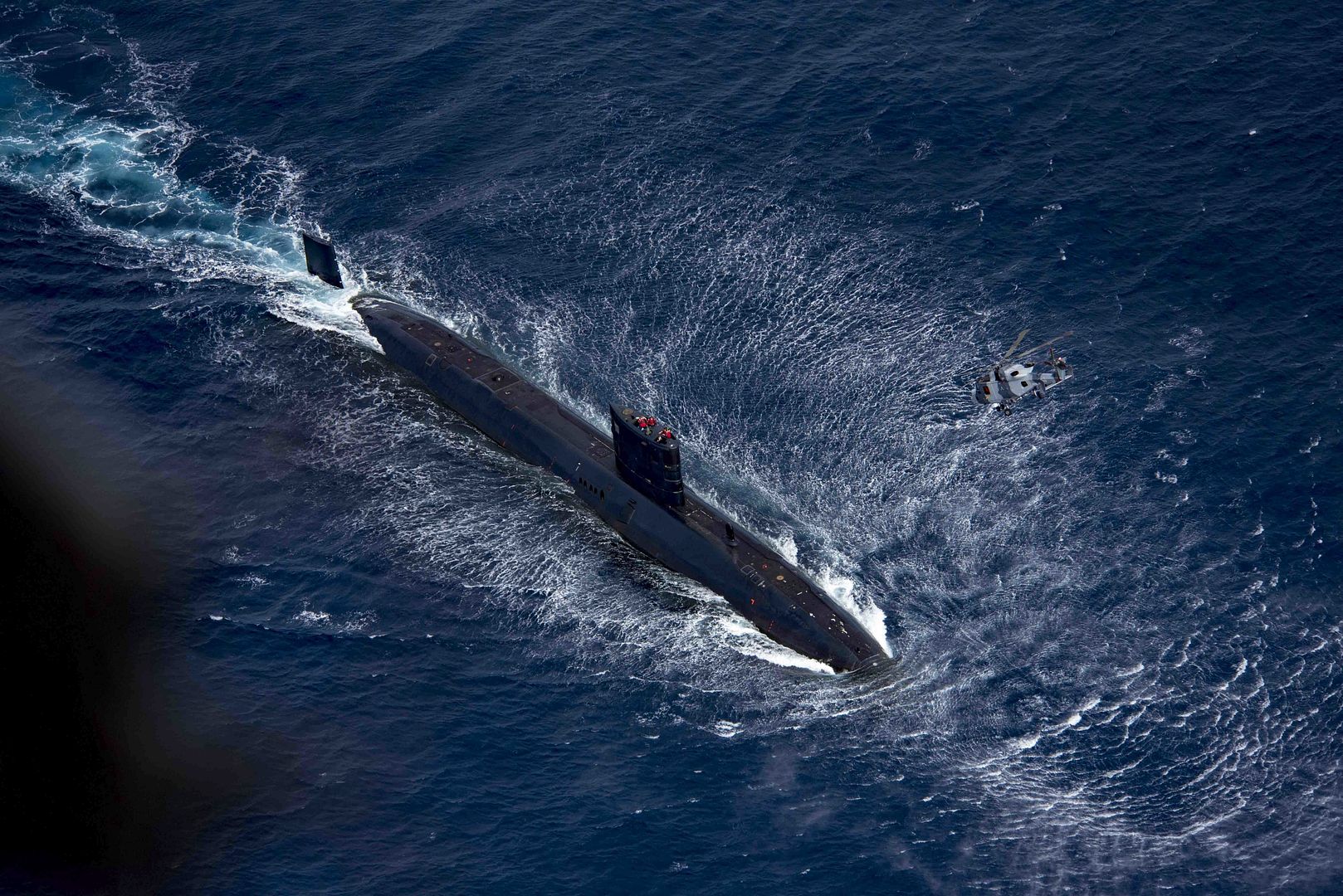
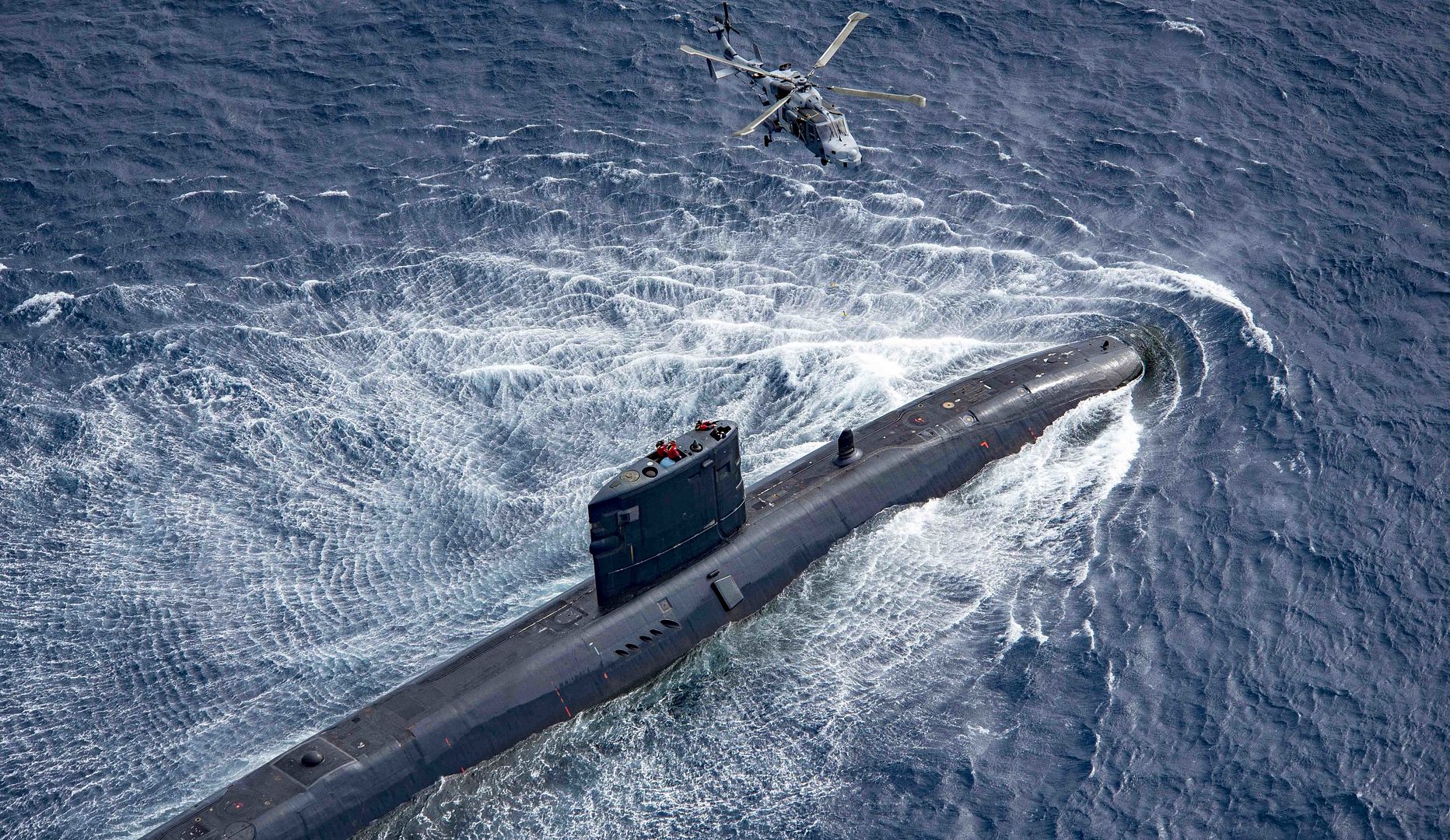
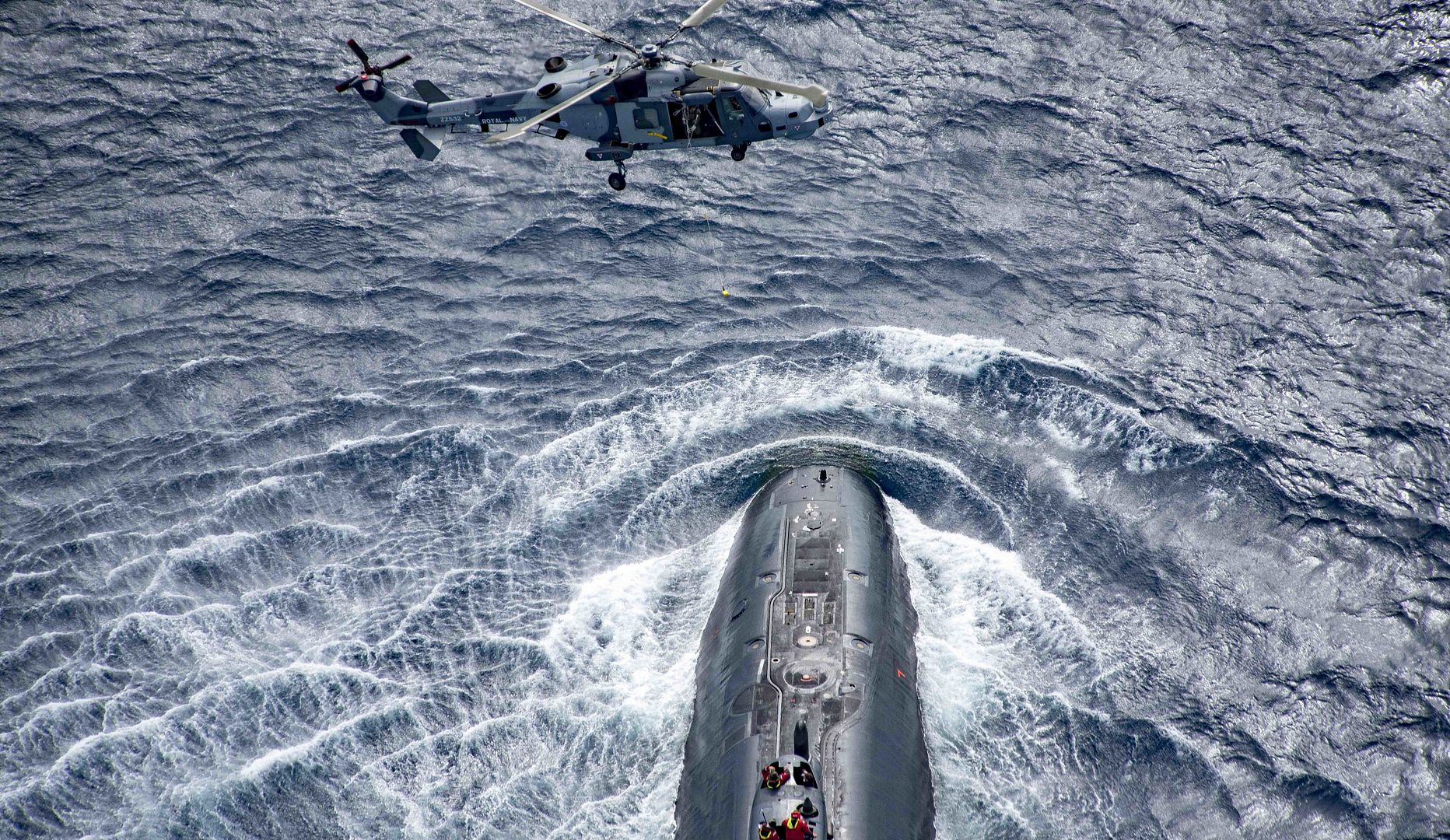
ATLANTIC OCEAN (Aug. 4, 2017) An F/A-18C Hornet assigned to the ?Ragin? Bulls? of Strike Fighter Squadron (VFA) 37 takes off from the Nimitz-class aircraft carrier USS George H.W. Bush (CVN 77) during exercise Saxon Warrior 2017. The U.S. and United Kingdom co-hosted carrier strike group exercise demonstrates interoperability and capability to respond to crises and deter potential threats. (U.S. Navy photo by Mass Communication Specialist 3rd Class Mario Coto/Released)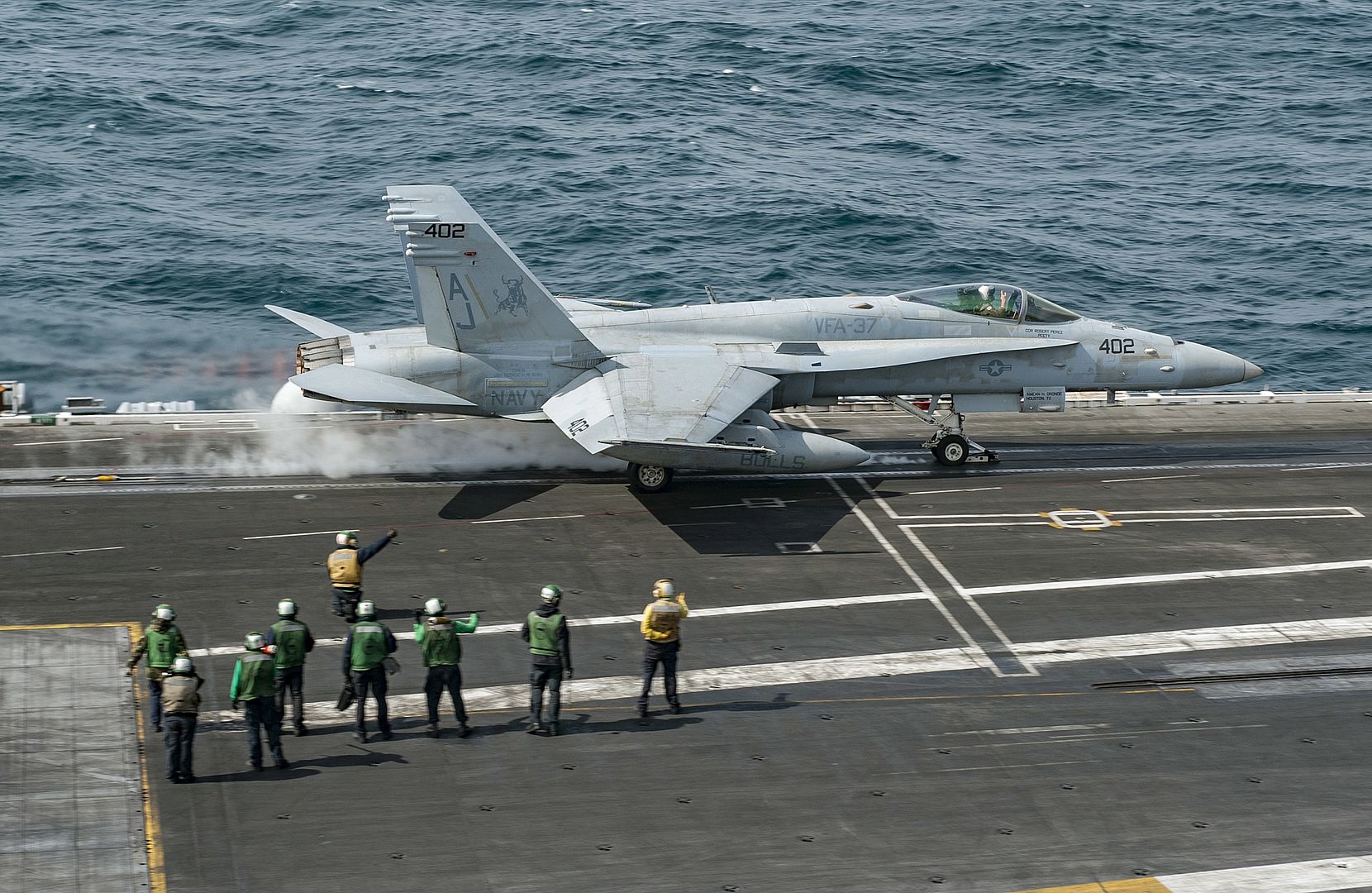
ATLANTIC OCEAN (Aug. 5, 2017) An F/A-18E Super Hornet assigned to the "Tomcatters" of Strike Fighter Squadron (VFA) 31, bottom, and an F/A-18F Super Hornet assigned to the "Blacklions" of VFA-213 fly in formation above the HMS Queen Elizabeth (R08) during exercise Saxon Warrior 2017. The U.S. and U.K. co-hosted carrier strike group exercise demonstrates interoperability and capability to respond to crises and deter potential threats. (U.S. Navy photo by Capt. Jim McCall/Released)
A U.S. Marine F/A-18 Hornet departs after receiving fuel from a KC-135 Stratotanker assigned to the 340th Expeditionary Air Refueling Squadron during a mission in support of Operation Inherent Resolve Aug. 4, 2017. The F-18 is capable across the full mission spectrum: air superiority, fighter escort, reconnaissance, aerial refueling, close air support, air defense suppression as well as day and night precision strikes. (U.S. Air Force photo's by Staff Sgt. Michael Battles)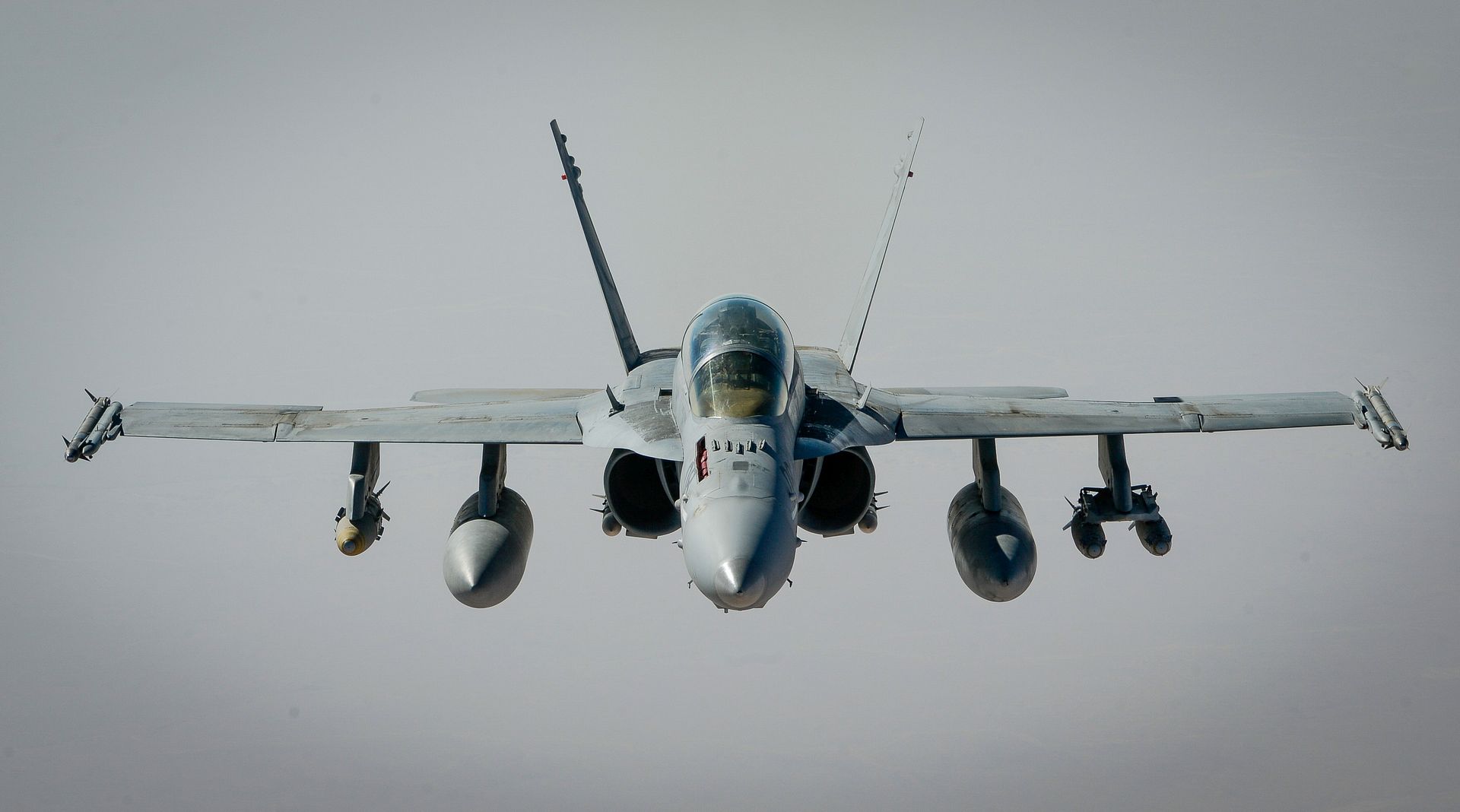
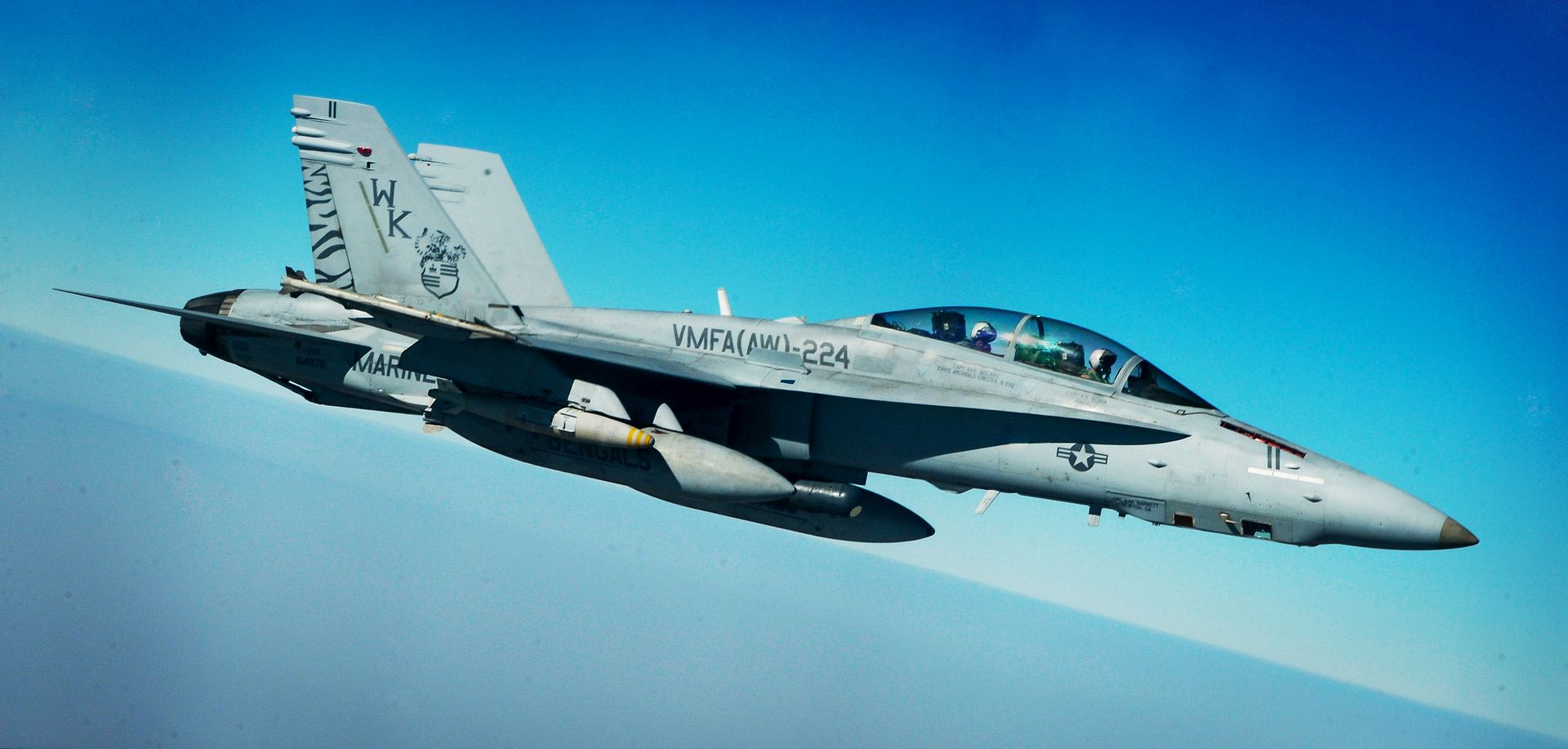
-
 Main AdminU.S. Air Force Capt. Scott Brenner, left, a KC-135 Stratotanker pilot assigned to the 54th Air Refueling Squadron, Altus Air Force Base, Okla., conducts pre-flight checks before a refueling sortie during Exercise Mobility Guardian at Joint Base Lewis-McChord, Wash., Aug. 8, 2017. More than 3,000 Airmen, Soldiers, Sailors, Marines and international partners converged on the state of Washington in support of Exercise Mobility Guardian. The exercise is intended to test the abilities of the Mobility Air Forces to execute rapid global mobility missions in dynamic, contested environments.
Main AdminU.S. Air Force Capt. Scott Brenner, left, a KC-135 Stratotanker pilot assigned to the 54th Air Refueling Squadron, Altus Air Force Base, Okla., conducts pre-flight checks before a refueling sortie during Exercise Mobility Guardian at Joint Base Lewis-McChord, Wash., Aug. 8, 2017. More than 3,000 Airmen, Soldiers, Sailors, Marines and international partners converged on the state of Washington in support of Exercise Mobility Guardian. The exercise is intended to test the abilities of the Mobility Air Forces to execute rapid global mobility missions in dynamic, contested environments.
(U.S. Air Force photo by Tech. Sgt. Larry E. Reid Jr.)
A U.S. Air Force B-1B Lancer assigned to the 37th Expeditionary Bomb Squadron, deployed from Ellsworth Air Force Base, South Dakota, takes off from Andersen Air Force Base, Guam, for a 10-hour mission, flying in the vicinity of Kyushu, Japan, the East China Sea, and the Korean peninsula, Aug. 7, 2017 (HST). During the mission, two B-1s were joined by Japan Air Self-Defense Force F-15s as well as Republic of Korea Air Force KF-16 fighter jets, performing two sequential bilateral missions. These flights with Japan and the Republic of Korea (ROK) demonstrate solidarity between Japan, ROK and the U.S. to defend against provocative and destabilizing actions in the Pacific theater. (U.S. Air Force photo/Tech. Sgt. Richard P. Ebensberger)
A U.S. Air Force B-1B Lancer assigned to the 37th Expeditionary Bomb
Squadron, deployed from Ellsworth Air Force Base, South Dakota, refuels during a 10-hour mission from Andersen Air Force Base, Guam, flying in the vicinity
of Kyushu, Japan, the East China Sea, and the Korean peninsula, Aug. 7,
2017 (HST). During the mission, two B-1s were joined by Japan Air Self-Defense
Force F-15s as well as Republic of Korea Air Force KF-16 fighter jets, performing two
sequential bilateral missions. These flights with Japan and the Republic of
Korea (ROK) demonstrate solidarity between Japan, ROK and the U.S. to defend
against provocative and destabilizing actions in the Pacific theater. (U.S. Air Force photo/Airman 1st Class Gerald Willis)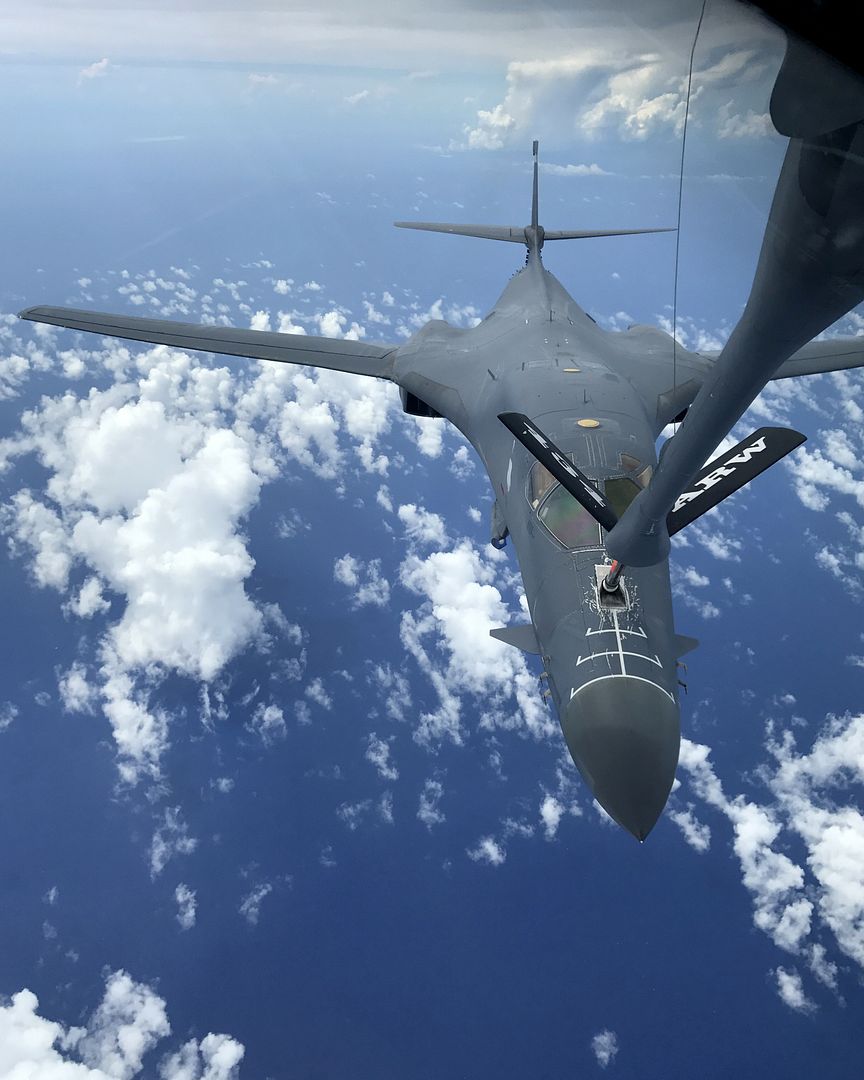
Two U.S. Air Force B-1B Lancers assigned to the 37th Expeditionary Bomb Squadron, deployed from Ellsworth Air Force Base, South Dakota, flew from Andersen Air Force Base, Guam, for a 10-hour mission, flying in the vicinity of Kyushu, Japan, the East China Sea, and the Korean peninsula, Aug. 7, 2017 (HST). During the mission, the B-1s were joined by Japan Air Self-Defense Force F-15s as well as Republic of Korea Air Force KF-16 fighter jets, performing two sequential bilateral missions. These flights with Japan and the Republic of Korea (ROK) demonstrate solidarity between Japan, ROK and the U.S. to defend against provocative and destabilizing actions in the Pacific theater. (Courtesy photo)
A U.S. Coast Guard C-130 flies above the 75th Anniversary of the Battle for Guadalcanal ceremony at the U.S. Memorial Skyline Hill at Honiara, Guadalcanal in the Solomon Islands, on Aug. 7, 2017. The Coast Guard participated in landing operations during the initial invasion of the island in August 1942. (U.S. Army photo by Staff Sgt. Armando R. Limon, 3rd Brigade Combat Team, 25th Infantry Division)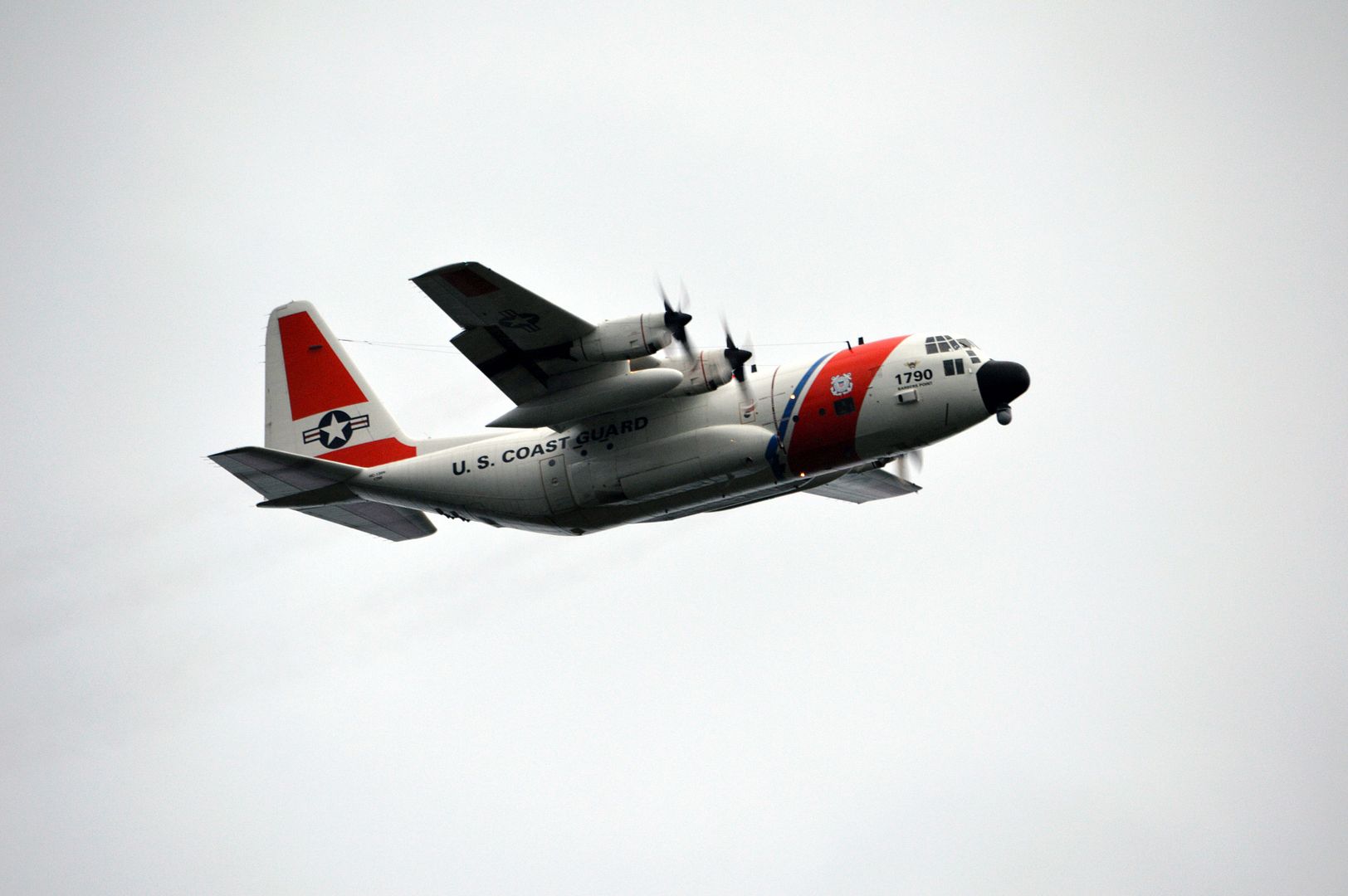
A B-52 Bomber flies over an Eielson Air Force Base, Idaho, August 8, 2017. Airmen from the 391st from Mountain Home Air Force Base, Idaho demonstrate their tactical prowess during Red Flag Alaska 17-3. (U.S. Air Force photo by Senior Airman Malissa Armstrong/Released)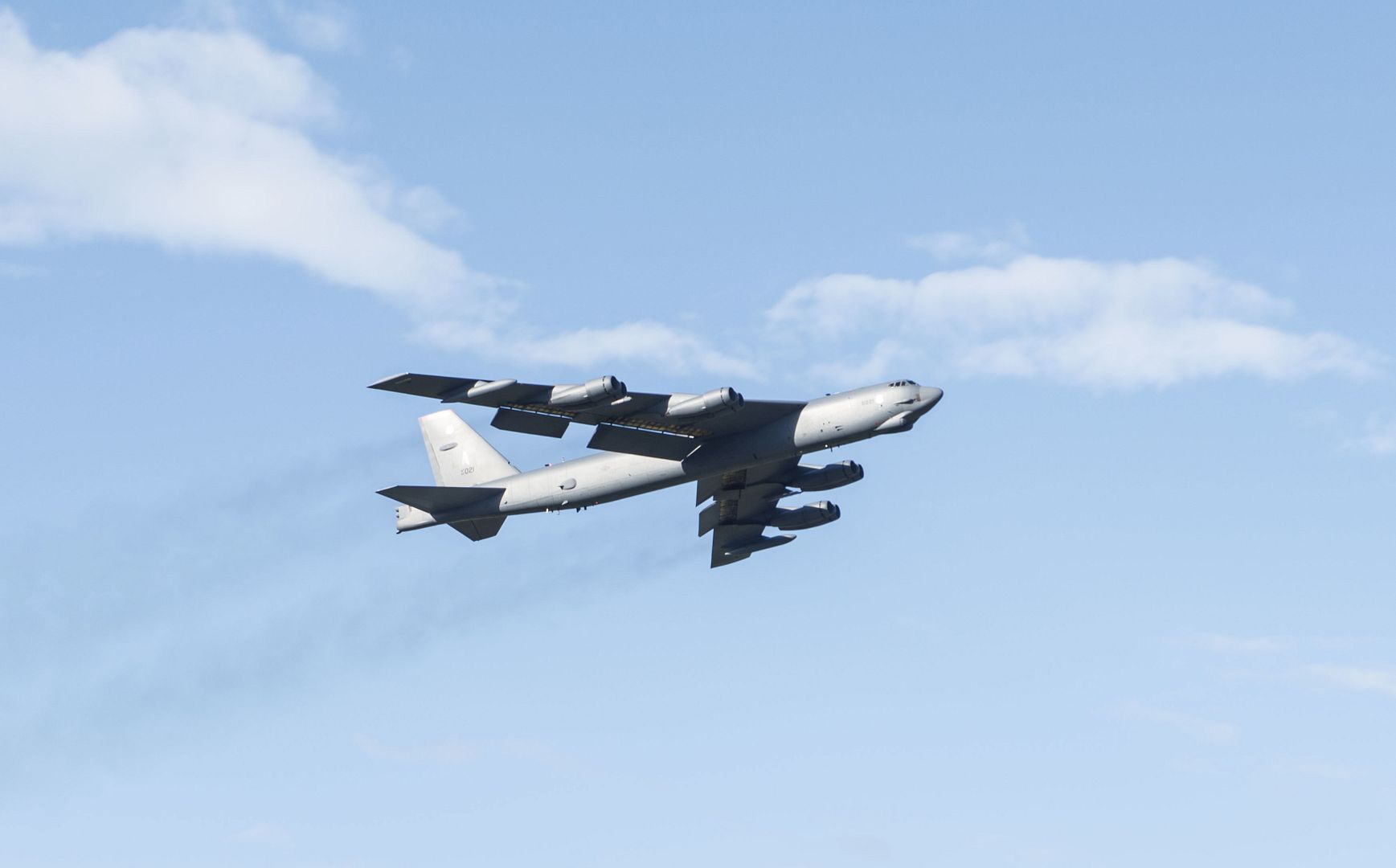
An F-15E Strike Eagle taxis before take-off August 8, 2017, at August 8, 2017. Airmen from the 391st from Mountain Home Air Force Base, Idaho demonstrate their tactical prowess during Red Flag Alaska 17-3. (U.S. Air Force photo by Senior Airman Malissa Armstrong/Released)
E-2D Advanced Hawkeye aircraft with Carrier Airborne Early Warning Squadron (VAW) 125 return to Marine Corps Air Station Iwakuni, Japan, Aug. 9, 2017. VAW-125 deployed aboard the USS Ronald Reagan (CVN 76) for the first time with Carrier Air Wing (CVW) 5. The E-2D is the latest variant of the long-running E-2 Hawkeye series of aircraft, which employs long-range radar and electronic communications capabilities to oversee the battlespace and detect threats beyond the sensor range of other friendly units. (U.S. Marine Corps Photo by Lance Cpl. Jacob A. Farbo)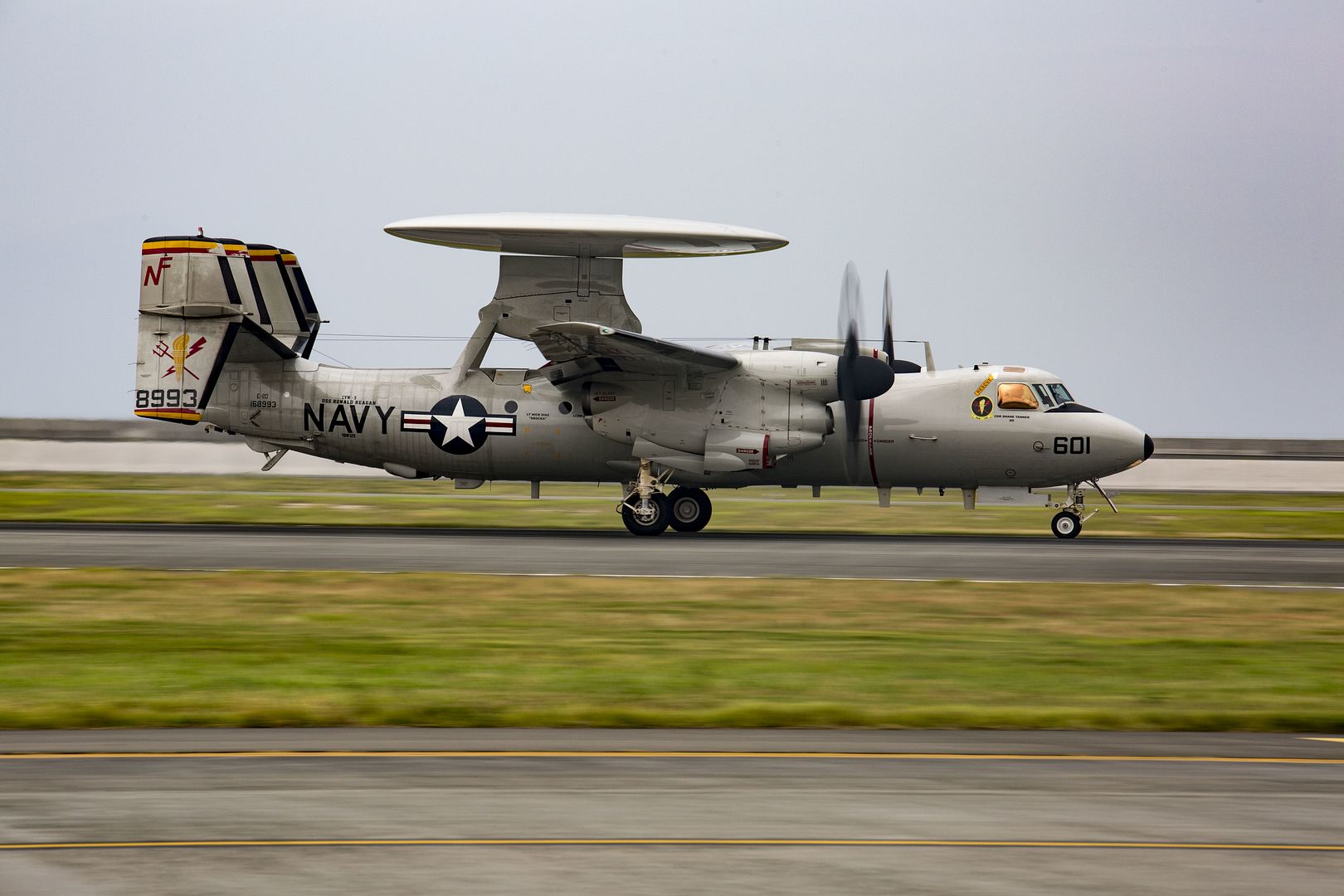
E-2D Advanced Hawkeye aircraft with Carrier Airborne Early Warning Squadron (VAW) 125 return to Marine Corps Air Station Iwakuni, Japan, Aug. 9, 2017. VAW-125 deployed aboard the USS Ronald Reagan (CVN 76) for the first time with Carrier Air Wing (CVW) 5. The E-2D is the latest variant of the long-running E-2 Hawkeye series of aircraft, which employs long-range radar and electronic communications capabilities to oversee the battlespace and detect threats beyond the sensor range of other friendly units.
Photo by Lance Cpl. Gabriela Garcia-Herrera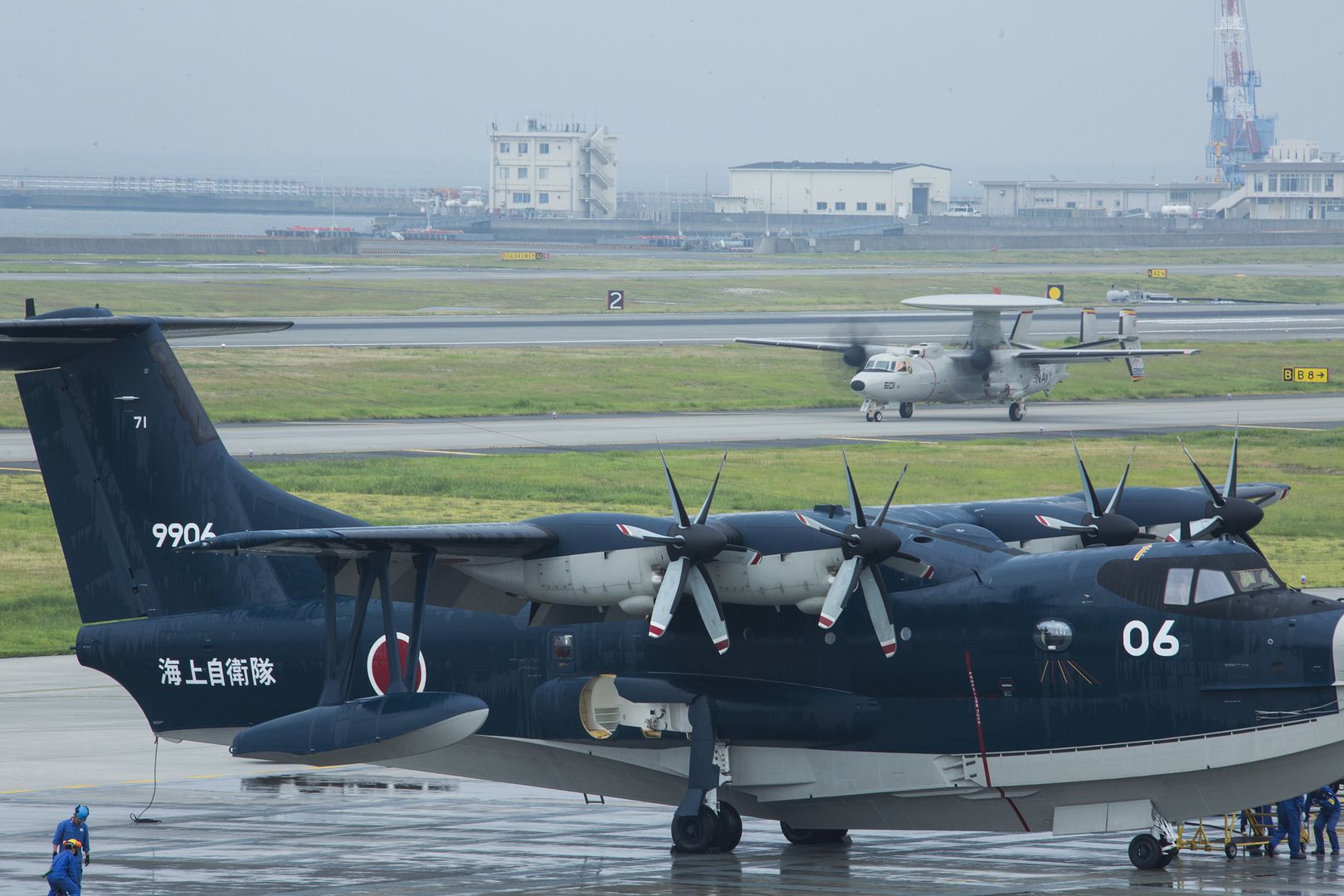
A British Royal Air Force FGR4 Eurofighter Typhoon receives fuel from a
U.S.KC-10 above Southwest Asia, Aug. 2, 2017. The FGR4 is a 'swing-role'
aircraft providing simultaneously deployable air-to-air and air-to-surface
capabilities. The RAF fleet has flown more than 2500 Fast Jet combat in
support of Operation Inherent Resolve since August 2014. The U.K. also
provides significant contributions of Intelligence, Surveillance and
Reconnaissance, air refueling and air mobility support in the fight against
ISIS. (U.S. Air Force photo by Senior Airman Preston Webb)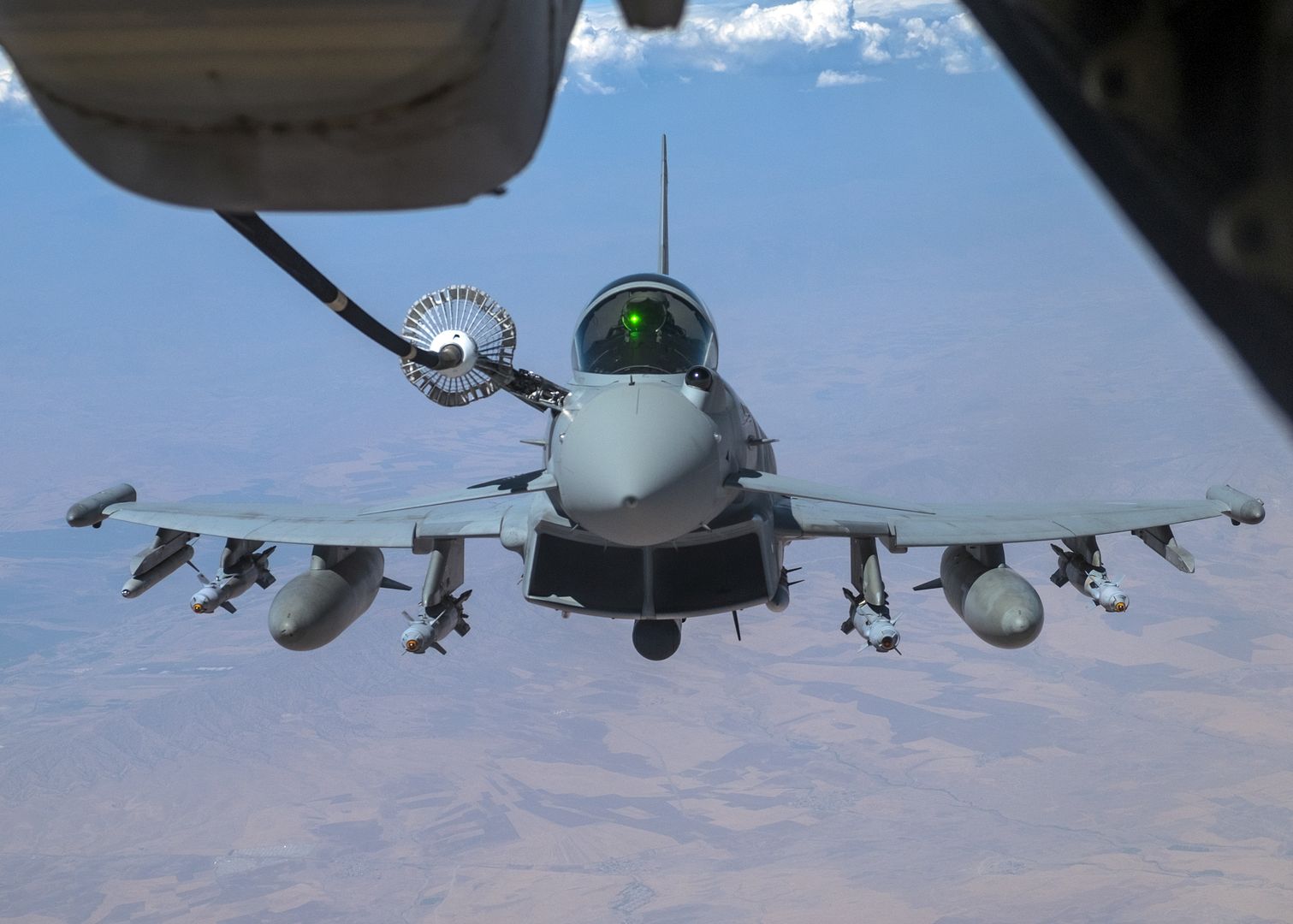
Members of the 908th Expeditionary Air Refueling Squadron prepare to offload fuel August 2, 2017, above southwest Asia. Since April, the 908 EARS enabled approximately 5,300 strikes during 1,200 sorties and supported the offload of 96 million pounds of fuel to more than 8,000 aircraft. (U.S. Air Force photo by Senior Airman Preston Webb)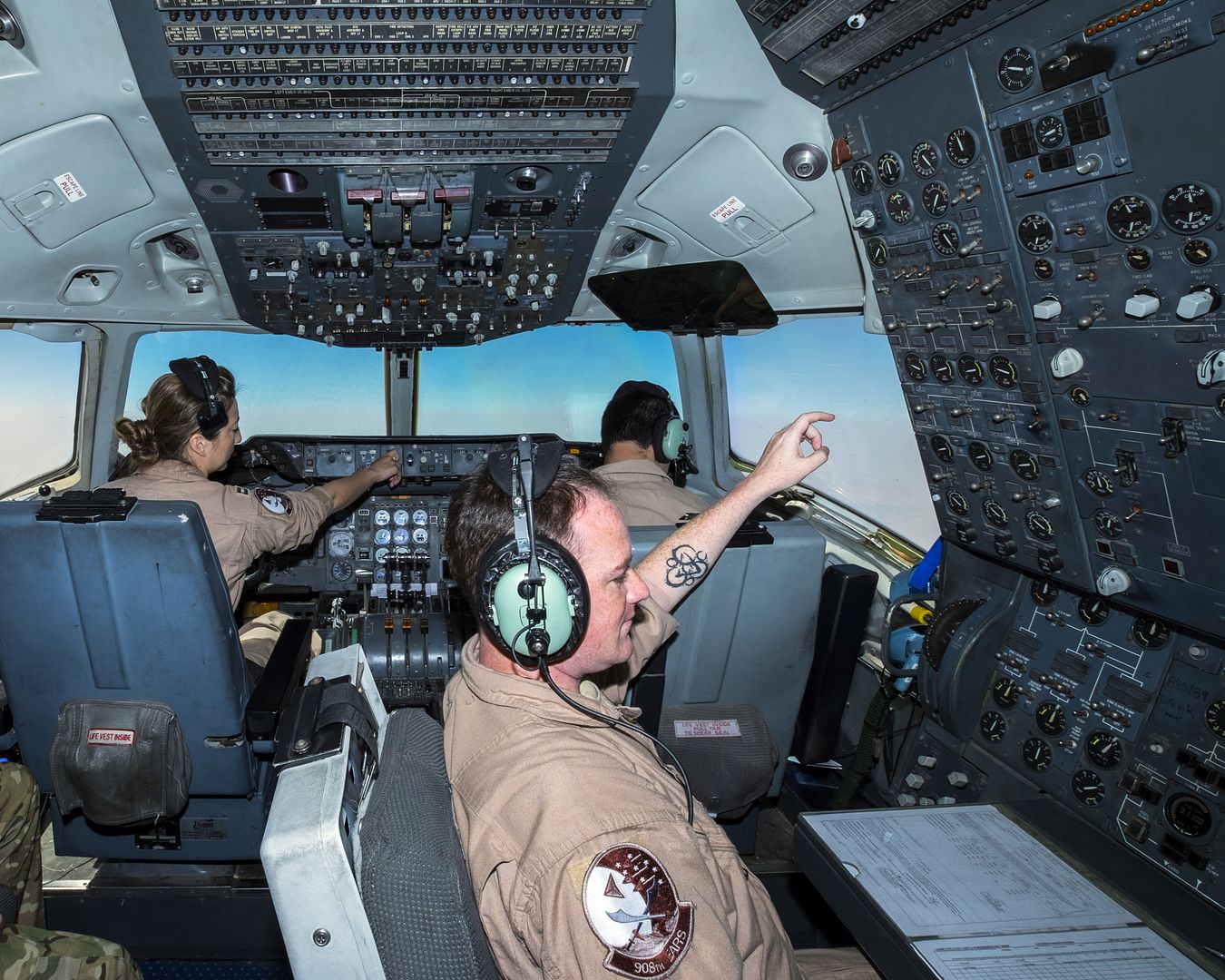
August 8, 2017 Montr?al Commercial Aircraft, Press Release
Bombardier Commercial Aircraft celebrated another important milestone for the C Series aircraft program with the first revenue flight into London City Airport, a Swiss International Airlines (SWISS) CS100 jetliner from Zurich.
?We are proud to see the C Series aircraft in SWISS livery landing at London City Airport for the first time. This new milestone continues the momentum propelling the C Series aircraft program,? said Fred Cromer, President, Bombardier Commercial Aircraft. ?The CS100 aircraft has the perfect combination of steep approach and short field capability as well as longer range. These attributes provide airlines with the opportunity to reach new markets from London City Airport and other challenging airports around the globe, generating an increased level of interest in the C Series program.?
?One of the key aspects of the C Series aircraft, is the fact that it is designed for operations at challenging city-centre airports. Thanks to leading-edge innovation, the C Series is by far the most community and environmentally-friendly aircraft with a very low-noise and low-emission footprint. It also happens to be a more economical and passenger-friendly option than other aircraft in its class,? said Rob Dewar, Vice President, C Series Aircraft Program, Bombardier Commercial Aircraft.
?As part of our fleet modernization plan, we are gradually replacing the Avro aircraft with the C Series and today, we start with our CS100 flight operations from Zurich to London City as the world?s first airline. We are excited to offer our guests the benefits of the C Series such as more comfort on this important route,? said Peter Koch, C Series Fleet Chief, SWISS.
As of now, SWISS will operate regularly to London City Airport from its main hub in Zurich with a CS100 and from Geneva as of summer 2018.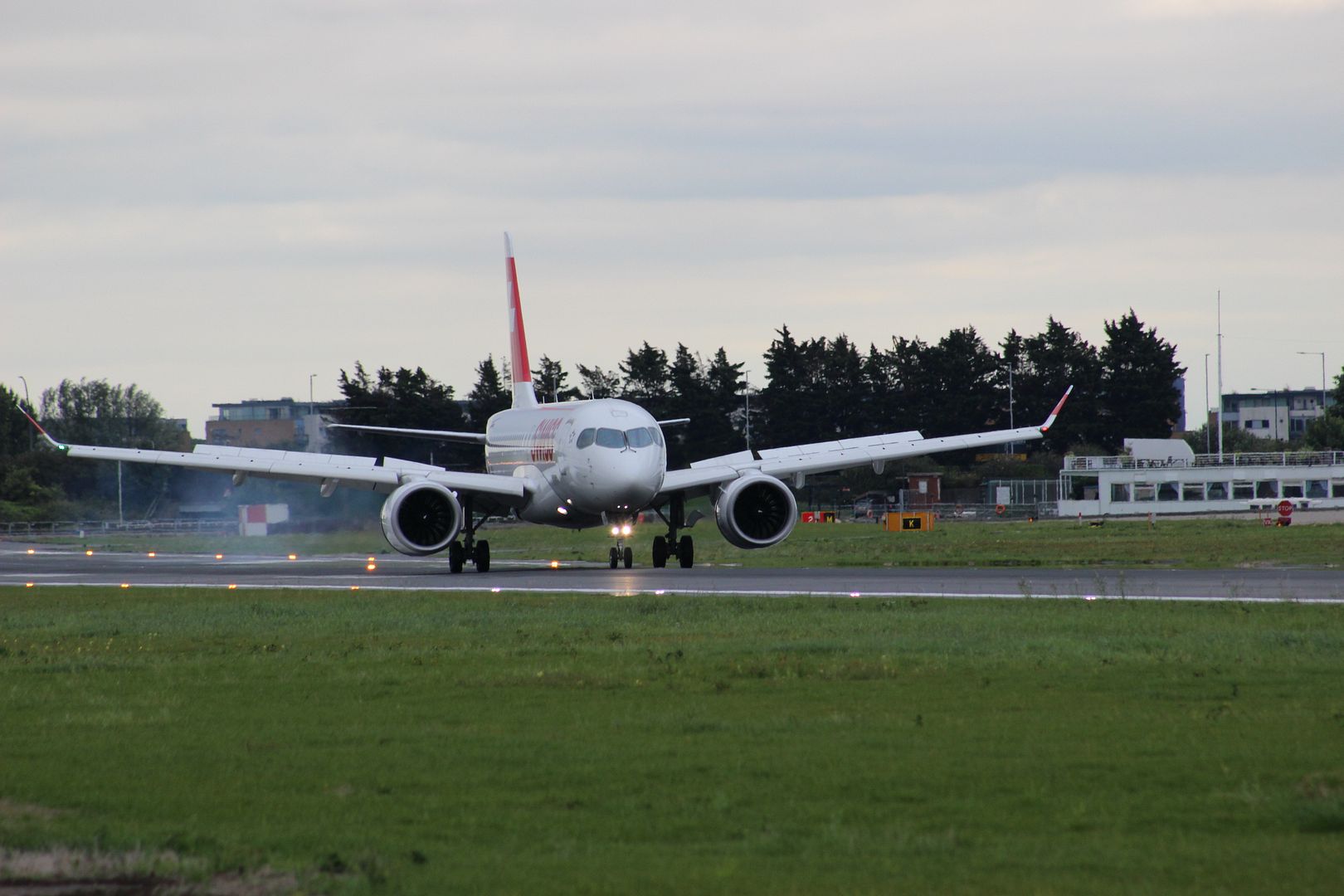
?The inaugural commercial flight of the Bombardier C Series by SWISS is a landmark moment for London City Airport, and the culmination of five years preparation to bring this next generation aircraft into operation,? said Richard Hill, Chief Commercial Officer at London City Airport. ?The introduction of the C Series is an important part of London City?s growth plans and a boon for the UK aviation industry, with its wings manufactured at Bombardier?s Belfast factory. As one of the quietest and most fuel efficient commercial jets in its class, and thanks to its longer range, we can also unlock opportunities for new routes, including the possibility of non-stop services to the east coast of USA, Russia, the Gulf and Middle East.?
The C Series is now the largest passenger aircraft certified to operate from the London City Airport with the longest range. A single-class CS100 aircraft can also fly 2,200 nm (4,074 km) from London City. The CS100 jetliner is the only commercial aircraft that can fly London City-New York non-stop, in an all-business class configuration.
The C Series aircraft is manufactured by the C Series Aircraft Limited Partnership, an affiliate of the Bombardier Commercial Aircraft segment of Bombardier Inc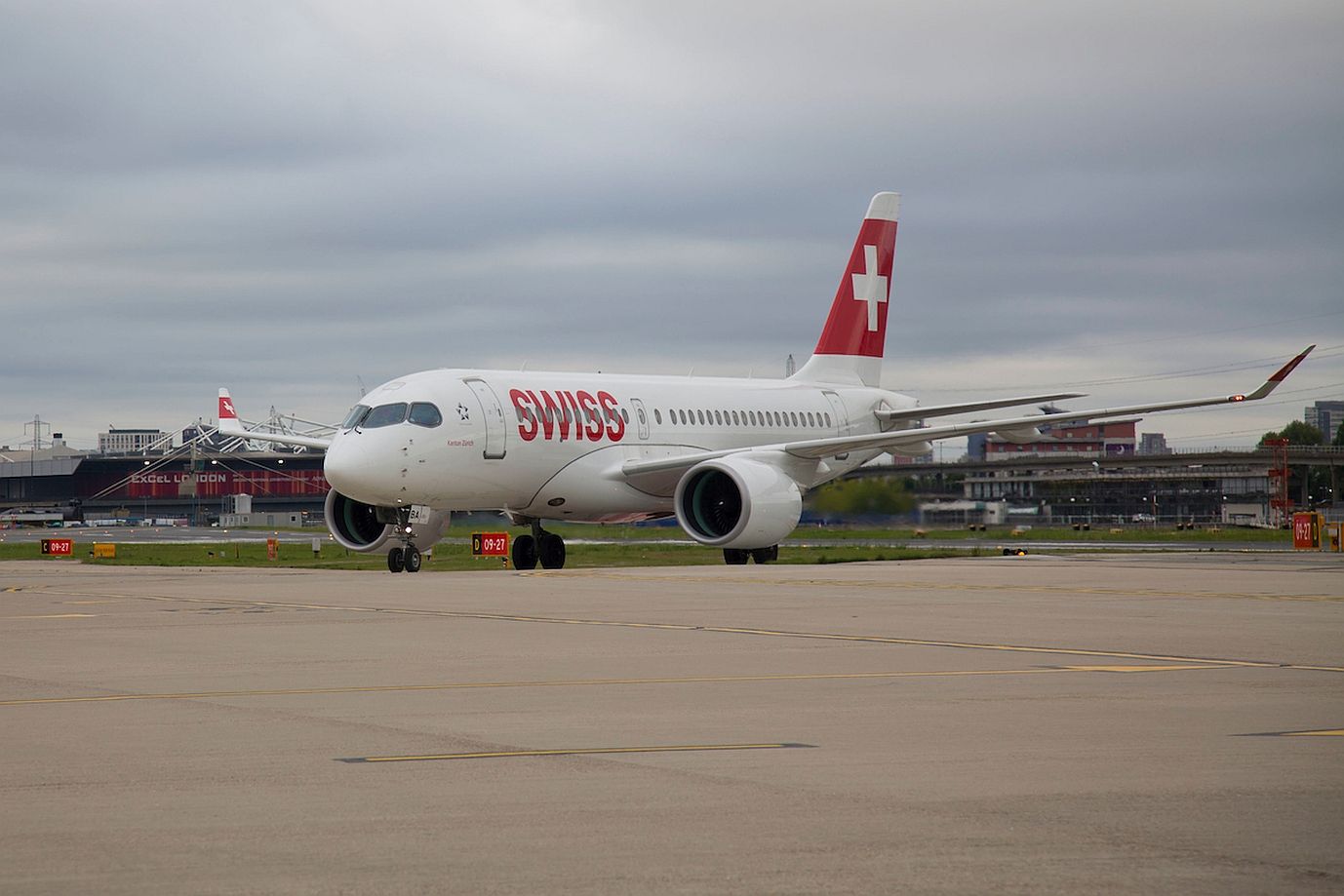
-
 Main AdminATLANTIC OCEAN (Aug. 8, 2017) The Royal Navy Duke-class frigates HMS Iron Duke (F 234), left, and HMS Westminster (F 237), the Royal Norwegian Navy frigate Helge Ingstad (F 313), The Royal Navy aircraft carrier HMS Queen Elizabeth (R08), the U.S. Navy guided-missile destroyer USS Donald Cook (DDG 75), the Nimitz-class aircraft carrier USS George H.W. Bush (CVN 77), and the guided-missile cruiser USS Philippine Sea (CG 58) are underway in formation during exercise Saxon Warrior 2017. The U.S. and United Kingdom co-hosted carrier strike group exercise demonstrates interoperability and capability to respond to crises and deter potential threats. (U.S. Navy photo by Mass Communication Specialist 2nd Class Michael B. Zingaro/Released)
Main AdminATLANTIC OCEAN (Aug. 8, 2017) The Royal Navy Duke-class frigates HMS Iron Duke (F 234), left, and HMS Westminster (F 237), the Royal Norwegian Navy frigate Helge Ingstad (F 313), The Royal Navy aircraft carrier HMS Queen Elizabeth (R08), the U.S. Navy guided-missile destroyer USS Donald Cook (DDG 75), the Nimitz-class aircraft carrier USS George H.W. Bush (CVN 77), and the guided-missile cruiser USS Philippine Sea (CG 58) are underway in formation during exercise Saxon Warrior 2017. The U.S. and United Kingdom co-hosted carrier strike group exercise demonstrates interoperability and capability to respond to crises and deter potential threats. (U.S. Navy photo by Mass Communication Specialist 2nd Class Michael B. Zingaro/Released)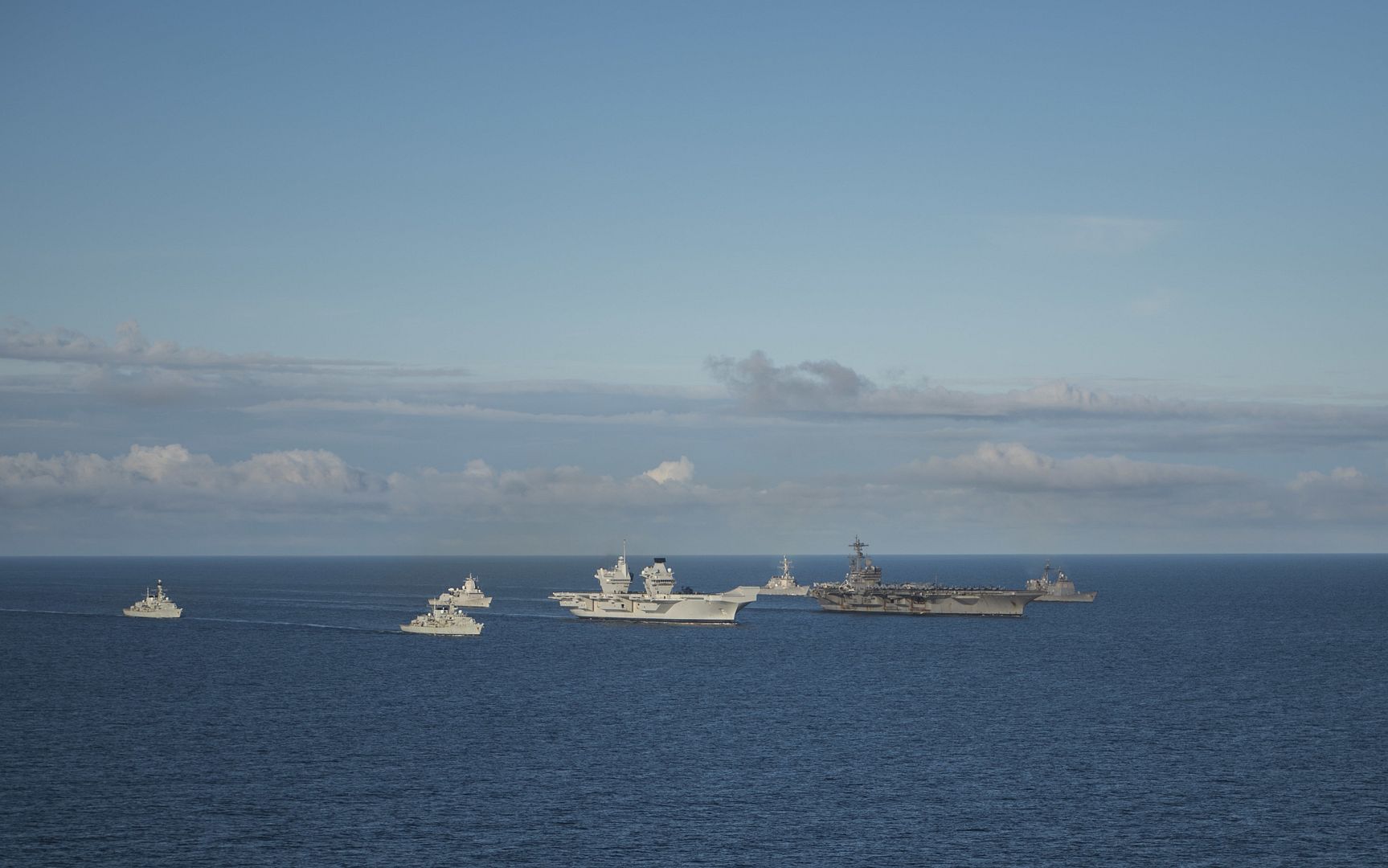
A C-130J Super Hercules sits on the flight line at Yokota Air Base, Japan, August 10, 2017. This is the fourth new C-130J delivered to Yokota from the Lockheed Martin facility. The new C-130J is 81% quieter during takeoff, 14% faster, can travel 1,287 km further, and can carry 4,090 kg more than its predecessor, the C-130H Hercules. (U.S. Air Force photo by Airman 1st Class Donald Hudson)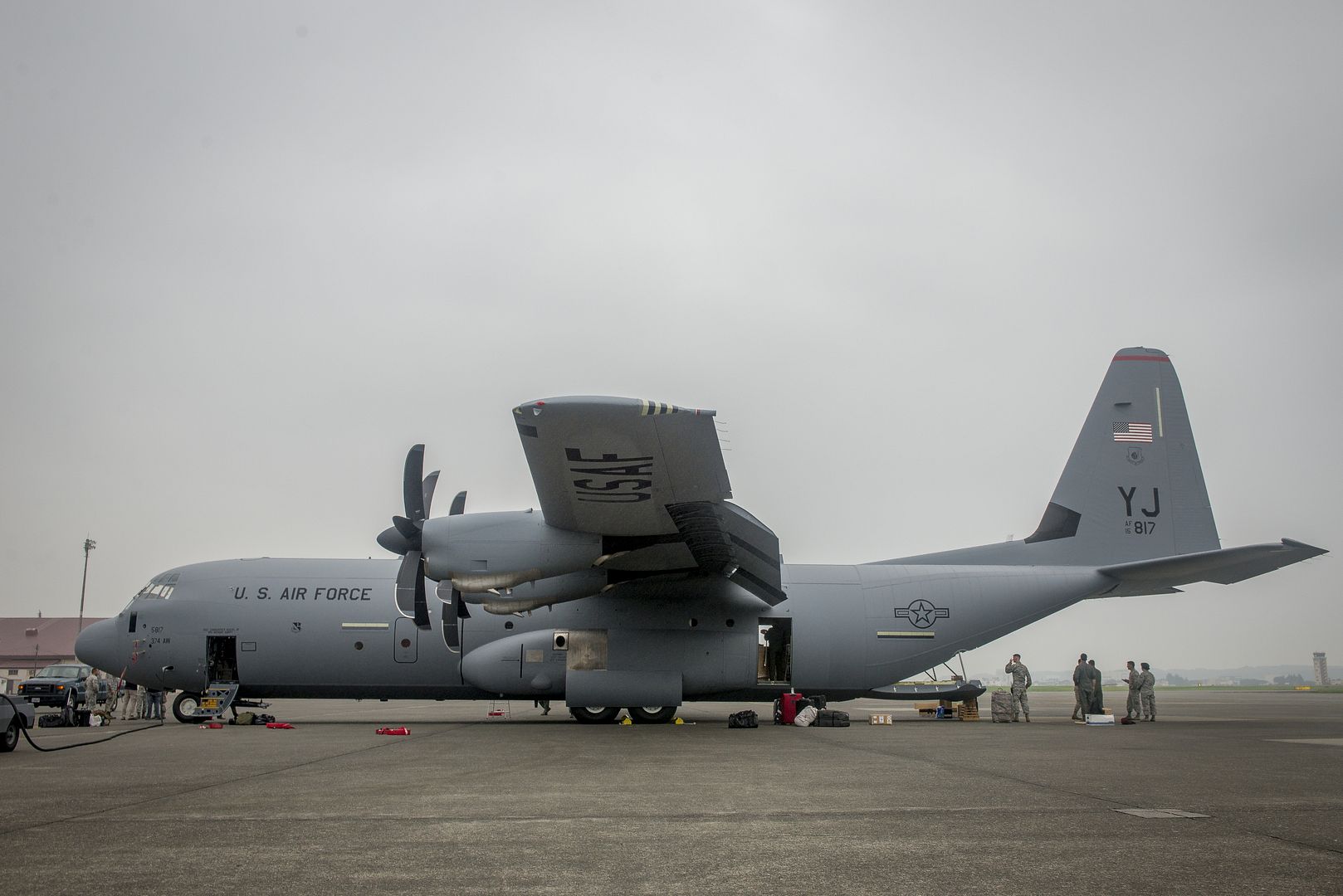
-
 Main AdminA US A-10 Thunderbolt II ?Warthog? belonging to the 175th Wing, Maryland Air National Guard, lands on a stretch of highway during an exercise near Jagala, Estonia on August 10, 2017. The exercise was a chance for the public to see NATO forces working together as a part of Operation Atlantic Resolve, which is a NATO mission involving the US and Europe in a combined effort to strengthen bonds of friendship and to promote peace. (Photo taken by Pfc. Nicholas Vidro, 7th Mobile Public Affairs Detachment.)
Main AdminA US A-10 Thunderbolt II ?Warthog? belonging to the 175th Wing, Maryland Air National Guard, lands on a stretch of highway during an exercise near Jagala, Estonia on August 10, 2017. The exercise was a chance for the public to see NATO forces working together as a part of Operation Atlantic Resolve, which is a NATO mission involving the US and Europe in a combined effort to strengthen bonds of friendship and to promote peace. (Photo taken by Pfc. Nicholas Vidro, 7th Mobile Public Affairs Detachment.)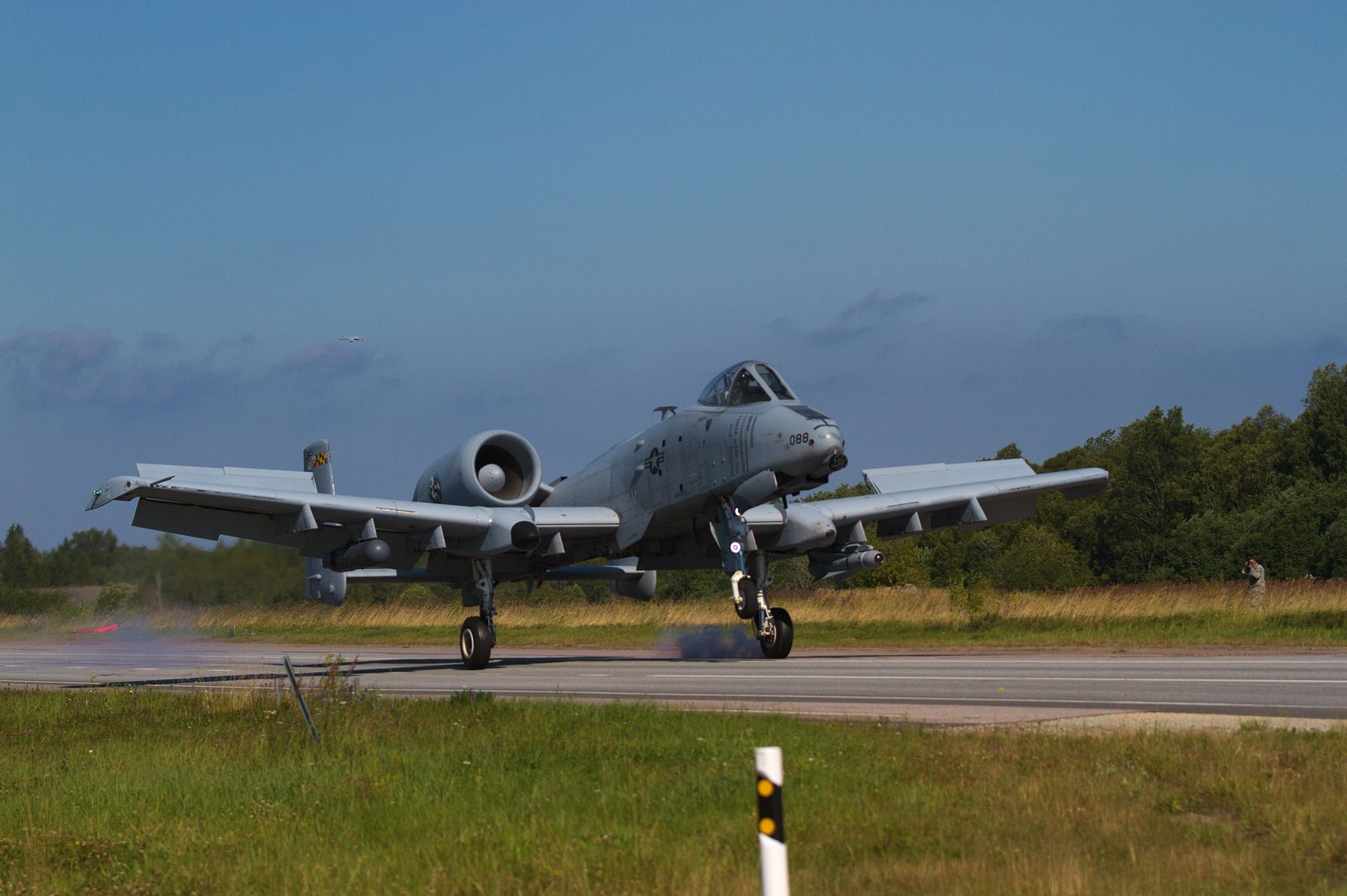
A U.S. Air Force C-17 Globemaster III, approaches a Royal Australian Air Force KC-30A Voyager for refuel during Exercise Mobility Guardian, near Joint Base Lewis-McChord, Wash. Aug. 10, 2017. More than 3,000 Airmen, Soldiers, Sailors, Marines and international partners converged on the state of Washington in support of Exercise Mobility Guardian. The exercise is intended to test the abilities of the Mobility Air Forces to execute rapid global mobility missions in dynamic, contested environments. (U.S. Air Force photo by Tech. Sgt. Larry E. Reid Jr.)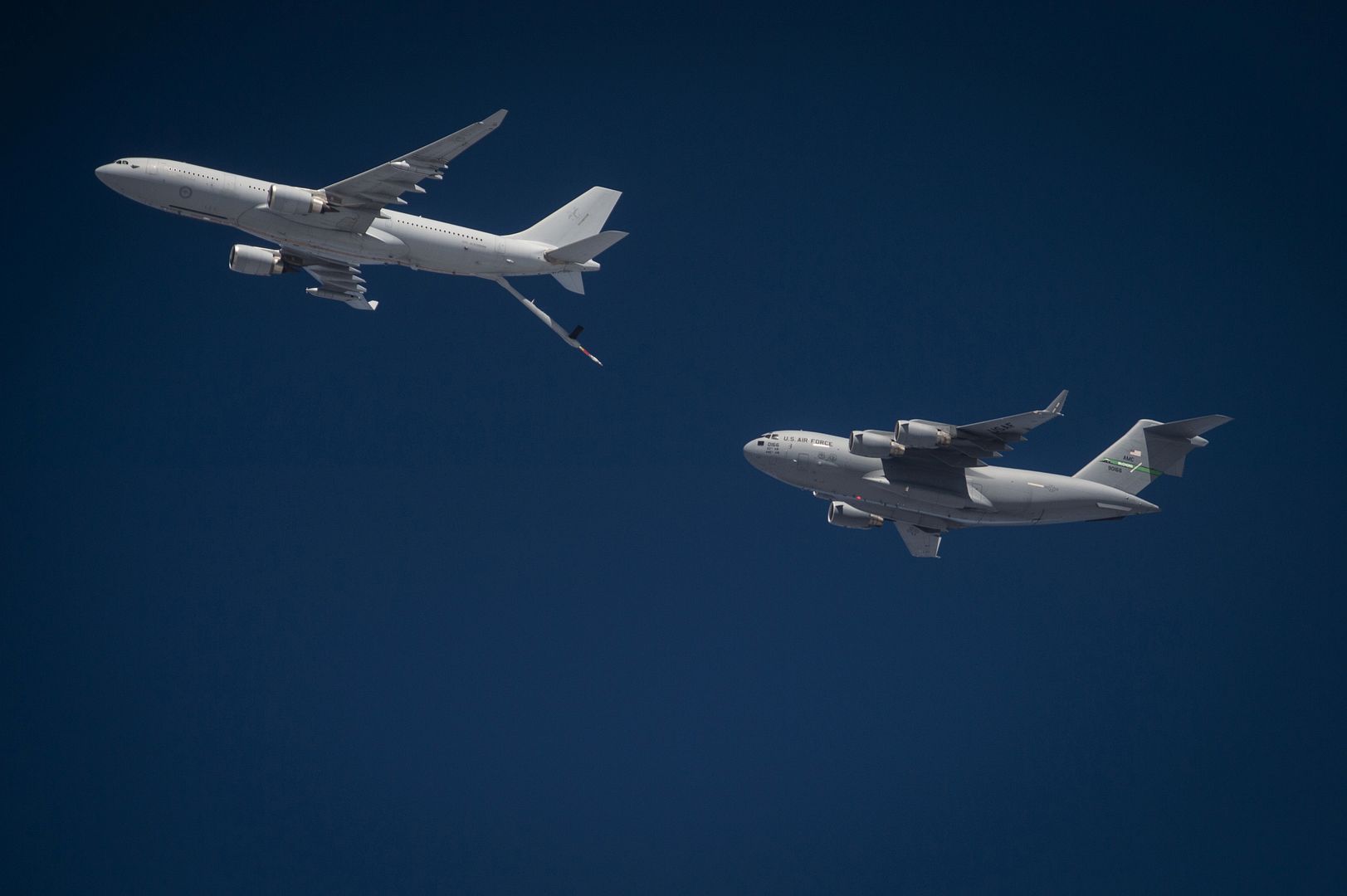
5TH FLEET AREA OF OPERATIONS (Aug. 8, 2017) Sailors attach a pendant to a Military Sealift Command SA 330 Puma on the flight deck of the Arleigh Burke-class guided-missile destroyer USS Howard (DDG 83) during a vertical replenishment. Howard is deployed in the 5th fleet area of operations conducting maritime security operations to reassure allies and partners, preserving freedom of navigation and maintaining the free flow of commerce. (U.S. Navy Photo by Mass Communication Specialist 2nd Class Tyler Preston/Released)
PACIFIC OCEAN (Aug. 8, 2017) Lance Cpl. Devin Cook, assigned to the Checkerboards of Marine Strike Fighter Attack Squadron (VMFA) 312, cleans an F/A 18C Hornet on the flight deck aboard the aircraft carrier USS Theodore Roosevelt (CVN 71). Theodore Roosevelt is underway conducting a composite training unit exercise (COMPTUEX) with the Theodore Roosevelt Carrier Strike Group in preparation for an upcoming deployment. COMPTUEX tests a carrier strike group?s mission-readiness and ability to perform as an integrated unit through simulated real-world scenarios. (U.S. Navy photo by Mass Communication Specialist 3rd Class Alex Corona/Released)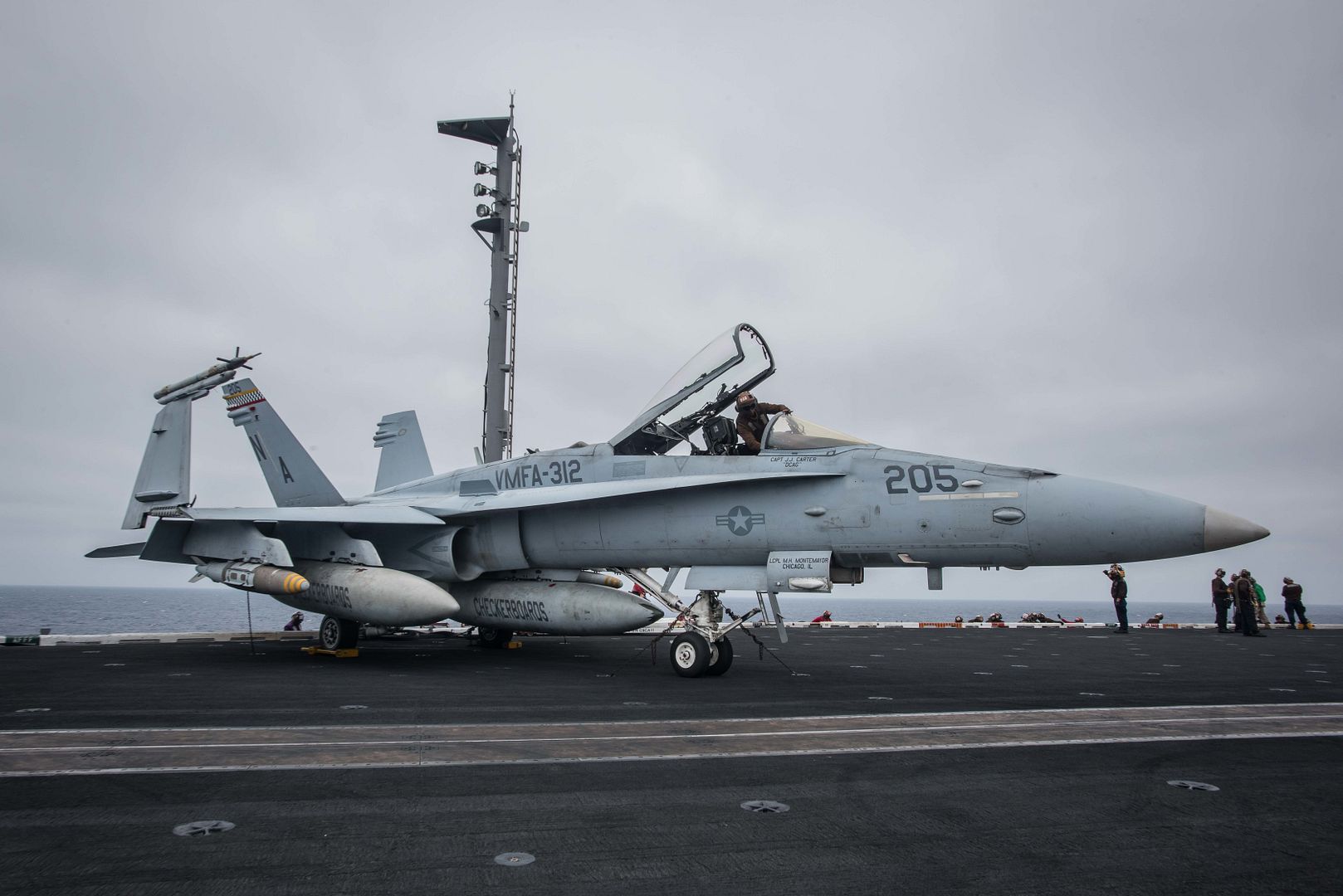
CORAL SEA (Aug. 9, 2017) An AV-8B Harrier assigned to the ?Tomcats? of Marine Attack Squadron (VMA) 311 lands on the flight deck of the amphibious assault ship USS Bonhomme Richard (LHD 6) following an air defense exercise. Bonhomme Richard is flagship of its expeditionary strike group, which is operating in the Indo-Asia-Pacific region to enhance partnerships and be a ready-response force for any type of contingency. (U.S. Navy photo by Mass Communication Specialist Cosmo Walrath/Released)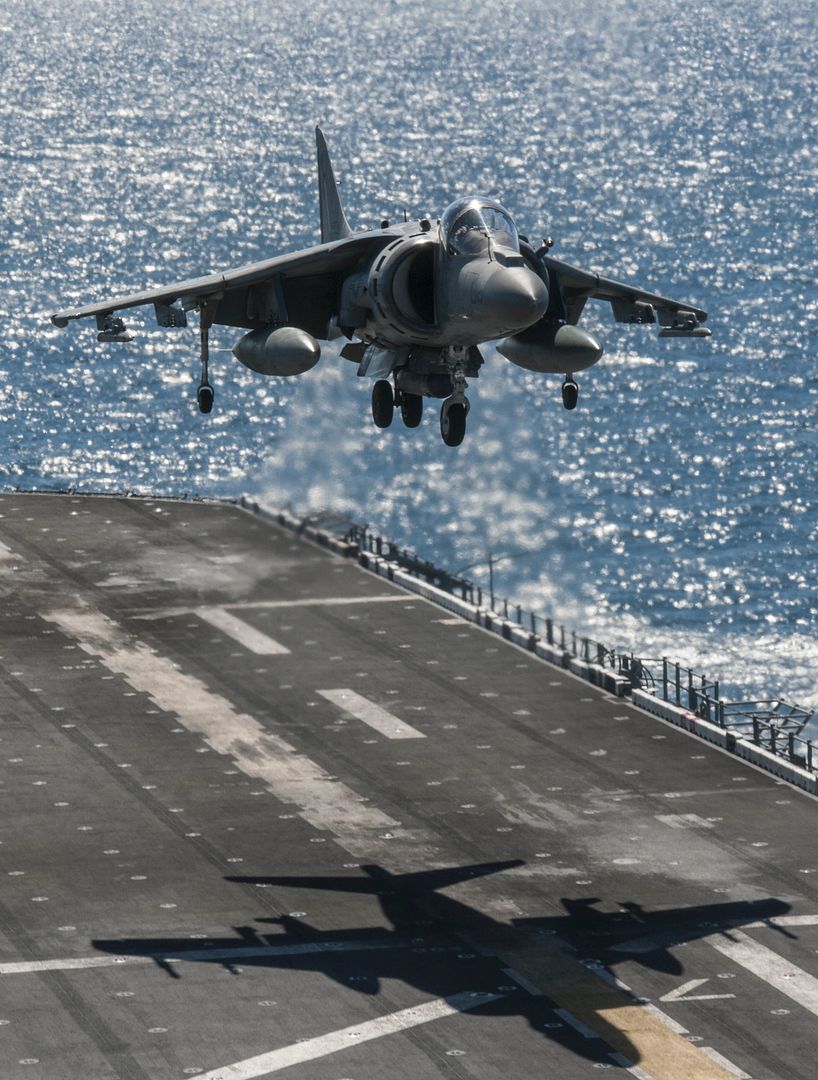
A B-52 Stratofortress receives fuel from a 908th Expeditionary Air Refueling Squadron KC-10 Extender during a sortie over Syria, Aug. 8, 2017. The use of aerial refueling gives the B-52 a range that is limited only by crew endurance. (U.S. Air Force photo by Staff Sgt. Marjorie A. Bowlden)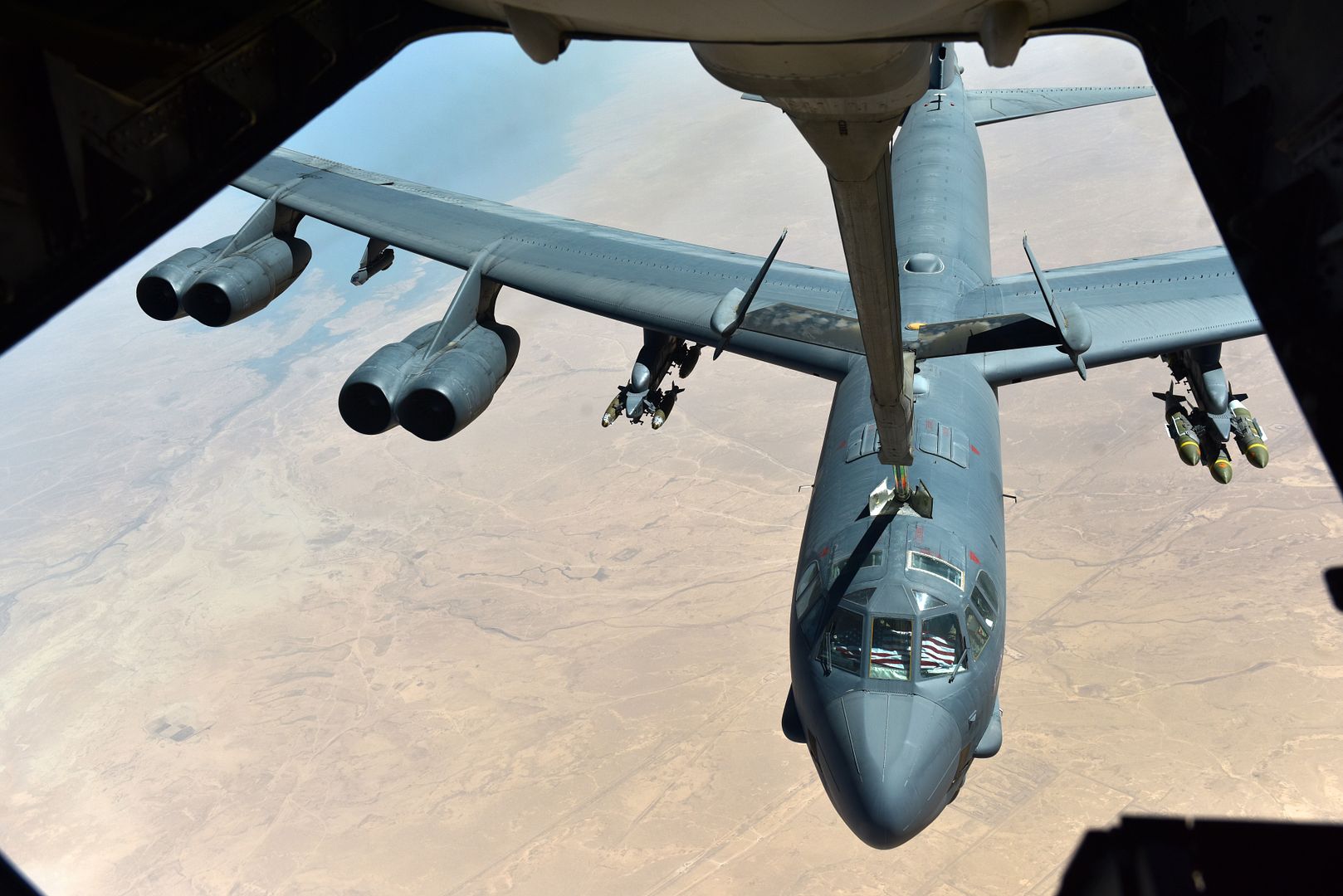
A B-52 Stratofortress waits to approach a 908th Expeditionary Air Refueling Squadron KC-10 Extender for refueling over Syria, Aug. 8, 2017. In a conventional conflict, the B-52 can perform strategic attack, close-air support, air interdiction, offensive counter-air and maritime operations. (U.S. Air Force photo by Staff Sgt. Marjorie A. Bowlden)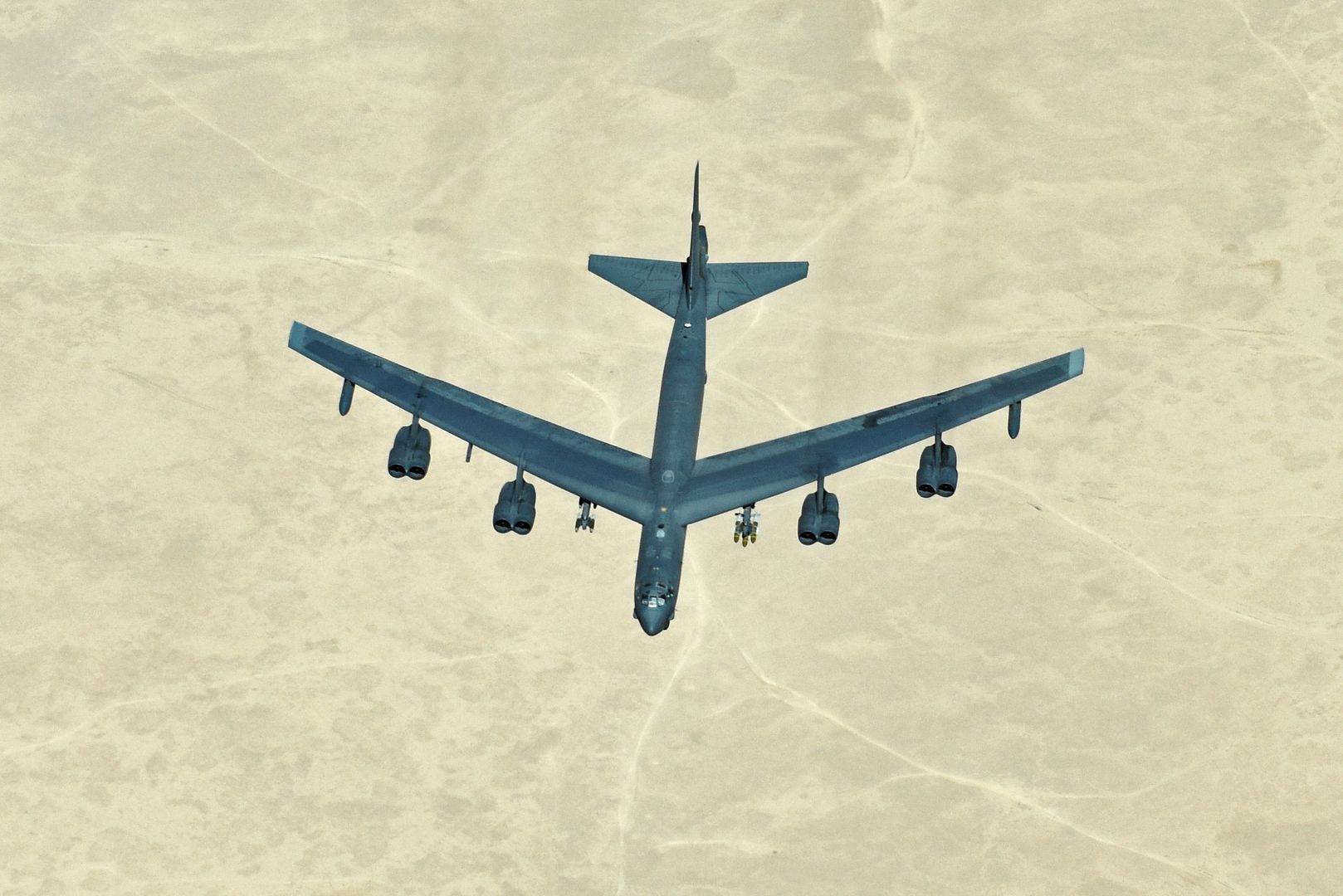
-
 Main AdminATLANTIC OCEAN (Aug. 8, 2017) The Royal Navy aircraft carrier HMS Queen Elizabeth (R08) transits alongside the Nimitz-class aircraft carrier USS George H.W. Bush (CVN 77) during exercise Saxon Warrior 2017. The United States and United Kingdom co-hosted carrier strike group exercise demonstrates interoperability and capability to respond to crises and deter potential threats. (U.S. Navy photo by Mass Communication Specialist 3rd Class Daniel Gaither/Released)
Main AdminATLANTIC OCEAN (Aug. 8, 2017) The Royal Navy aircraft carrier HMS Queen Elizabeth (R08) transits alongside the Nimitz-class aircraft carrier USS George H.W. Bush (CVN 77) during exercise Saxon Warrior 2017. The United States and United Kingdom co-hosted carrier strike group exercise demonstrates interoperability and capability to respond to crises and deter potential threats. (U.S. Navy photo by Mass Communication Specialist 3rd Class Daniel Gaither/Released)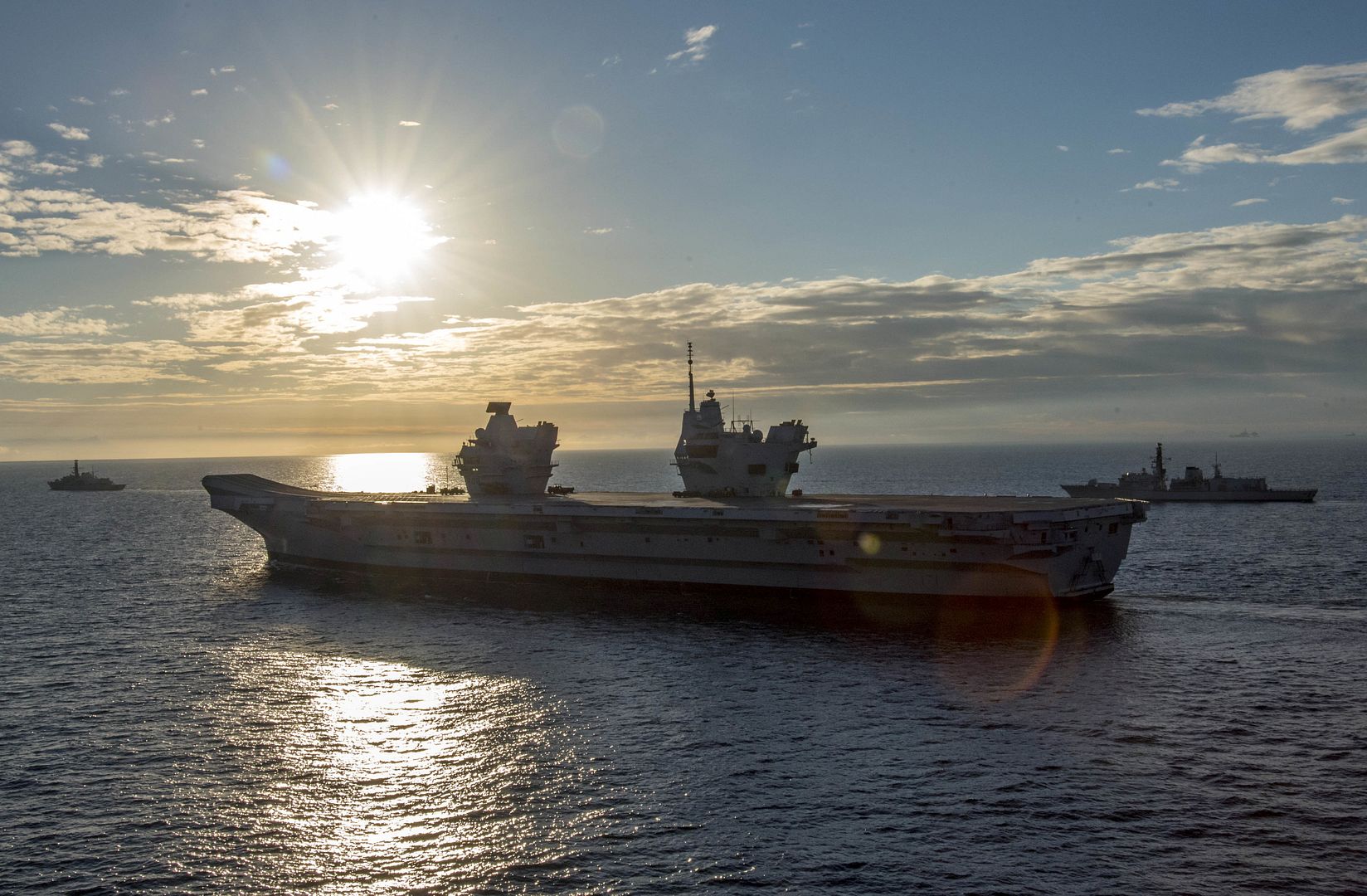
ATLANTIC OCEAN (Aug. 8, 2017) A Royal Navy Merlin Mk 2 prepares to land on the flight deck of the Nimitz-class aircraft carrier USS George H.W. Bush (CVN 77) during exercise Saxon Warrior 2017. The United States and United Kingdom co-hosted carrier strike group exercise demonstrates interoperability and capability to respond to crises and deter potential threats. (U.S. Navy photo by Mass Communication Specialist 3rd Class Daniel Gaither/Released)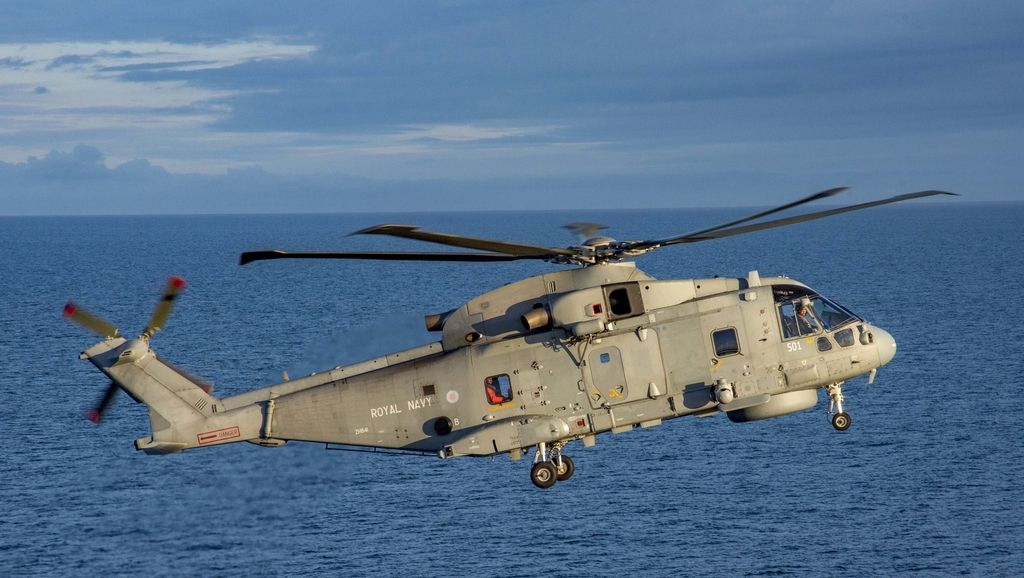
Two U.S. Army HH-60M MEDEVAC helicopters assigned to Charlie Company, 7th Battalion, 158th Aviation Regiment, Fort Carson, Co., transport simulated casualties during exercise Patriot Warrior at Young Air Assault Strip, Fort McCoy, Wis., Aug. 12, 2017. More than 570 Reserve Citizen Airmen and over 10,000 soldiers, sailors, Marines and international partners converged on the state of Wisconsin to support a range of interlinked exercises including Patriot Warrior, Global Medic, CSTX, Diamond Saber, and Mortuary Affairs Exercise (MAX). Patriot Warrior is Air Force Reserve Command's premier exercise, providing an opportunity for Reserve Citizen Airmen to train with joint and international partners in airlift, aeromedical evacuation and mobility support. This exercise is intended to test the ability of the Air Force Reserve to provide combat-ready forces to operate in dynamic, contested environments and to sharpen Citizen Airmen's skills in supporting combatant commander requirements. ( U.S. Air Force Photo by Tech. Sgt. Efren Lopez )
-
 Main AdminA 95th Fighter Squadron F-22 Raptor from Tyndall Air Force Base, Fla., receives fuel from a 23d Wing HC-130J Combat King II via a forward area refueling point during exercise Stealth Guardian at Moody Air Force Base, Ga., Aug. 10, 2017. The exercise involved assets from the 23d Wing and 325th Fighter Wing to include Airmen, HH-60G Pave Hawks, HC-130J Combat King IIs, A-10 Thunderbolt IIs, F-22s and T-38 Talons.
Main AdminA 95th Fighter Squadron F-22 Raptor from Tyndall Air Force Base, Fla., receives fuel from a 23d Wing HC-130J Combat King II via a forward area refueling point during exercise Stealth Guardian at Moody Air Force Base, Ga., Aug. 10, 2017. The exercise involved assets from the 23d Wing and 325th Fighter Wing to include Airmen, HH-60G Pave Hawks, HC-130J Combat King IIs, A-10 Thunderbolt IIs, F-22s and T-38 Talons.
Photo by Airman 1st Class Isaiah Soliz.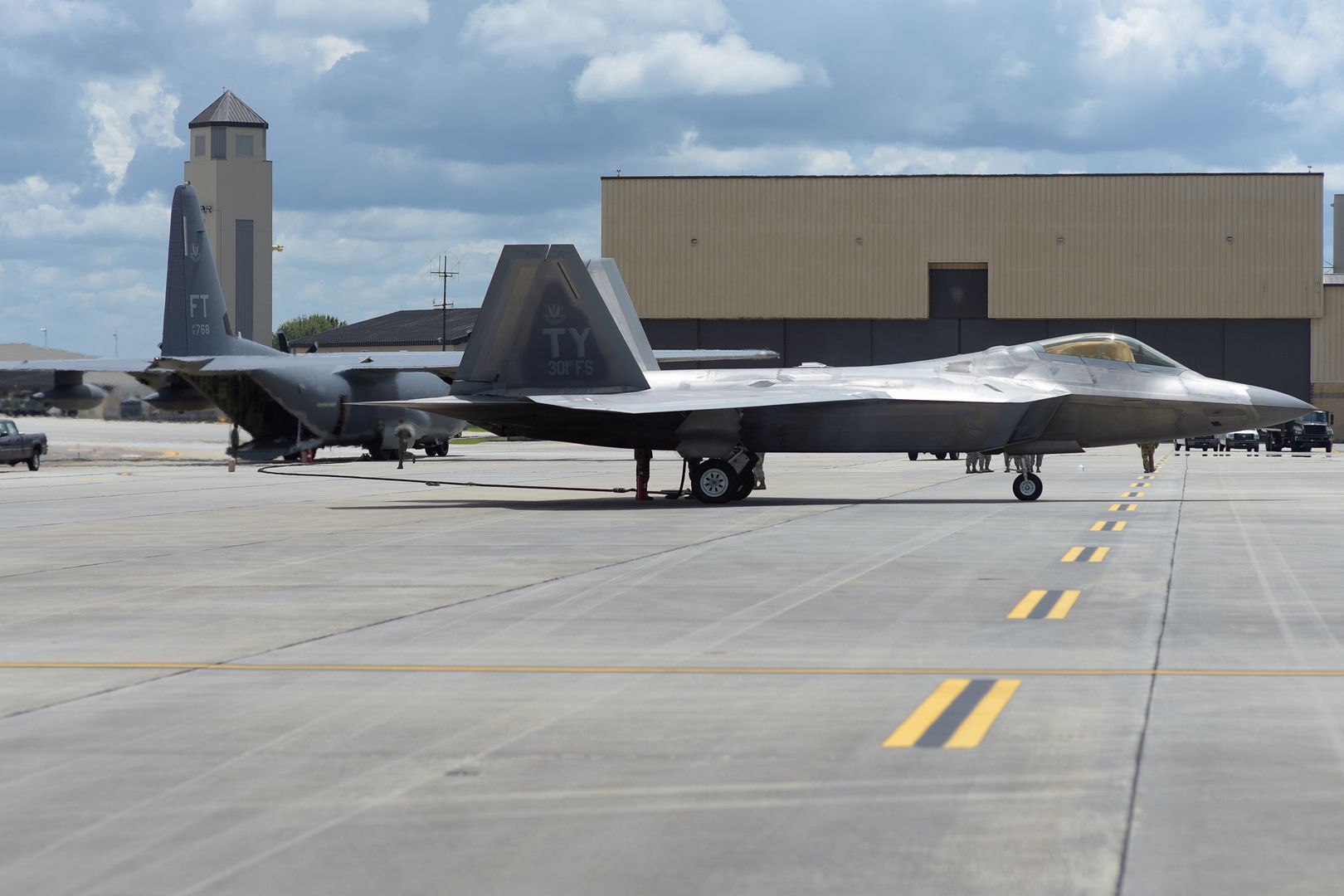
An Afghan Air Force Mi-17 Helicopter prepares to land at Camp Shorabak, Afghanistan during casualty evacuation training Aug. 14, 2017. More than 30 Afghan National Army soldiers with 215th Corps rehearsed and refined their CASEVAC process in preparation for future real-world missions. Quickening the CASEVAC process greatly enhances the survivability and recovery rates for wounded personnel. (U.S. Marine Corps photo by Sgt. Lucas Hopkins)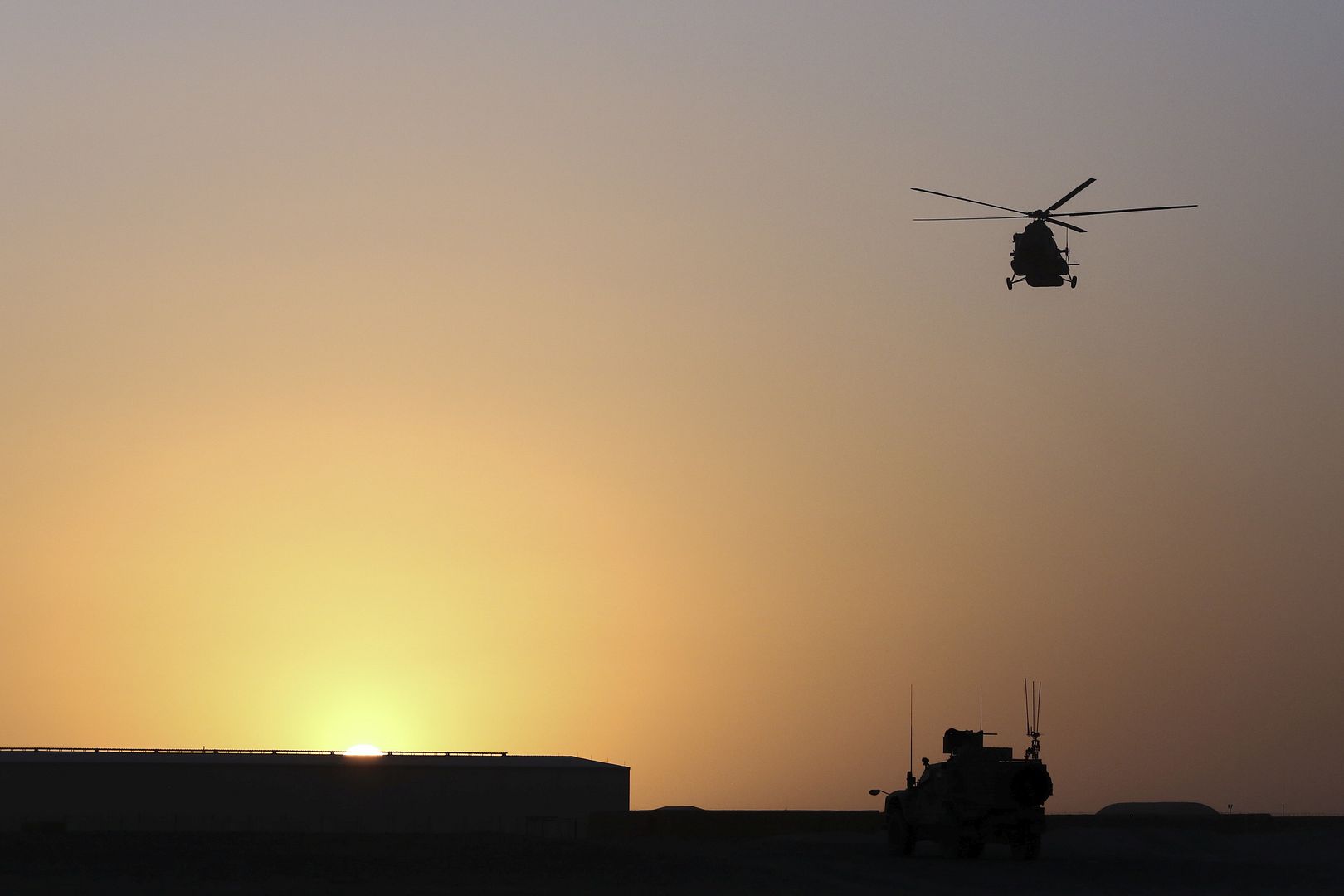
August 14, 2017 Montr?al Business Aircraft, Bombardier Inc., Press Release
Bombardier Business Aircraft announced today that it delivered its first Learjet 75 aircraft to a Brazilian customer. The aircraft joins Bombardier?s business jet fleet of 685 Learjet, Challenger and Global aircraft in Latin America.
?Learjet aircraft are iconic, rooted in deep pride and based on a history of ingenuity. We are proud a Brazilian customer selected the Learjet 75 for its class-leading performance, smooth ride and most private and quiet cabin,? said Stephane Leroy, Vice President, Sales, Latin America, Bombardier Business Aircraft. ?The Learjet 75 aircraft is the only business jet in its class to feature a pocket door for reduced noise levels.?
Latin America is the third largest market for business aviation deliveries, with Brazil, Argentina, Mexico and Venezuela making up over 80 per cent of the regional fleet. With over 510 Learjet aircraft in Latin America, Learjet customers can enjoy the quietest and most private cabin in the category.
Bombardier introduced a new level of passenger comfort in the Light jet category in 2016 with the introduction of a Learjet 75 aircraft featuring an innovative pocket door design. The pocket door divides the cabin from the entry area and reduces noise levels inside the cabin by up to eight decibels*, while creating a distinct private living space for passengers.
Standing the test of time, the Learjet 75 aircraft continues to set the standard by bringing large jet features to the most trusted light jet platform. In June 2017, Bombardier Business Aircraft celebrated a historic milestone in business aviation ? the delivery of the 3,000th Bombardier Learjet business jet manufactured. The aircraft was also the 100th Learjet 75 jet to be delivered.
Learjet 75 aircraft
Defining private jet travel as we know it, the Learjet 75 aircraft is a no compromise aircraft, meticulously engineered and performance driven. Designed with the pilot?s comfort in mind, the Bombardier Vision flight deck features a synthetic vision system, enhanced ergonomics, and touch screen controls for productive missions. The Learjet 75 aircraft?s powerful engines and new winglet design enable it to cruise at a speed of Mach 0.81* and climb to an impressive operating ceiling of 51,000 feet (15,545?m).*
The Learjet 75 aircraft?s modern interior was designed for style and comfort and features a new cabin management system with individual touchscreen monitors and full audio and video control, LED lighting throughout the aircraft, and a generous baggage suite.
-
 Main AdminA U.S. Air Force B-1B Lancer assigned to the 37th Expeditionary Bomb Squadron, deployed from Ellsworth Air Force Base (AFB), S.D. to Andersen AFB, Guam, prepares to fly a bilateral mission with Japan Air Self-Defense Force F-15s in the vicinity of the Senkaku Islands, Aug. 15, 2017. These training flights with Japan demonstrate the solidarity and resolve we share with our allies to preserve peace and security in the Indo-Asia-Pacific. (U.S. Air Force photo/Airman 1st Class Christopher Quail)
Main AdminA U.S. Air Force B-1B Lancer assigned to the 37th Expeditionary Bomb Squadron, deployed from Ellsworth Air Force Base (AFB), S.D. to Andersen AFB, Guam, prepares to fly a bilateral mission with Japan Air Self-Defense Force F-15s in the vicinity of the Senkaku Islands, Aug. 15, 2017. These training flights with Japan demonstrate the solidarity and resolve we share with our allies to preserve peace and security in the Indo-Asia-Pacific. (U.S. Air Force photo/Airman 1st Class Christopher Quail)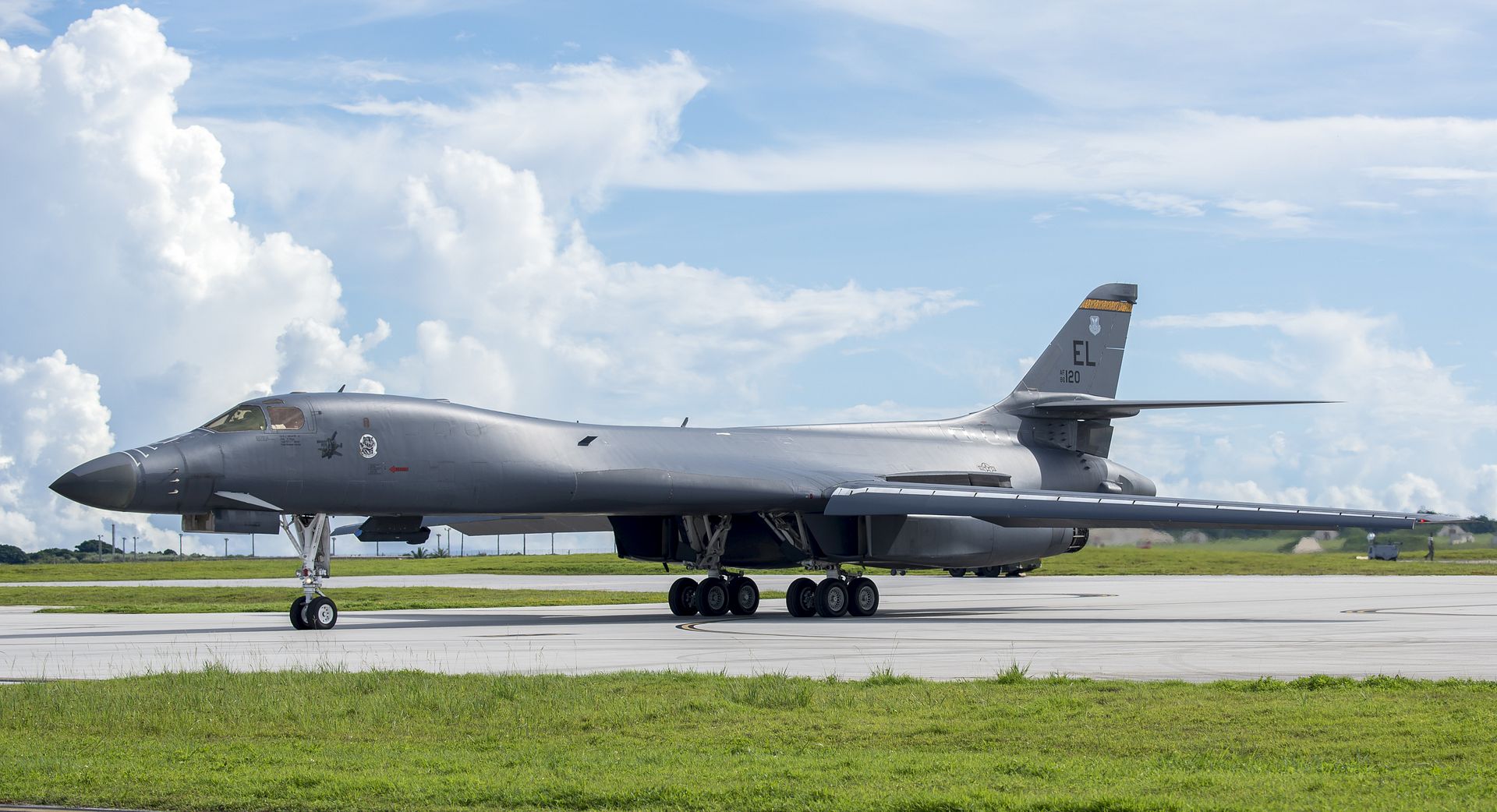
A U.S. Air Force B-1B Lancer assigned to the 37th Expeditionary Bomb Squadron, deployed from Ellsworth Air Force Base (AFB), S.D. to Andersen AFB, Guam, takes off for a bilateral mission with Japan Air Self-Defense Force F-15s in the vicinity of the Senkaku Islands, Aug. 15, 2017. These training flights with Japan demonstrate the solidarity and resolve we share with our allies to preserve peace and security in the Indo-Asia-Pacific. (U.S. Air Force photo/ Airman 1st Class Christopher Quail)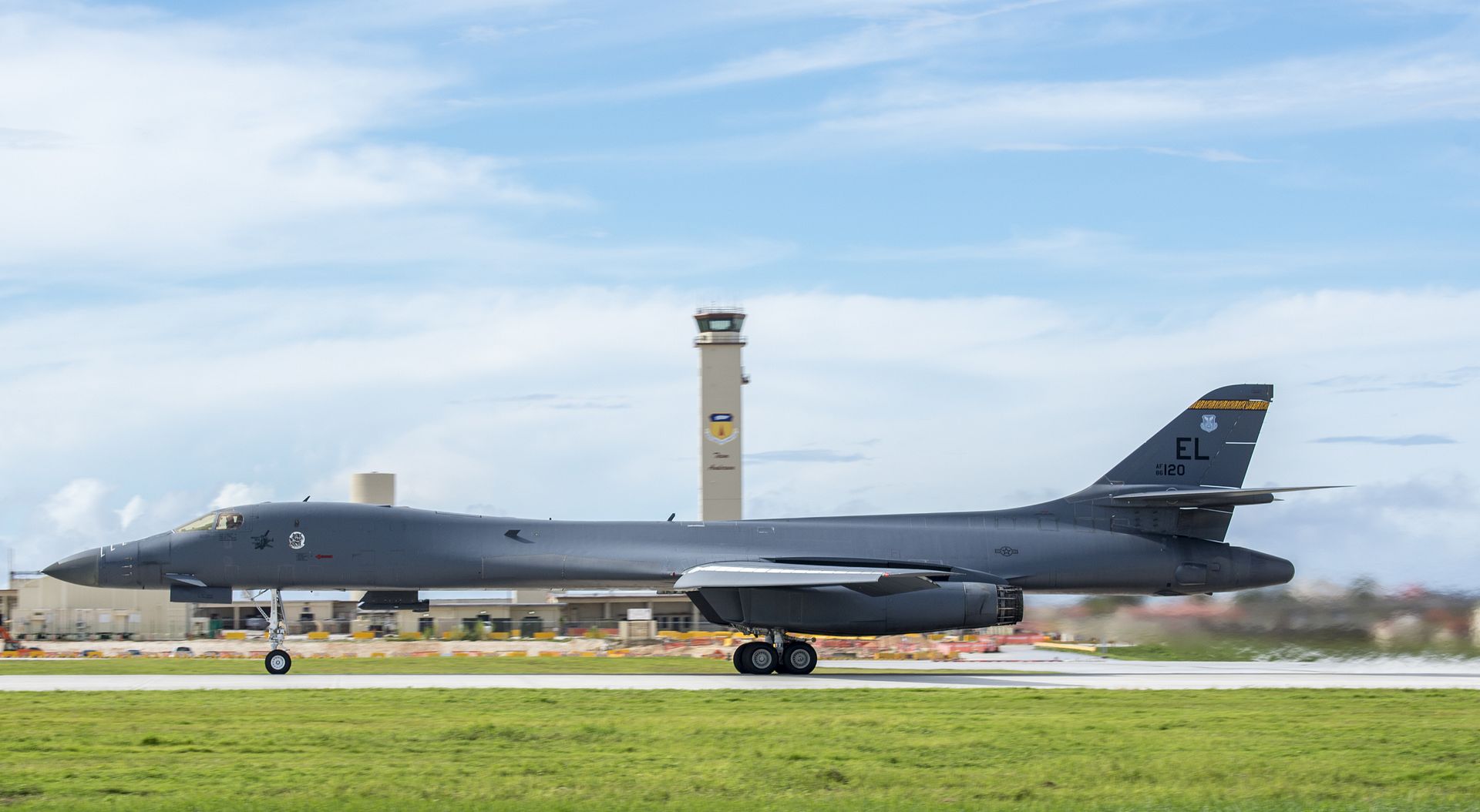
Two U.S. Air Force B-1B Lancers assigned to the 37th Expeditionary Bomb Squadron, deployed from Ellsworth Air Force Base (AFB), S.D. to Andersen AFB, Guam, fly a bilateral mission with Japan Air Self-Defense Force F-15s in the vicinity of the Senkaku Islands, Aug. 15, 2017. These training flights with Japan demonstrate the solidarity and resolve we share with our allies to preserve peace and security in the Indo-Asia-Pacific. (Courtesy photo/Japan Air Self-Defense Force)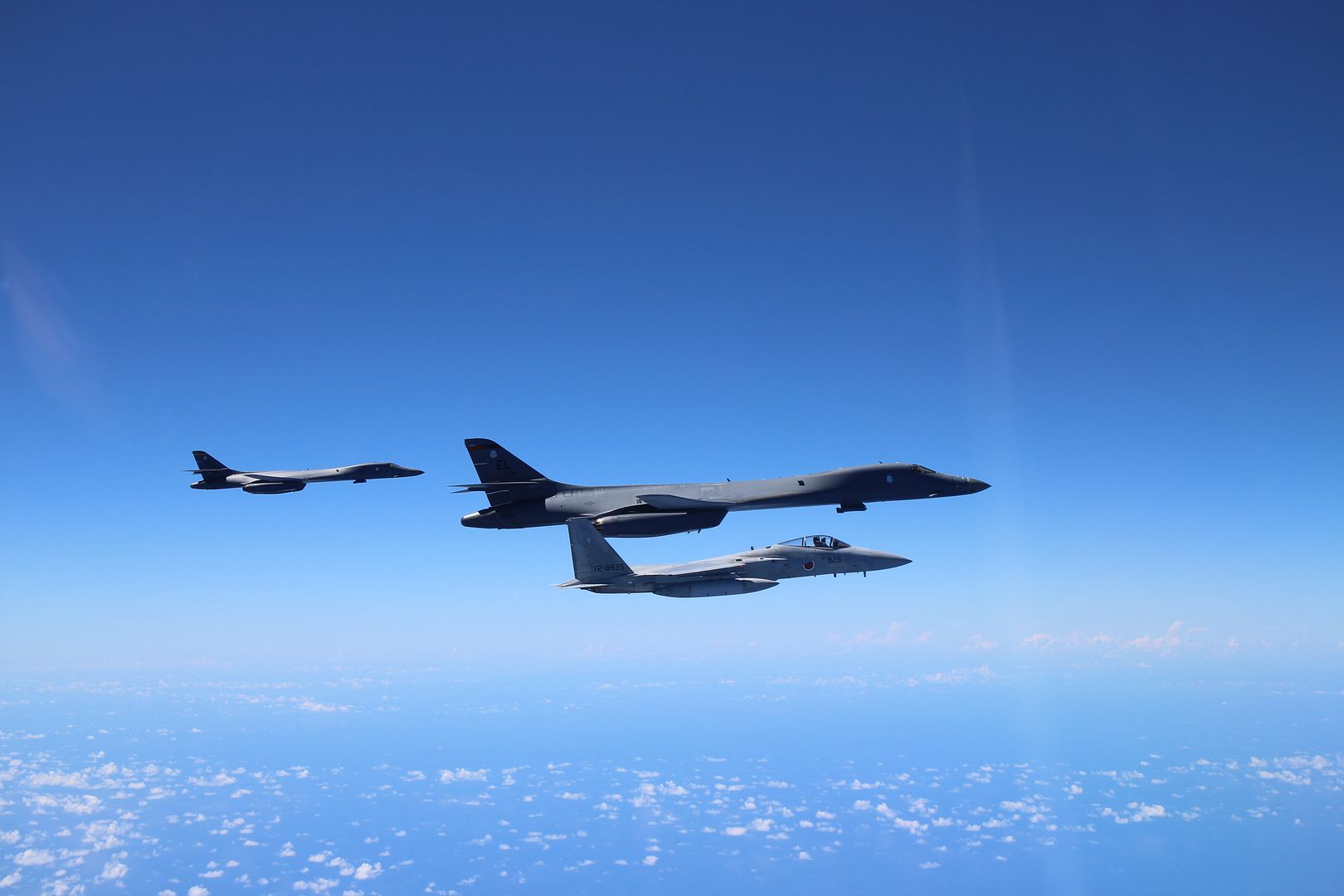
MEDITERRANEAN SEA (Aug. 13, 2017) Standing NATO Maritime Group Two (SNMG2) flagship HMS Duncan?s Wildcat helicopter providing overwatch with the Royal Marines Maritime Sniper Team during a boarding exercise in the Mediterranean Sea. NATO photo by GBR N LPhot Paul Hall/Released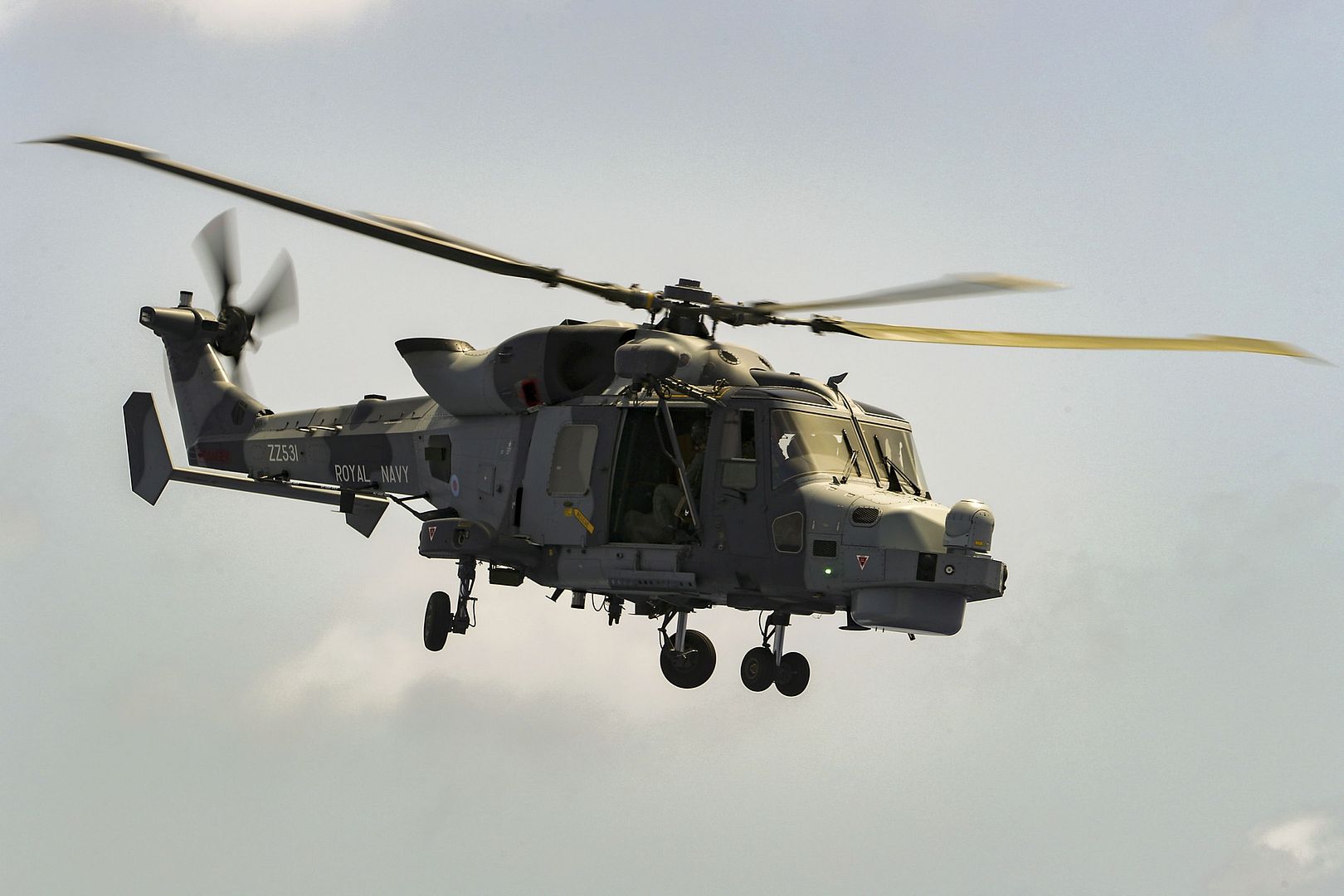
MEDITERRANEAN SEA (Aug. 13, 2017) A Royal Navy winchman is lowered to the deck by the ship?s Wildcat helicopter onboard Standing NATO Maritime Group Two (SNMG2) flagship HMS Duncan during a winching exercise. The exercise is an essential part of training for the medical team should there be a need to evacuate a casualty from the ship. NATO photo by GBR N LPhot Paul Hall/Released.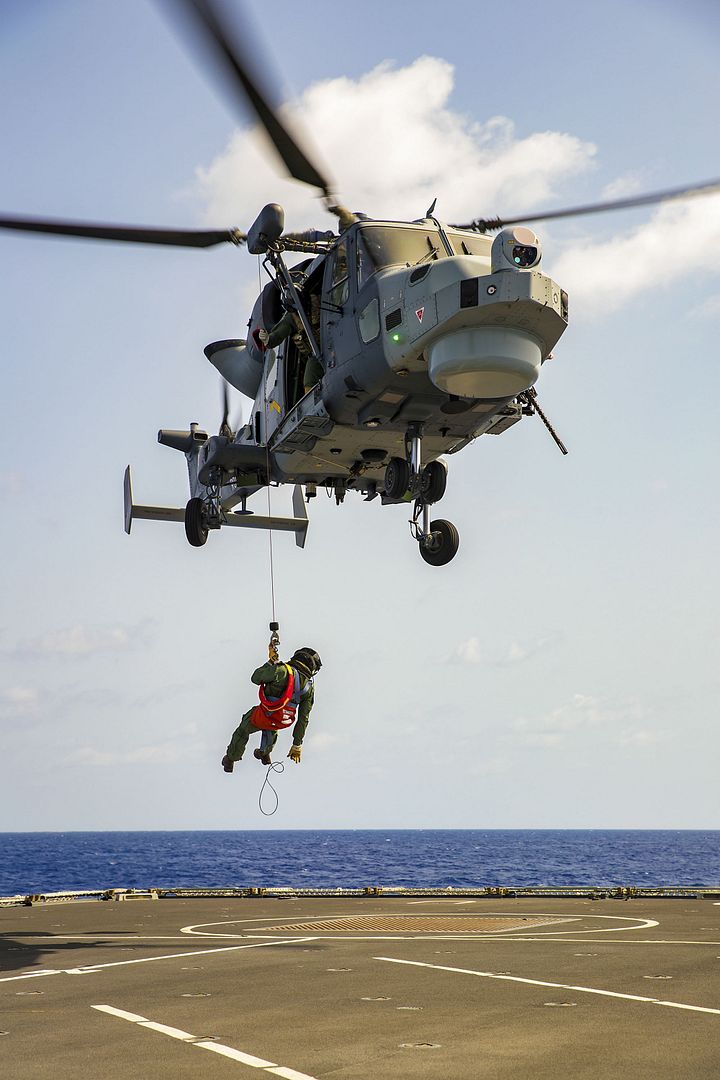
U.S. Marine Corps KC-130J Hercules aircraft with Marine Aerial Refueler Transport Squadron (VMGR) 152, conducts division tactical navigation training as part of unit-level training Evergreen at Naval Air Station Whidbey Island, Washington, Aug. 14, 2017. Division tactical navigation training allows the squadrons? aircraft to perform gear drops in close proximity to a single location enhancing operational efficiency. Evergreen will serve as VMGR-152?s 2017 Marine Corps Combat Readiness Evaluation through tri-lateral training with the U.S. Army 160th Special Operations Aviation Regiment and U.S. Army 1st Special Forces Group to gain valuable insight on the most recent Operation Inherent Resolve assault support tactics. (U.S. Marine Corps photo's by Cpl. Joseph Abrego)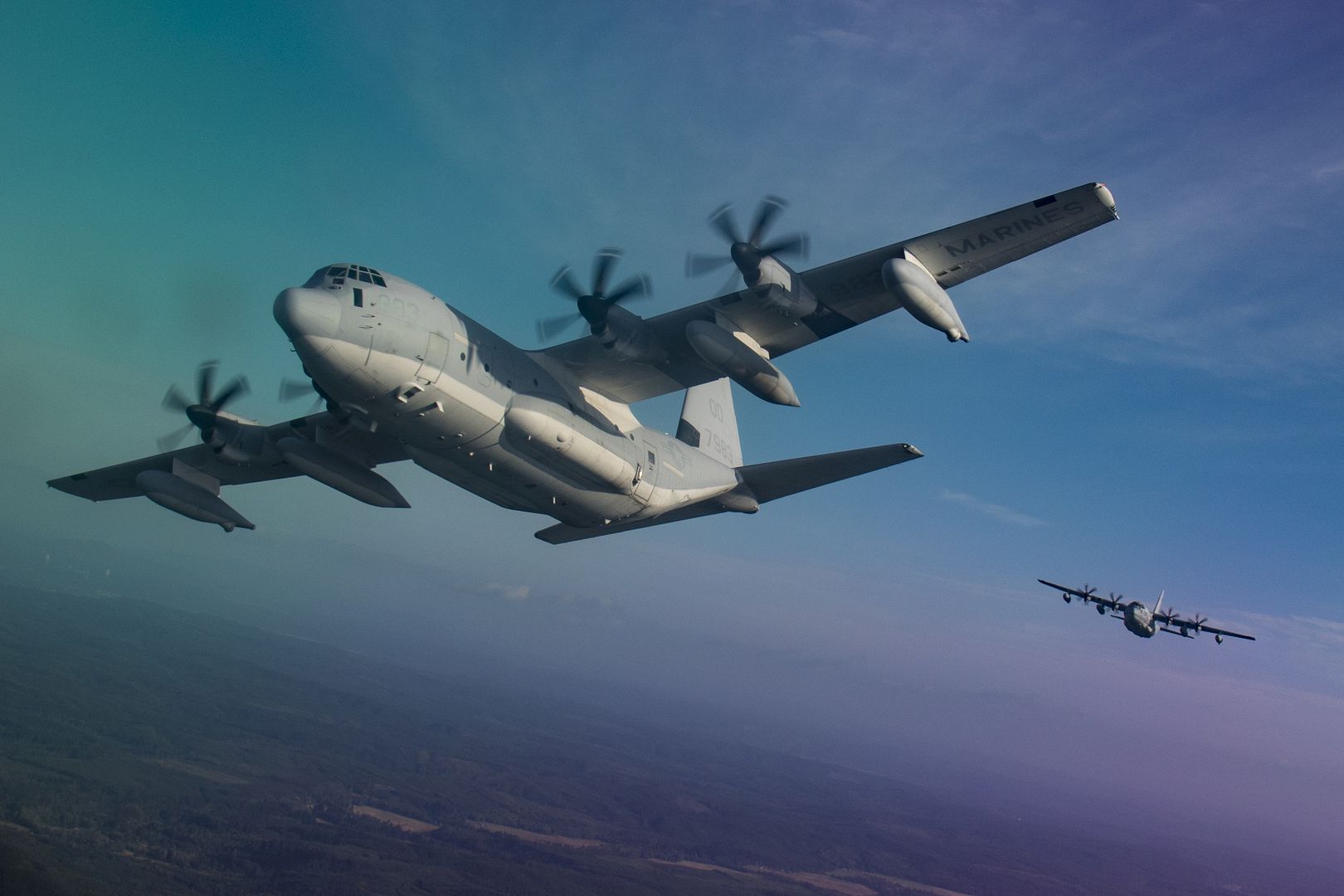
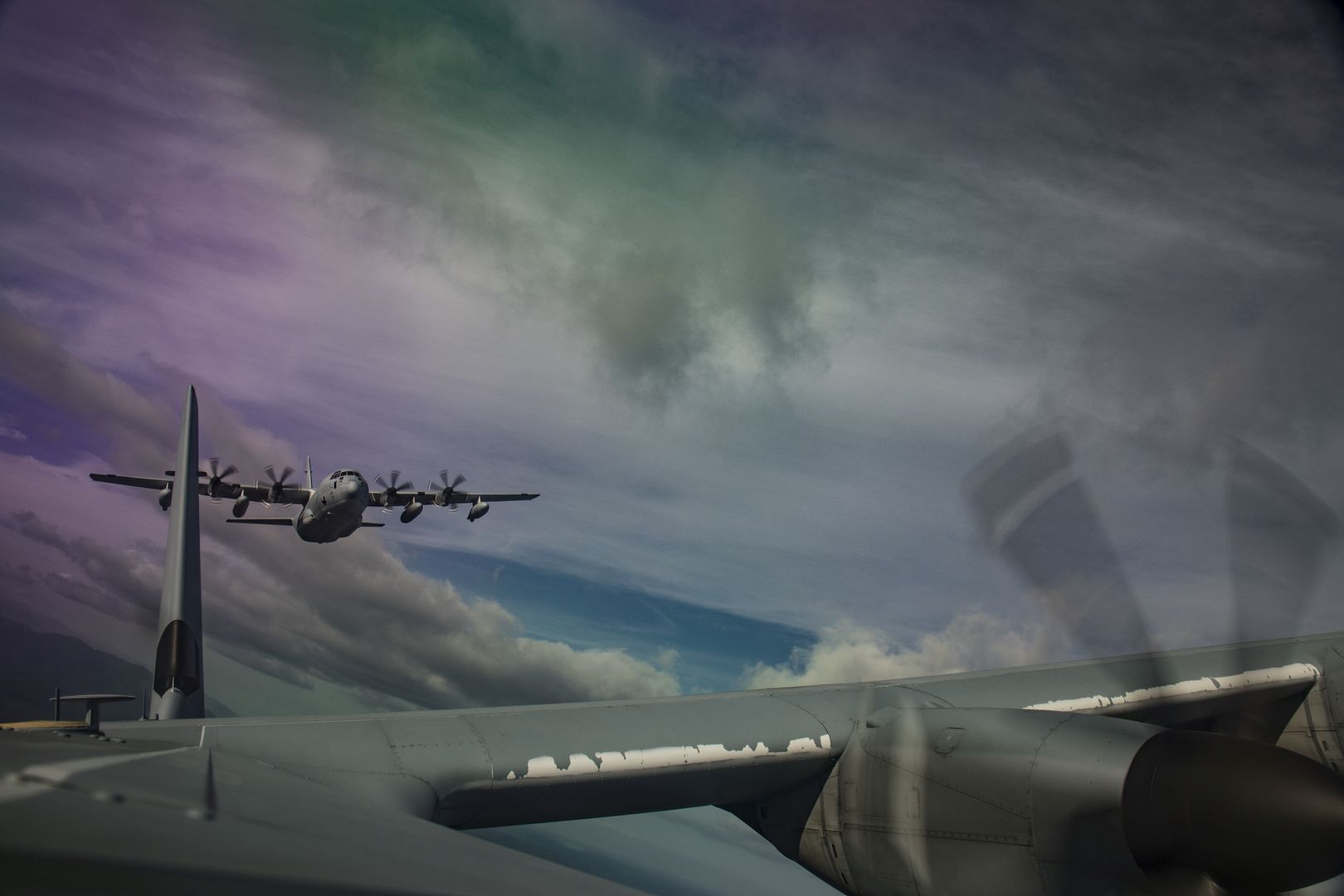
EAST SALE, Australia, Aug. 15, 2017 /PRNewswire/ -- In a recent ceremony that marked a significant milestone for the AIR 5428 Pilot Training System, Lockheed Martin (NYSE: LMT) celebrated the Chief of Air Force first flight of the in-service PC-21 aircraft.
The occasion was celebrated at a media event hosted by Australian Minister for Defence Senator the Hon Marise Payne, in East Sale, Australia. Also in attendance was the Hon Darren Chester MP, Minister for Infrastructure and Transport, highlighting the significance of the program to the Australian Government.
Vince Di Pietro, chief executive for Lockheed Martin Australia attended the event along with AIR 5428 partners Pilatus Aircraft and Hawker Pacific.
"We are excited to celebrate this momentous occasion with the CAF and recognise this marks the beginning of training for Australia's fifth-generation air capability," said Vince Di Pietro. "This milestone is a great achievement to all involved and we celebrate the Australian Defence Force's first flight in service and acceptance of the first six of 49 PC-21 aircraft, as the mainstay trainer for Australia's pilot training program for decades to come."
"Combining the PC-21 turboprop training aircraft with state-of-the-art training simulations and an electronic learning environment, Australia's new Pilot Training System will prepare Australia's next-generation pilots for mission success."
The AIR 5428 Pilot Training System is an integrated solution tailored for all future pilots of the Royal Australian Air Force, Royal Australian Navy and the Australian Army.
"Lockheed Martin Australia leads the delivery of integrated solutions for all future pilots of the Australian Defence Force," said Amy Gowder, vice president of Training and Logistics Solutions for Lockheed Martin's Rotary and Mission Systems business. "This milestone is an important achievement, and confirms the Lockheed Martin-led team is on track to deliver a world-class pilot training solution to the Australian Defence Force."
Under the AIR 5428 contract, Lockheed Martin is providing overall project management for the pilot training system and delivering a family of integrated ground-based training technologies. Pilatus Aircraft is providing 49 PC-21 turboprop training aircraft and through-life engineering and airworthiness support, while Hawker Pacific is providing maintenance services and fleet support, and leveraging its established supply chain in Australia.
Signed in December 2015, the initial seven-year AIR 5428 Pilot Training System is valued at AU$1.2 billion, with performance-based options to extend the value and length of the contract for up to 25 years.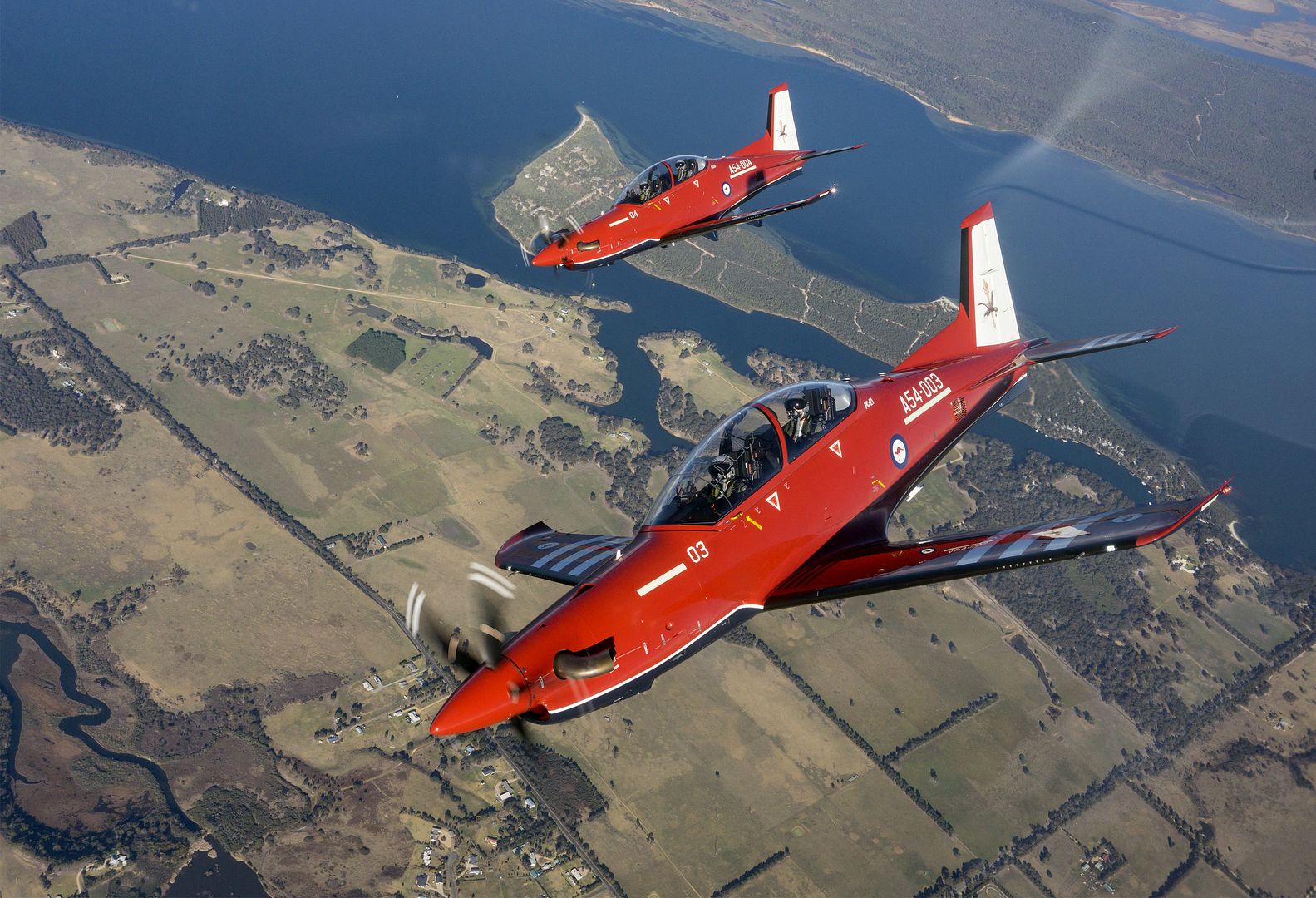
-
 Main AdminTwo Italian Air Force A-11 Ghiblis arrive to receive fuel from a KC-10 Extender during a mission in support of Operation Inherent Resolve, Aug. 7, 2017. Italy plays a key role supporting Coalition's military operations through air capabilities based in Kuwait: one KC-767 aerial refueling aircraft, one unmanned Predator surveillance aircrafts, four AMX aircrafts for intelligence, surveillance, and reconnaissance operations and an intergraded multi-sensory exploitation cell. (U.S. Air Force photo by Staff Sgt. Trevor T. McBride
Main AdminTwo Italian Air Force A-11 Ghiblis arrive to receive fuel from a KC-10 Extender during a mission in support of Operation Inherent Resolve, Aug. 7, 2017. Italy plays a key role supporting Coalition's military operations through air capabilities based in Kuwait: one KC-767 aerial refueling aircraft, one unmanned Predator surveillance aircrafts, four AMX aircrafts for intelligence, surveillance, and reconnaissance operations and an intergraded multi-sensory exploitation cell. (U.S. Air Force photo by Staff Sgt. Trevor T. McBride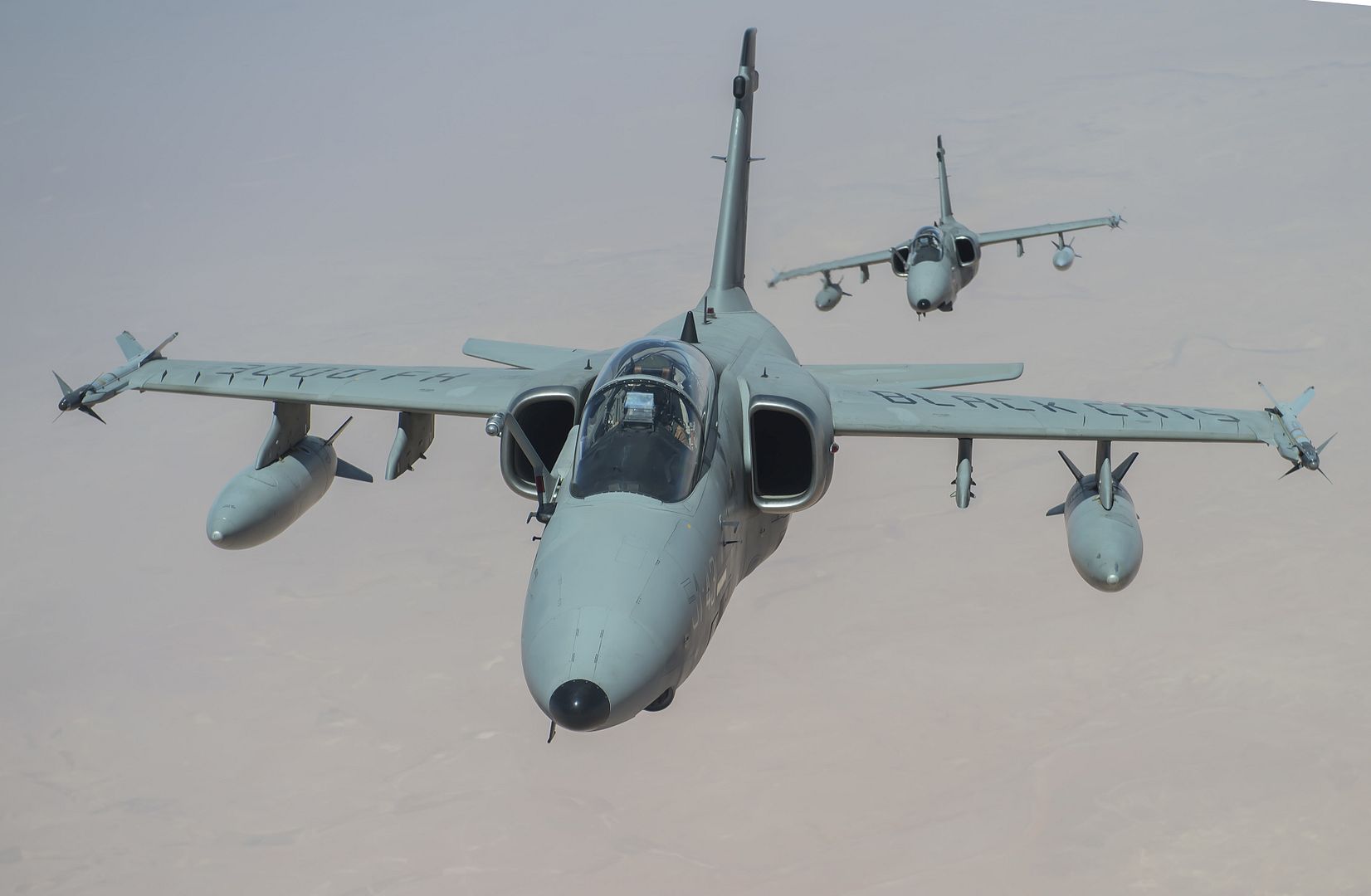
ANSBACH, Germany-U.S. Soldiers with 12th Combat Aviation Brigade, conduct aft wheel pinnacle landing training in a AH-64 helicopter, Aug. 14, 2017, at the Oberdachstetten Local Training Area (LTA). A pinnacle landing is conducted to land in a very precise location such as a building roof. Confined area operations are very difficult maneuvers and require a lot of practice to master. Luckily, the Oberdachstetten LTA is just one of the many LTAs operated by the Training Support Activity Europe to provide both U.S. Army Europe and partner-nation troops with the ability to perform rigorous, realistic and relevant home-station training that enhances their combat readiness. (U.S. Army photo by Charles Rosemond)
CORAL SEA (Aug. 17, 2017) Chief Aviation Boatswain's Mate (Handling) Kenji Kimura, from Walnut, Calif., signals to launch an AV-8B Harrier, assigned to the "Tomcats" of Marine Attack Squadron (VMA) 311, from the flight deck of the amphibious assault ship USS Bonhomme Richard (LHD 6). VMA-311 is concluding its "farewell tour" with the Bonhomme Richard Expeditionary Strike Group (ESG) and the 31st Marine Expeditionary Unit as the ESG transitions to the F-35B Lightning II Joint Strike Fighter in the winter of 2017. The BHR ESG is currently conducting certification exercise (CERTEX), the final evaluation in a series of training exercises, which ensure readiness for crisis response through the Indo-Asia-Pacific region. (U.S. Navy photo by Mass Communication Specialist 2nd Class Diana Quinlan/Released)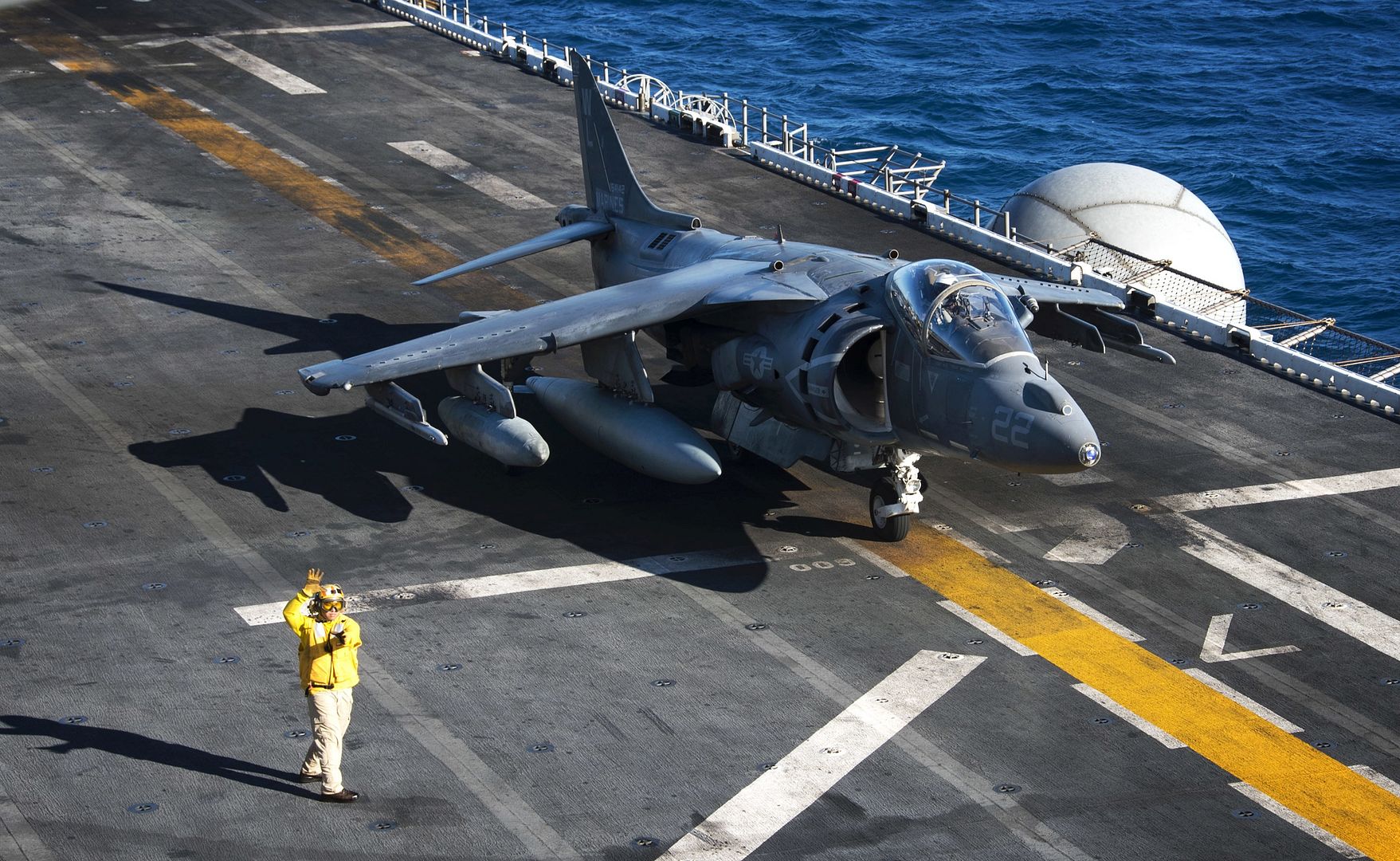
An E-3 Sentry takes off from Nellis Air Force Base, Nev., behind an F-22 Raptor from the 94th Fighter Squadron during Red Flag 17-4, Aug. 14, 2017. Red Flag is a realistic combat training exercise involving the air, space and cyber forces of the United States and its allies. (U.S. Air Force photo/Staff Sgt. Carlin Leslie)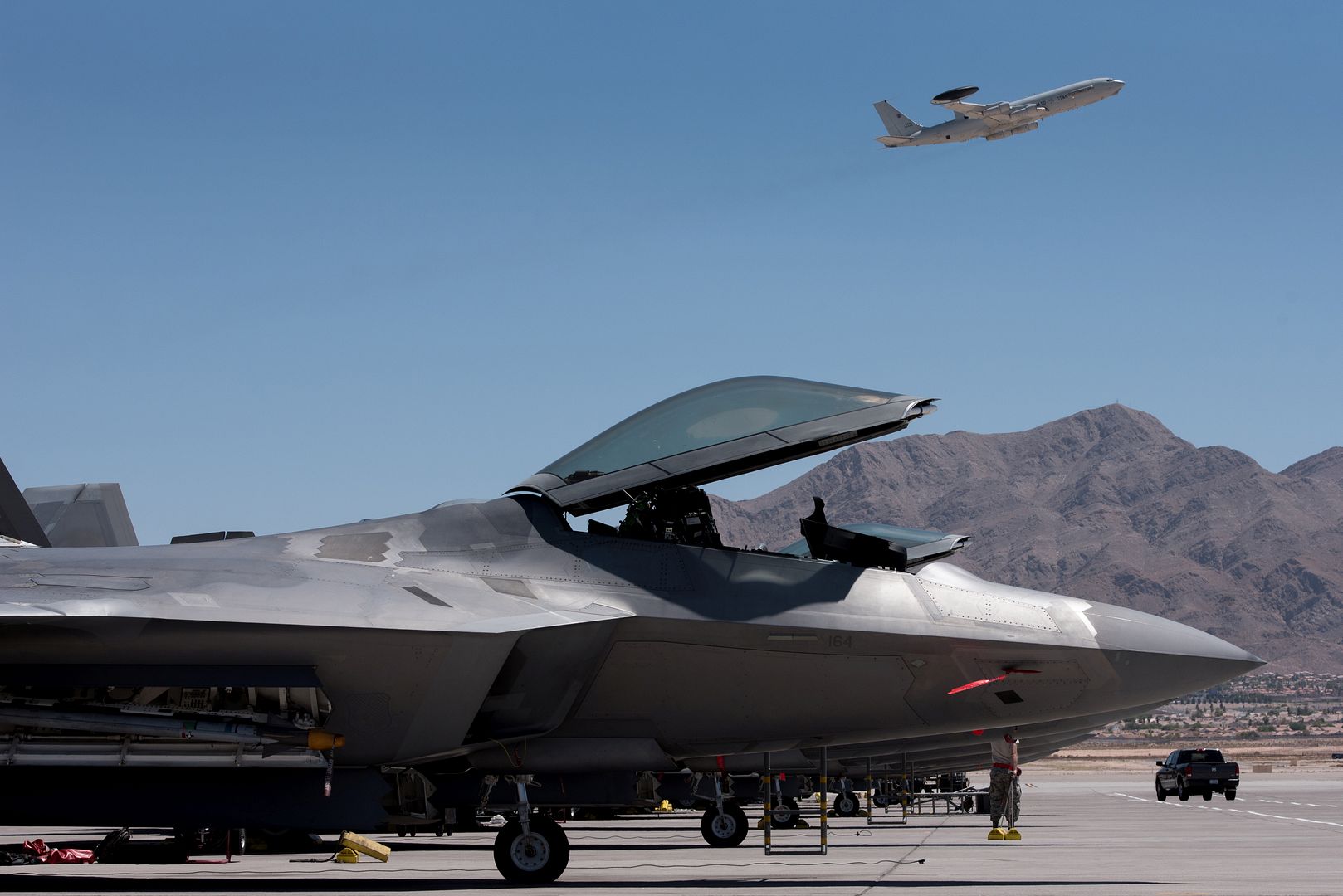
An F-22 Raptor from the 94th Fighter Squadron during Red Flag 17-4 at Nellis Air Force Base, Nev., Aug. 14, 2017. The aircraft is assigned to Joint Base Langley-Eustis, Va.?s, 1st Fighter Wing and will conduct air combat training sorties with various aircraft during Red Flag 17-4, running from Aug. 14 to 25. (U.S. Air Force Photo/Staff Sgt. Carlin Leslie)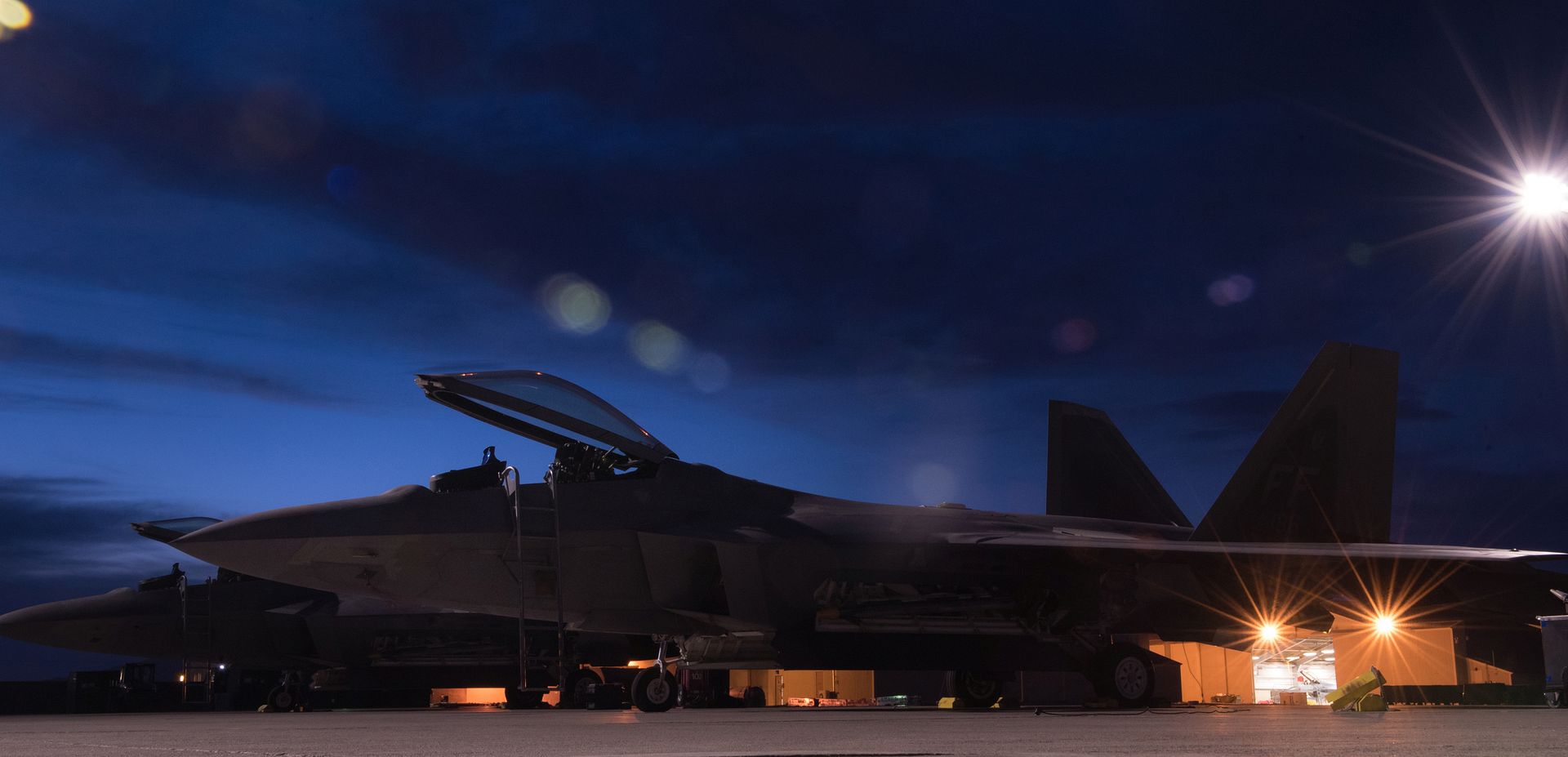
EDWARDS AIR FORCE BASE, Calif. -- A Boeing 787 Dreamliner takes off after a touch-and-go landing at Edwards AFB Aug. 14. Boeing has been conducting flight tests with its newest airliner at Edwards recently. Periodically, aviation industry companies are provided the opportunity to conduct flight tests at Edwards given the base's unique test assets such as multiple runways, a controlled airspace, large dry lakebeds and flying weather.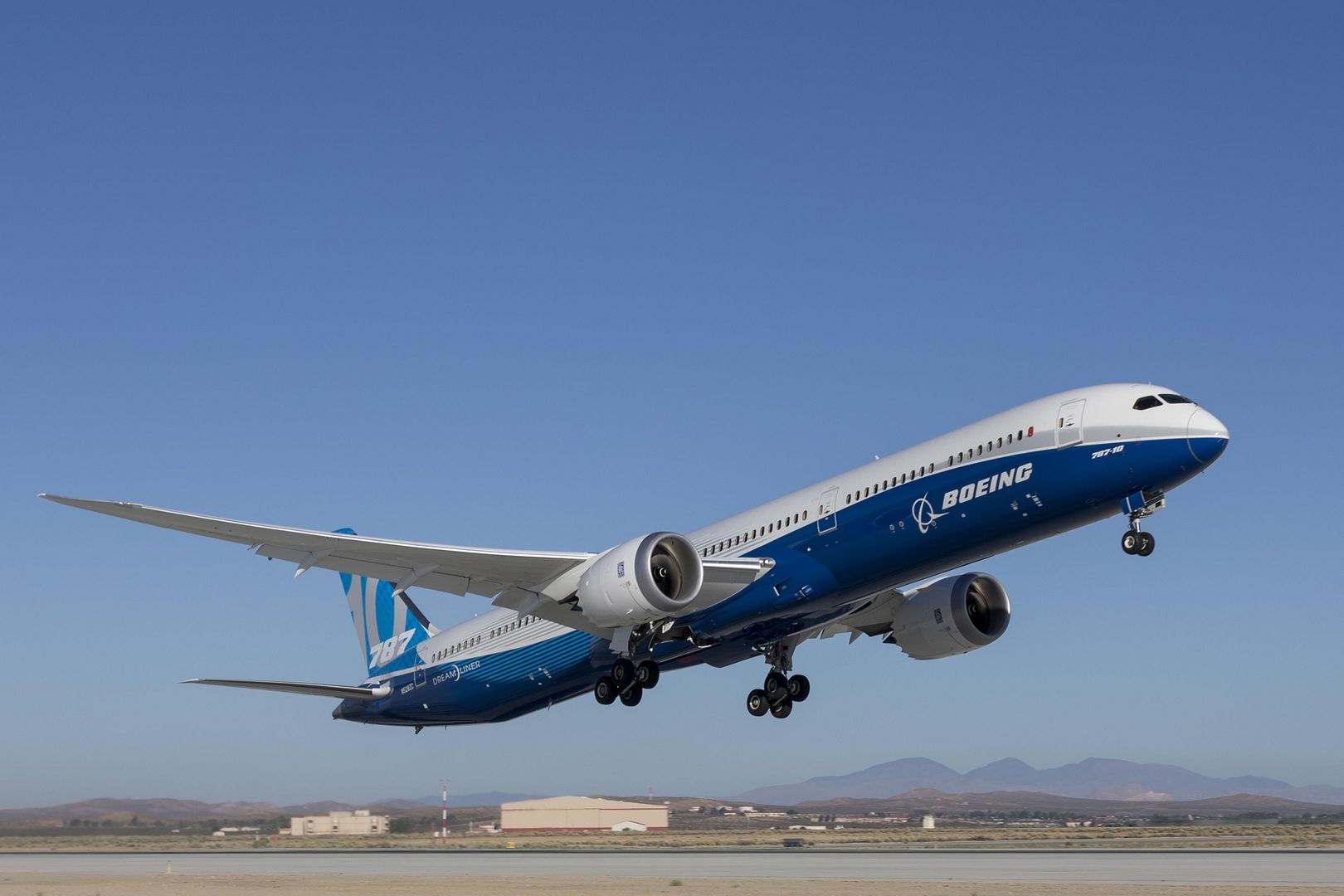
Edwards Air Force Base is famous for aviation firsts, but the F-35 Developmental Test team recently achieved the opposite, an aviation last.
The Block 3F version of the F-35A and F-35C are one step closer to initial operating capability with the last weapons delivery accuracy (WDA) surge completed in early August.
The term surge is used because the F-35 weapons testing required a great deal of assets and personnel dedicated for a short period of time, according to Torrey Given, a weapons integration engineer with the 461st Flight Test Squadron.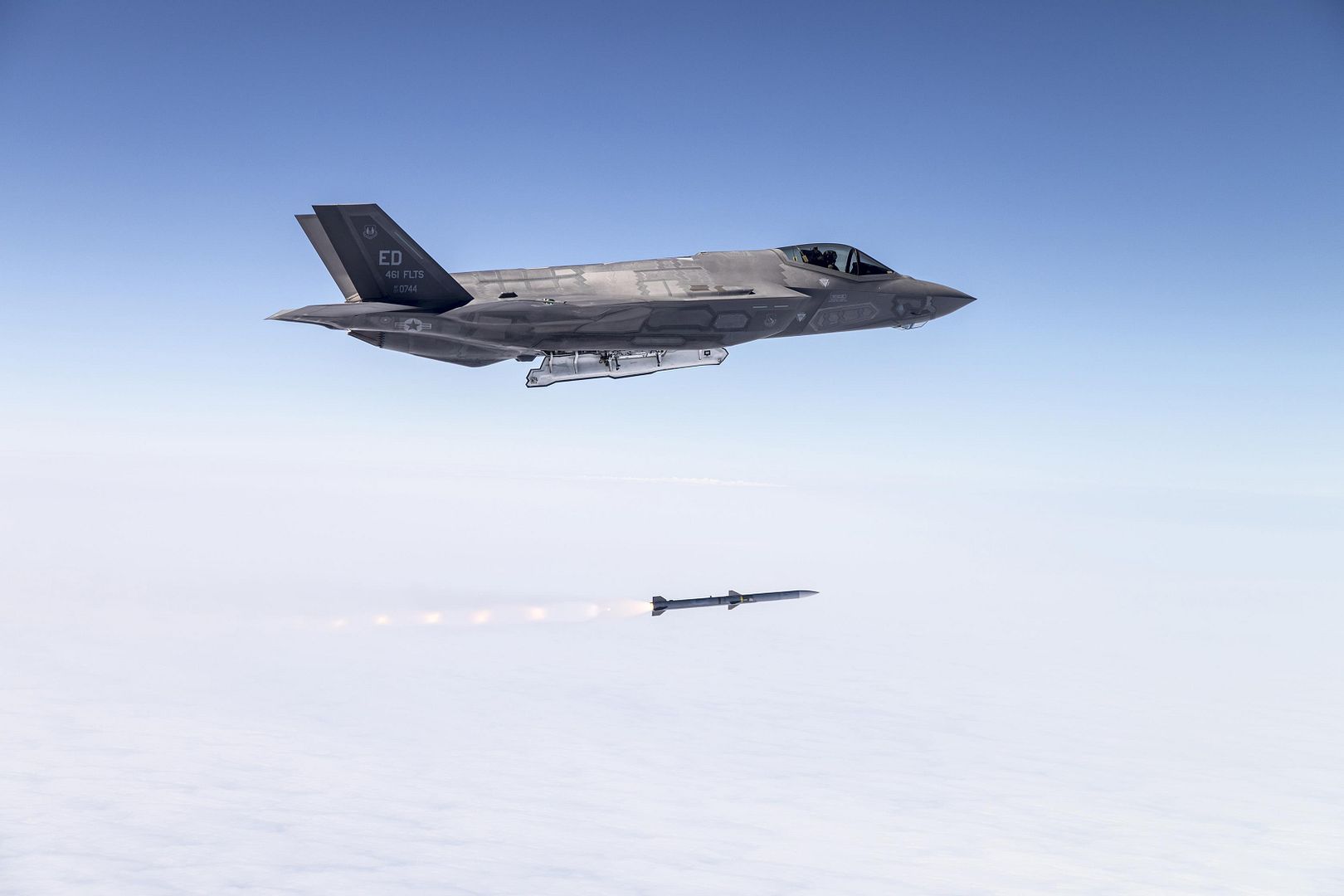
?This allowed us to accomplish multiple events over the course of a handful of days,? he said.
Given, who has been with the F-35 project since the beginning, from flight science all the way through the WDA testing, said this round of testing could be called a mini surge, as there were only a handful of events that needed to be completed.
?This was kind of a cleanup, or a closeout, of (System Development and Demonstration). It?s the closeout of JSF developmental test for Block 3F, which is a big deal because it?s for Air Force IOC, and Navy IOC,? he said.
?We were able to accomplish some complex air-to-air demonstrations with the (Advanced Medium-Range Air-to-Air Missile) in order to show the full capability of the aircraft,? Given said.
The AMRAAM missiles were equipped with live motors and guidance systems, but the warheads were exchanged for telemetry units, and the tests were done over the open water range at Naval Air Weapons Station Point Mugu in Ventura County, California.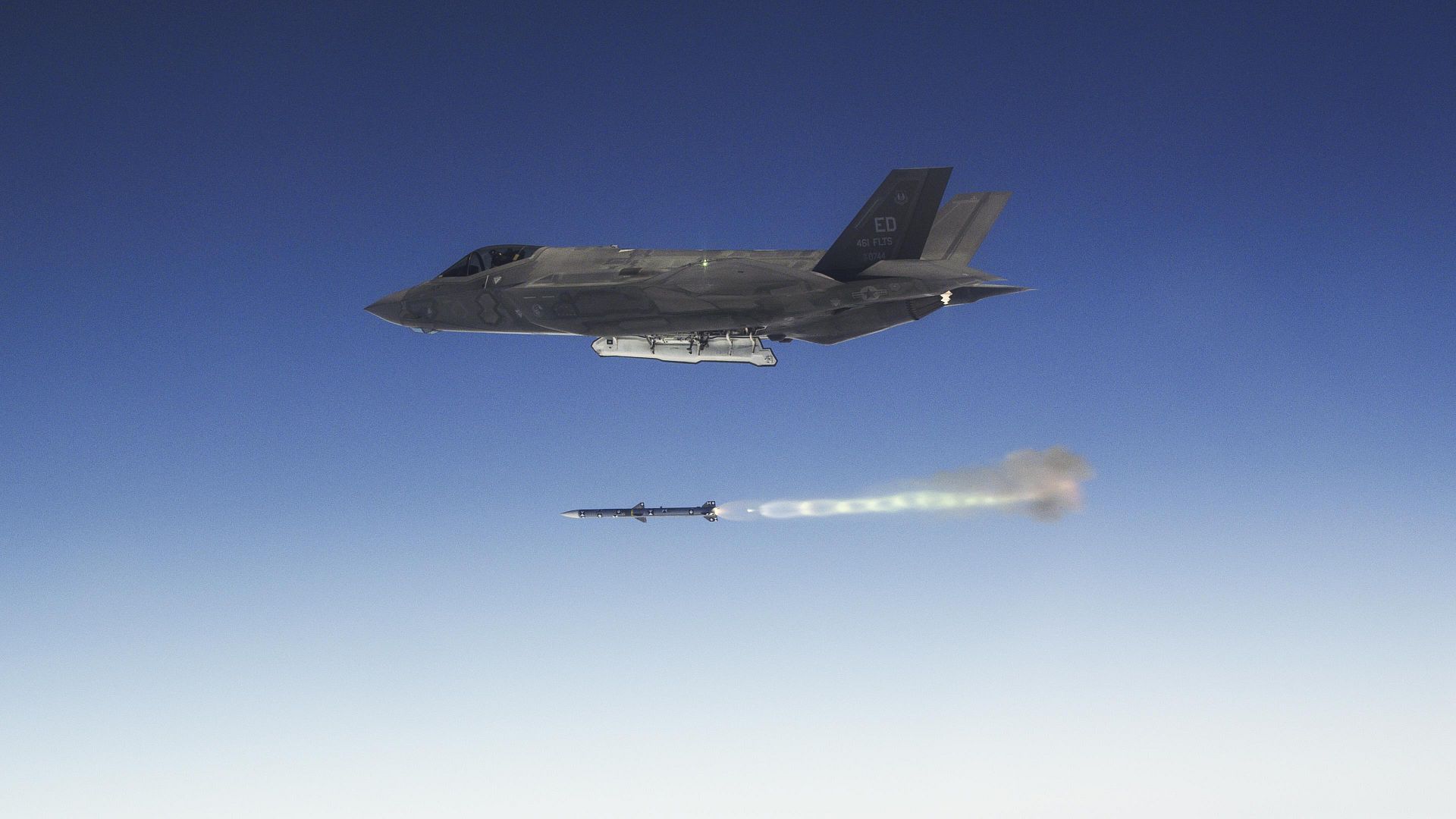
Given said most everything we do at Edwards Air Force Base is an aviation first, in some way, shape or form.
?I like to think of these as the last for Developmental Test,? he said. ?This is like our graduation exercise before we hand the aircraft off to the operational test organizations so they can go prove it?s ready for combat. That?s very significant for us.?
He said the critical piece is the wrap-up of System Development and Demonstration, which has been a long time coming.
?For some of us, this has been roughly eight years working on F-35 to get to where it is operationally viable,? Given said.
There is a single WDA event remaining for 3F, which marks the completion for all three variants and will pave the way to the declaration of IOC for all F-35s.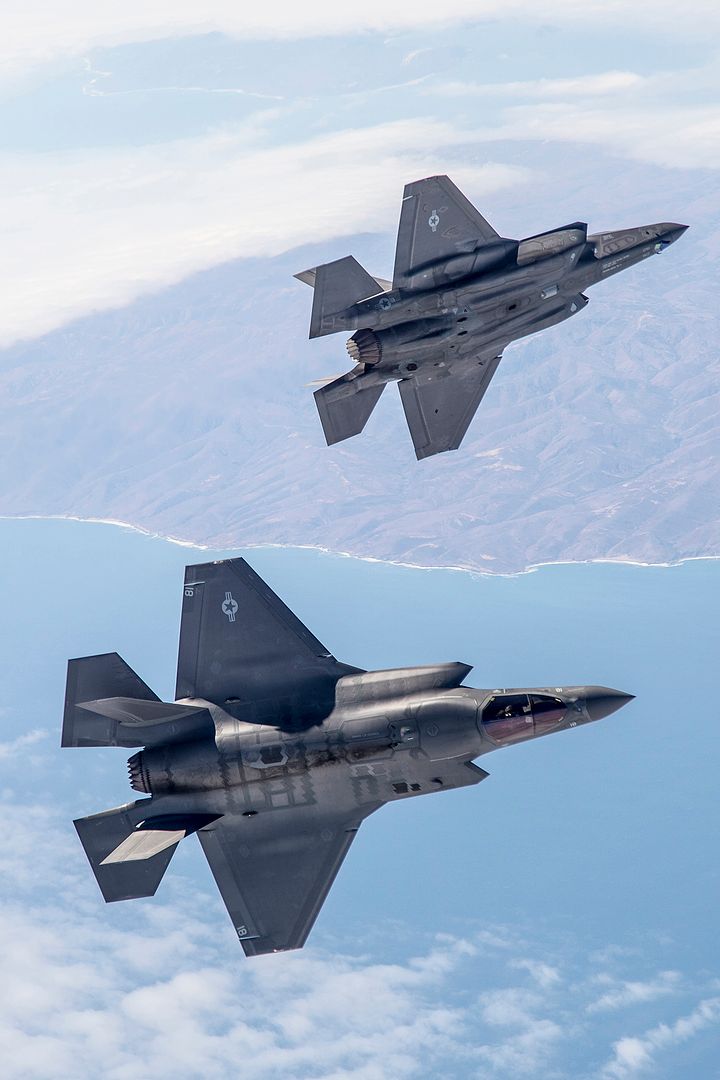
MOBILE, AL., August 15, 2017: The first Airbus A320 aircraft to be produced at the Airbus U.S. Manufacturing Facility in Mobile, Alabama, has flown for the first time. The A320 took off from the Mobile Aeroplex at Brookley this morning. The flight lasted approximately four hours, during which tests were performed on systems, engines and structural performance.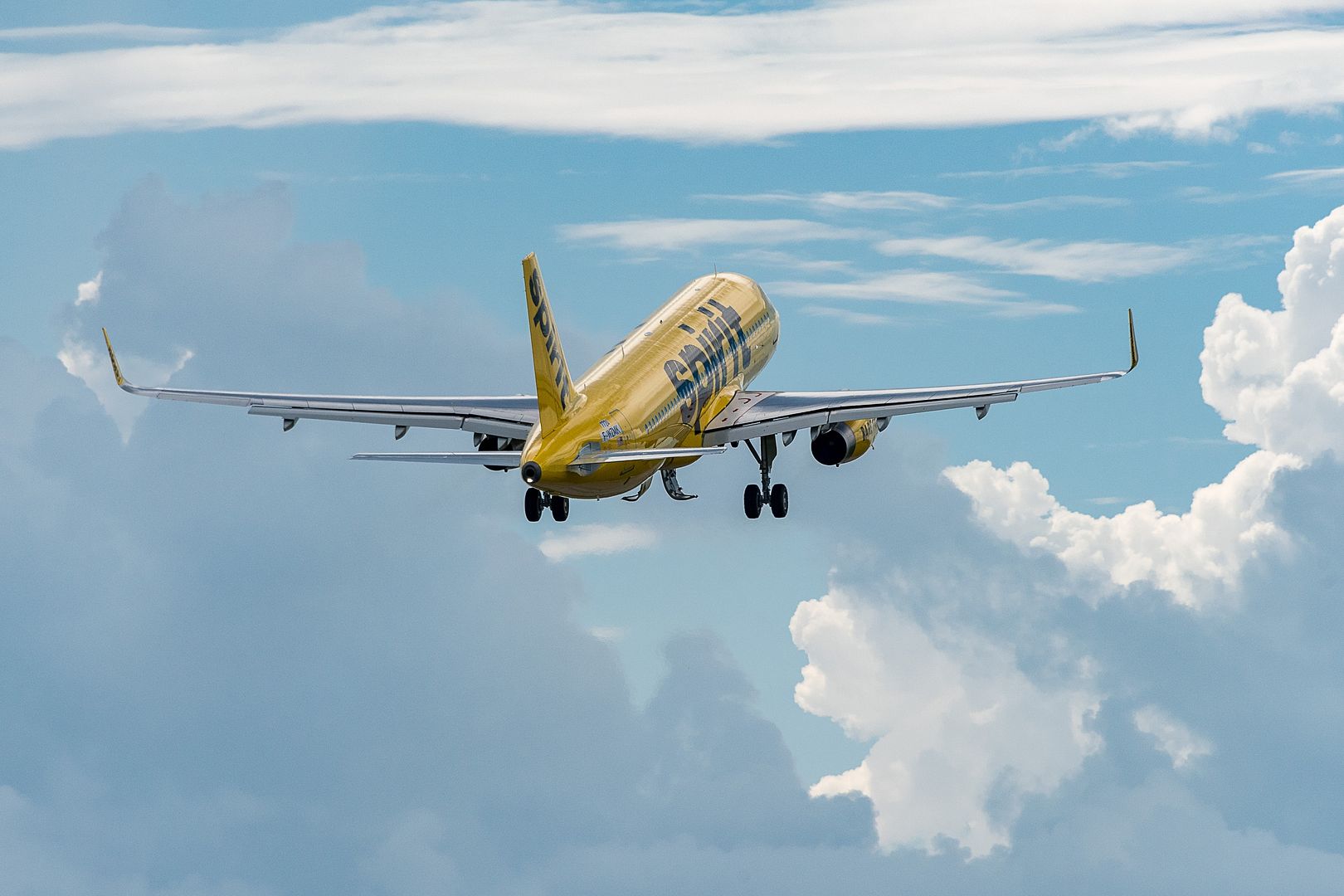
The Airbus U.S. Manufacturing Facility can produce three members of the A320 Family: the A319, A320 and A321. Thus far, the 36 aircraft delivered since operations began in 2015 have been A321s, making today?s flight another milestone for the U.S.-based production facility.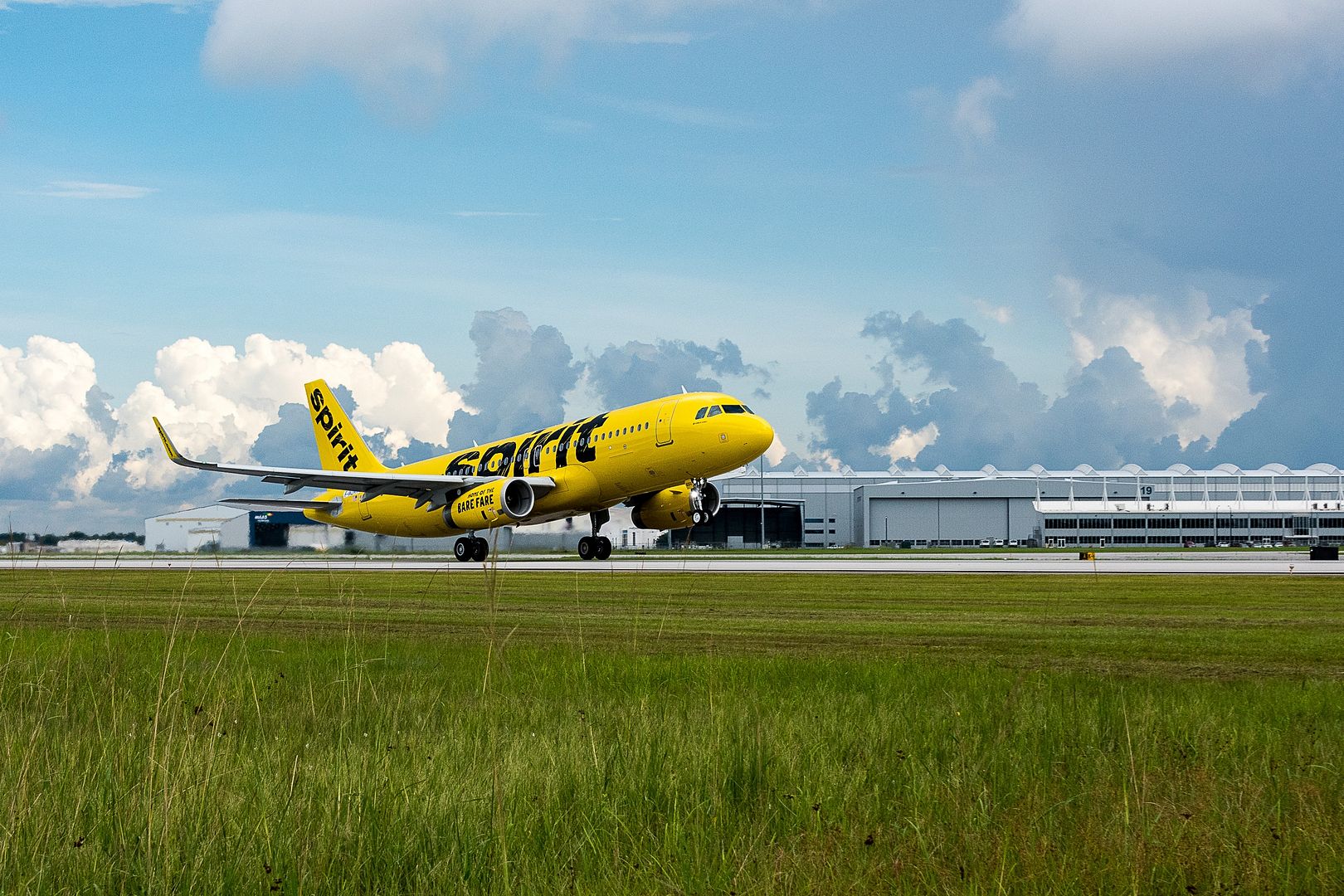
The founding member of the best-selling Airbus single-aisle family, the A320 entered airline service in April 1988 and rapidly established itself as the industry standard for passenger comfort and economy on short to medium-haul sectors. Typically seating 150 passengers in two classes, or up to 180 in a high-density layout for charter and low-cost operations, the A320 is in widespread service around the world, flying routes ranging from short commuter sectors to coast-to-coast U.S. flights. The A320 family is the world?s best-selling single aisle product line with 13,241 orders and 7,696 aircraft delivered to 297 customers worldwide (data as of July 31, 2017).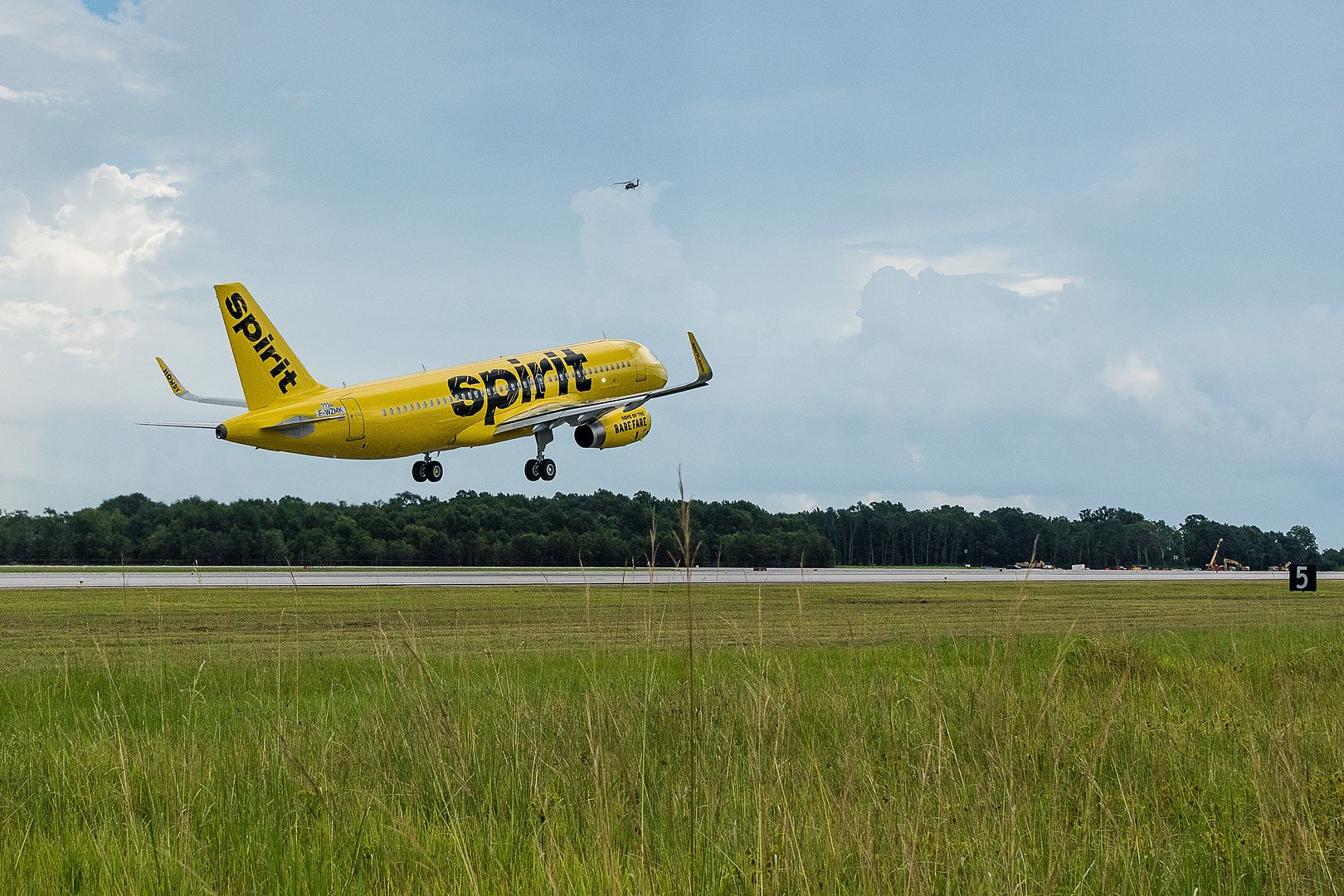
-
 Main AdminPACIFIC OCEAN (Aug. 16, 2017) An EA-18G assigned to the "Cougars" of Electronic Attack Squadron (VAQ) 139 prepares to land on the flight deck of the aircraft carrier USS Theodore Roosevelt (CVN 71). Theodore Roosevelt is underway conducting a composite training unit exercise (COMPTUEX) with its carrier strike group in preparation for an upcoming deployment. COMPTUEX tests a carrier strike group?s mission readiness and ability to perform as an integrated unit through simulated real-world scenarios. (U.S. Navy photo by Mass Communication Specialist 3rd Class Austin R. Clayton/Released)
Main AdminPACIFIC OCEAN (Aug. 16, 2017) An EA-18G assigned to the "Cougars" of Electronic Attack Squadron (VAQ) 139 prepares to land on the flight deck of the aircraft carrier USS Theodore Roosevelt (CVN 71). Theodore Roosevelt is underway conducting a composite training unit exercise (COMPTUEX) with its carrier strike group in preparation for an upcoming deployment. COMPTUEX tests a carrier strike group?s mission readiness and ability to perform as an integrated unit through simulated real-world scenarios. (U.S. Navy photo by Mass Communication Specialist 3rd Class Austin R. Clayton/Released)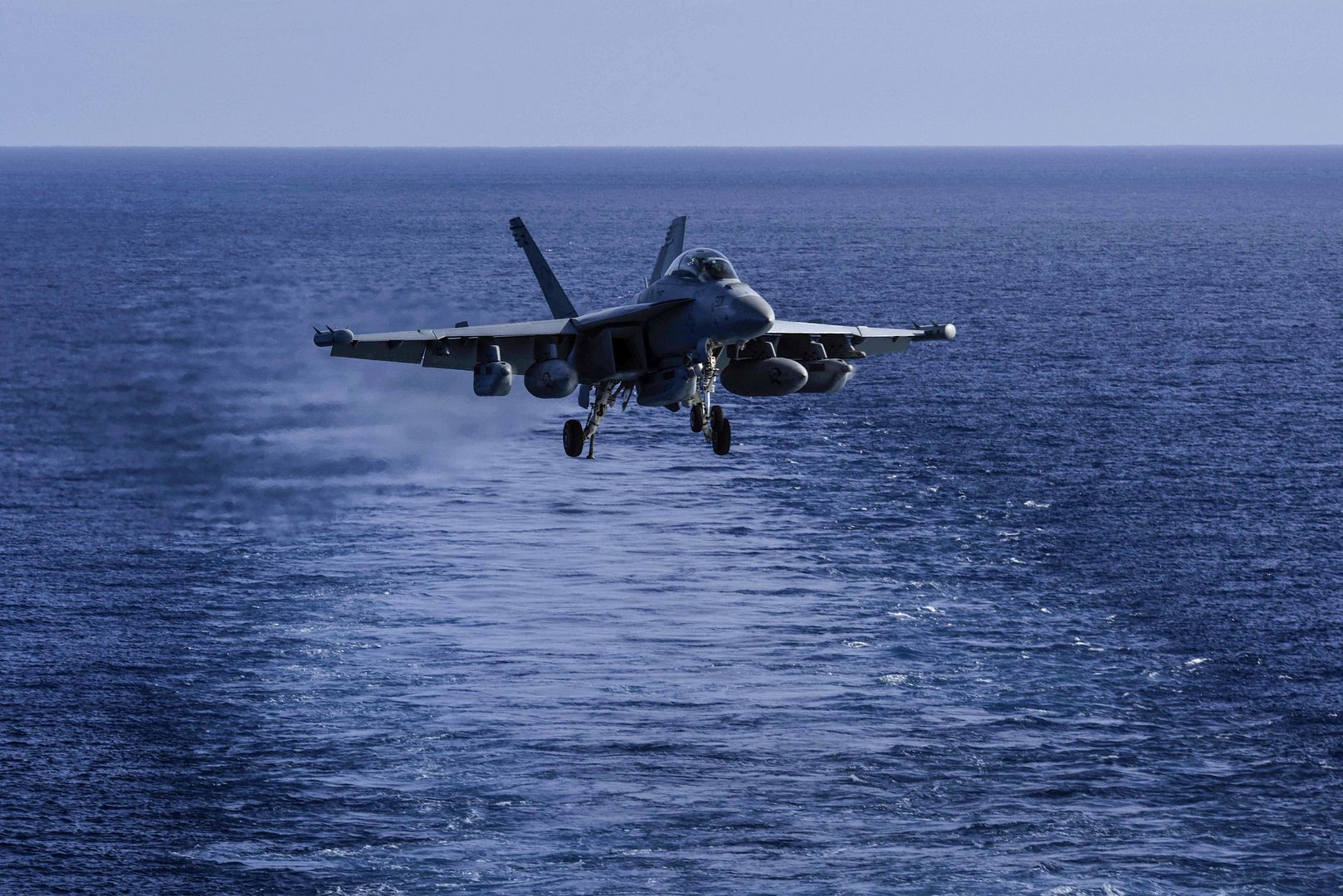
A U.S. Air Force B-1B Lancer assigned to the 37th Expeditionary Bomb Squadron, deployed from Ellsworth Air Force Base, S.D. to Andersen AFB, Guam, flies a training mission over the Pacific Ocean AUg. 16, 2017. During the mission two B-1s were joined by Japan Air Self-Defense Force f-15s in the Vicinity of the Sankaku Islands. These training flights with Japan demonstrate the solidarity and resolve we share with our allies to preserve peace and security in the Indo-Asia-Pacific. (U.S. Air Force photo's/Staff Sgt. Joshua Smoot)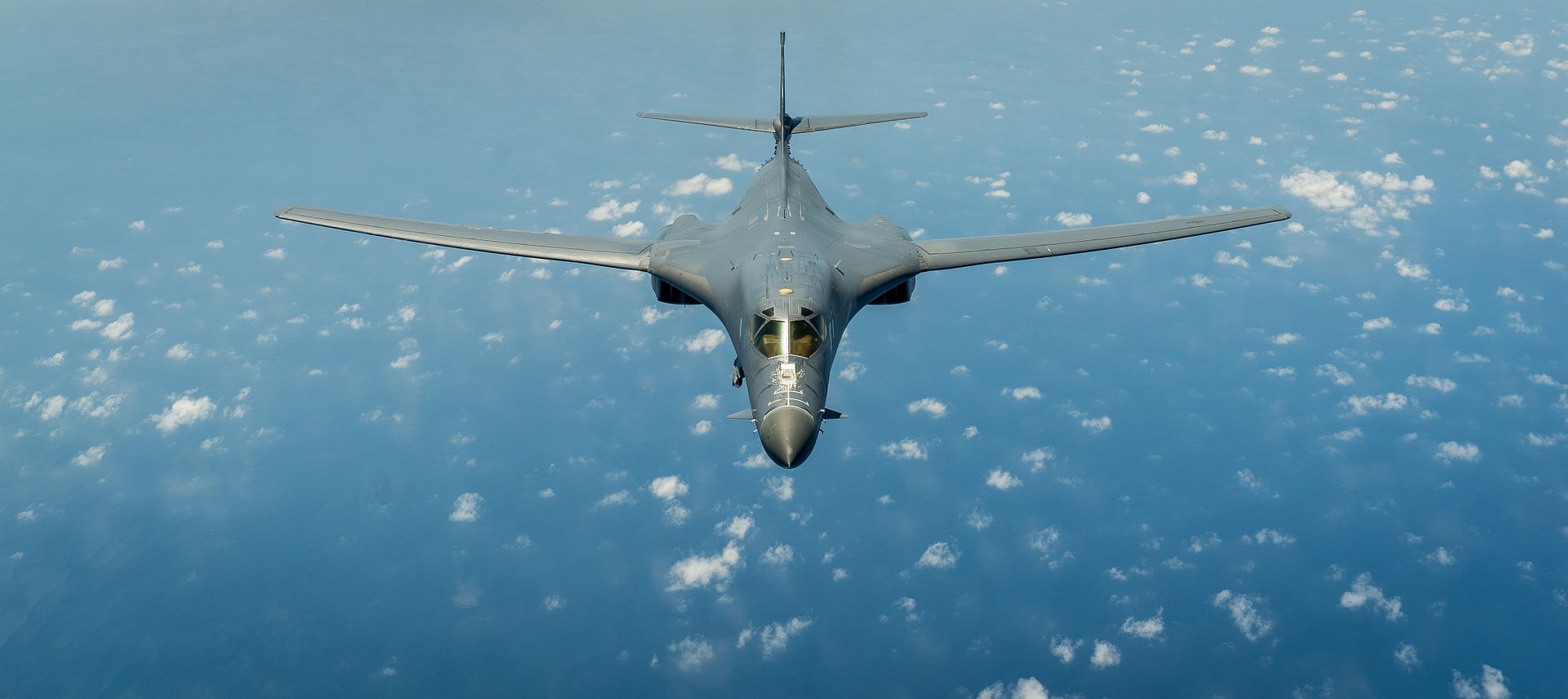

A U.S. Air Force C-130 Hercules assigned to the 908th Airlift Wing, Maxwell Air Force Base, Ala., takes off at Young Air Assault Strip, Fort McCoy, Wis., Aug. 16, 2017, as part of exercise Patriot Warrior. More than 600 Reserve Citizen Airmen and over 10,000 soldiers, sailors, Marines and international partners converged on the state of Wisconsin to support a range of interlinked exercises including Patriot Warrior, Global Medic, CSTX, Diamond Saber, and Mortuary Affairs Exercise (MAX). Patriot Warrior is Air Force Reserve Command's premier exercise, providing an opportunity for Reserve Citizen Airmen to train with joint and international partners in airlift, aeromedical evacuation and mobility support. This exercise is intended to test the ability of the Air Force Reserve to provide combat-ready forces to operate in dynamic, contested environments and to sharpen Citizen Airmen's skills in supporting combatant commander requirements.(U.S. Air Force photo by Senior Airman Christopher Dyer)
The Canadian Armed Forces (CAF) is sending about 135 CAF personnel, and four Royal Canadian Air Force CF-188 Hornets, to Constanta, Romania, to participate in NATO enhanced Air Policing from September to December 2017.
?The Canadian Armed Forces is committed to the principle of collective defence of the Alliance, which is at the very heart of NATO?s founding treaty,? said Lieutenant-General Steve Bowes, Commander of Canadian Joint Operations Command. ?Our military personnel are well-trained and committed to contribute to NATO enhanced Air Policing that ensures the integrity of Allies? airspace.
?They are proud to work on behalf of Canadians, projecting the best of what Canada has to offer.?
This mission is part of Operation Reassurance, Canada?s contribution to NATO assurance and deterrence measures. Air Task Force Romania will augment the Romanian Air Force?s capability to preserve the integrity of its airspace.
"An Air Task Force is an agile and flexible organization that is always ready to employ air power and provide support wherever and whenever Canada requires,? said Lieutenant-Colonel Mark Hickey, Commander, Air Task Force Romania. ?Our Air Task Force in Romania is proud to participate in the cooperative defence activities that support NATO?s enhanced Air Policing.?
NATO Air Policing has been part of Alliance assurance and deterrence measures since 2014. These measures demonstrate the collective resolve of Allies to protect NATO territory and populations.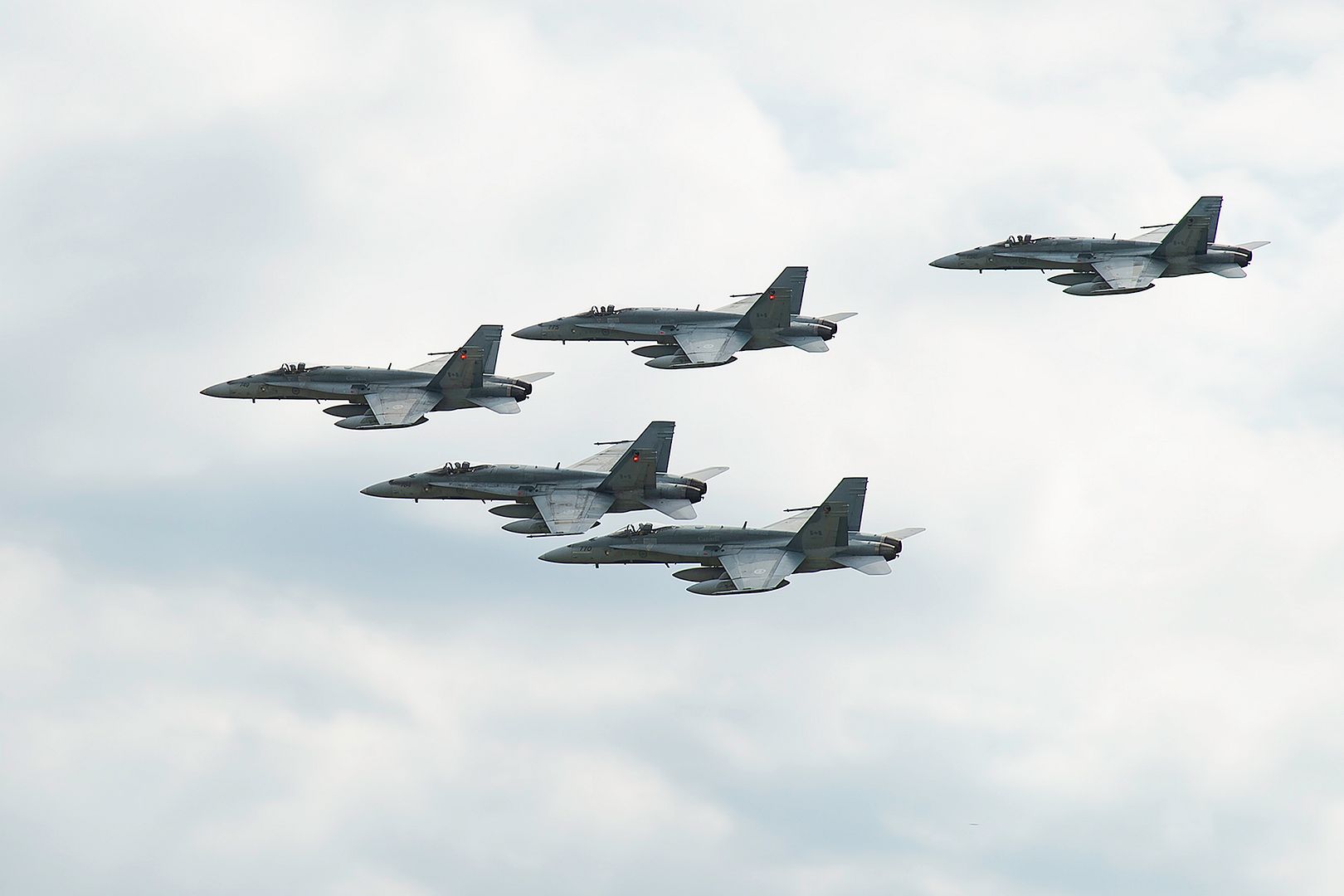
-
 Main AdminA German air force Tornado and an F-16 Fighting Falcon assigned to the 314th Fighter Squadron fly in formation together during the last joint flying mission at Holloman Air Force Base, Aug. 17, 2017. The GAF has entered its final stage of departure, however they will not complete their departure from Holloman AFB until mid 2019. (U.S. Air Force photo's by Maj. Bradford "Emcon" Brizek)
Main AdminA German air force Tornado and an F-16 Fighting Falcon assigned to the 314th Fighter Squadron fly in formation together during the last joint flying mission at Holloman Air Force Base, Aug. 17, 2017. The GAF has entered its final stage of departure, however they will not complete their departure from Holloman AFB until mid 2019. (U.S. Air Force photo's by Maj. Bradford "Emcon" Brizek)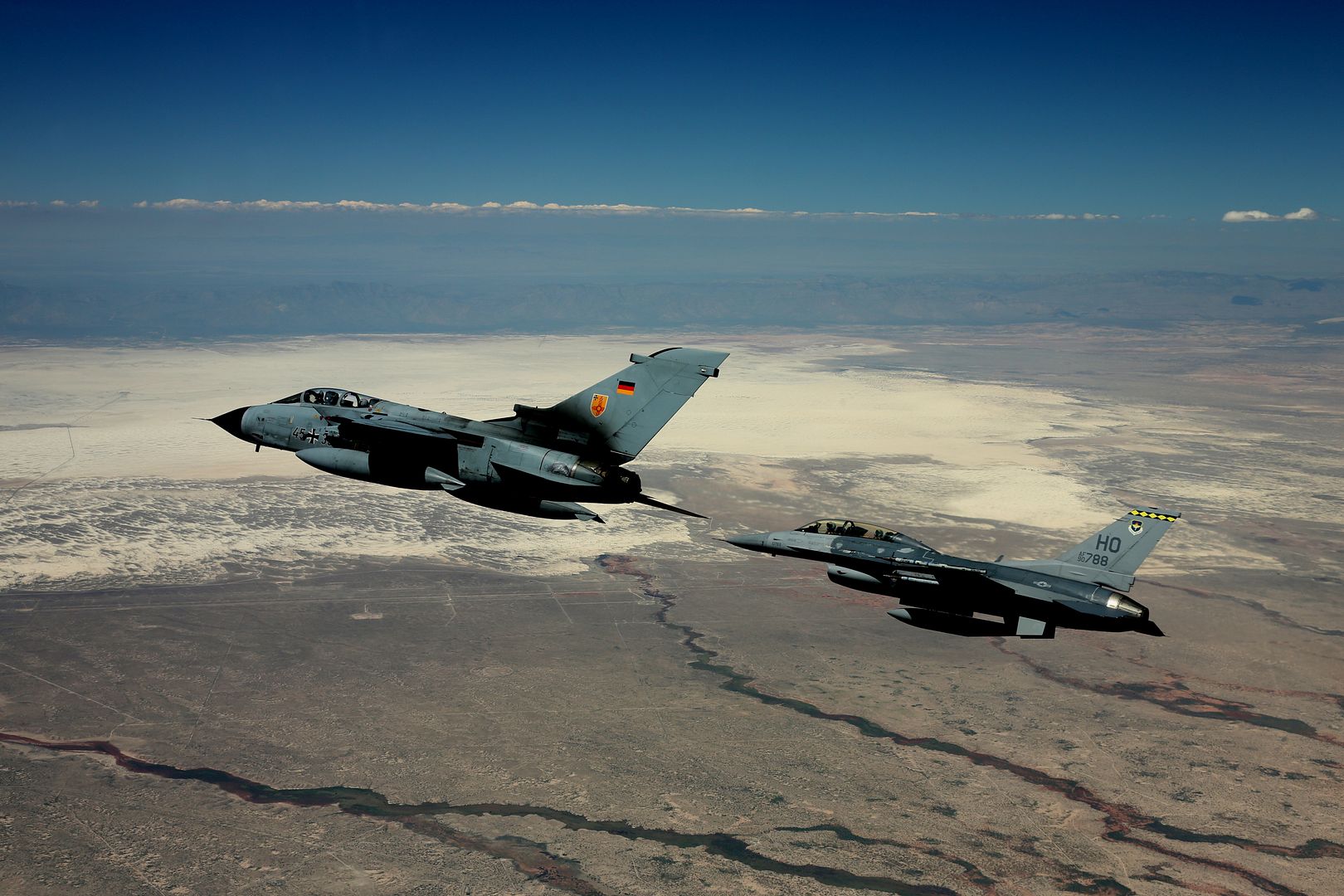
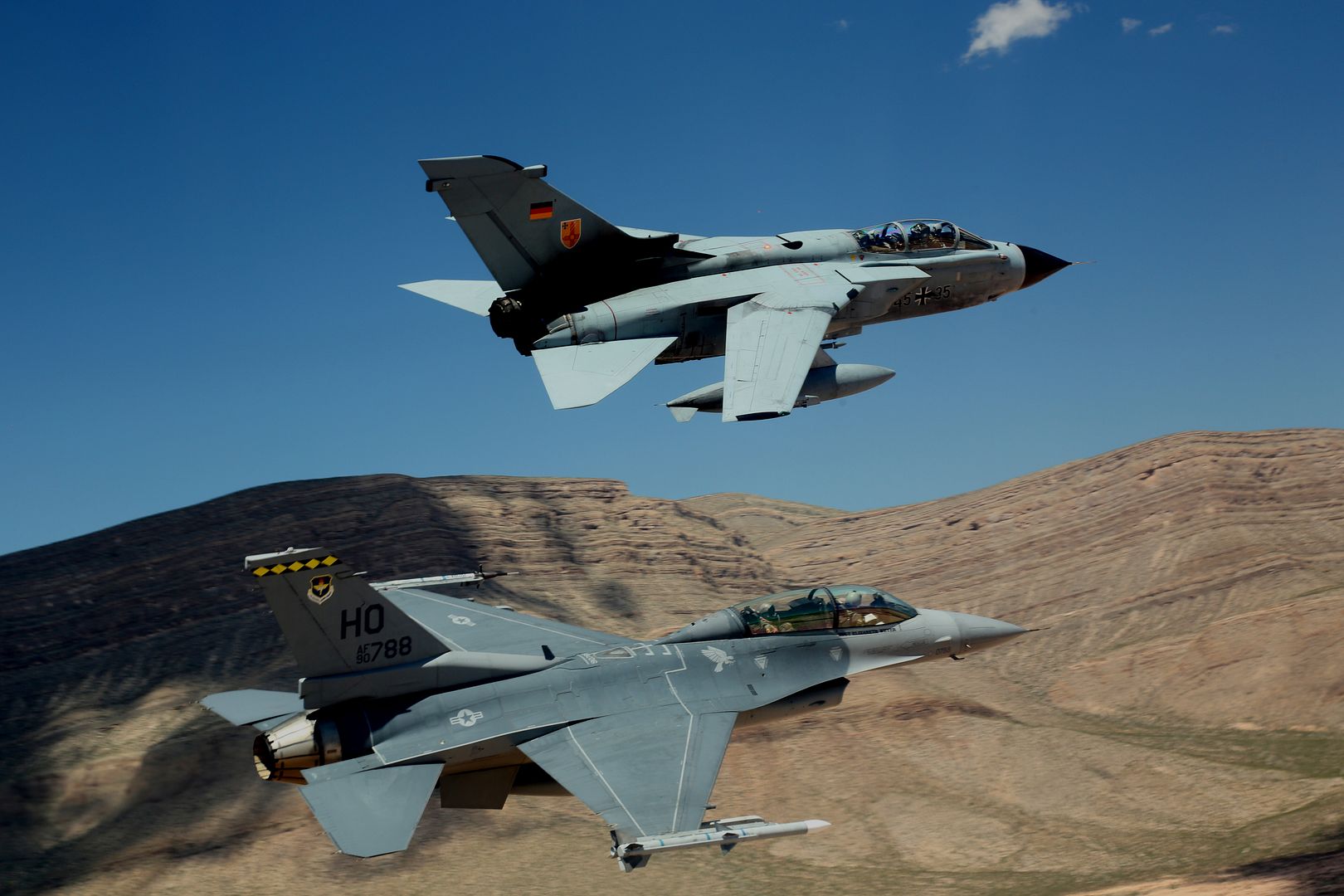
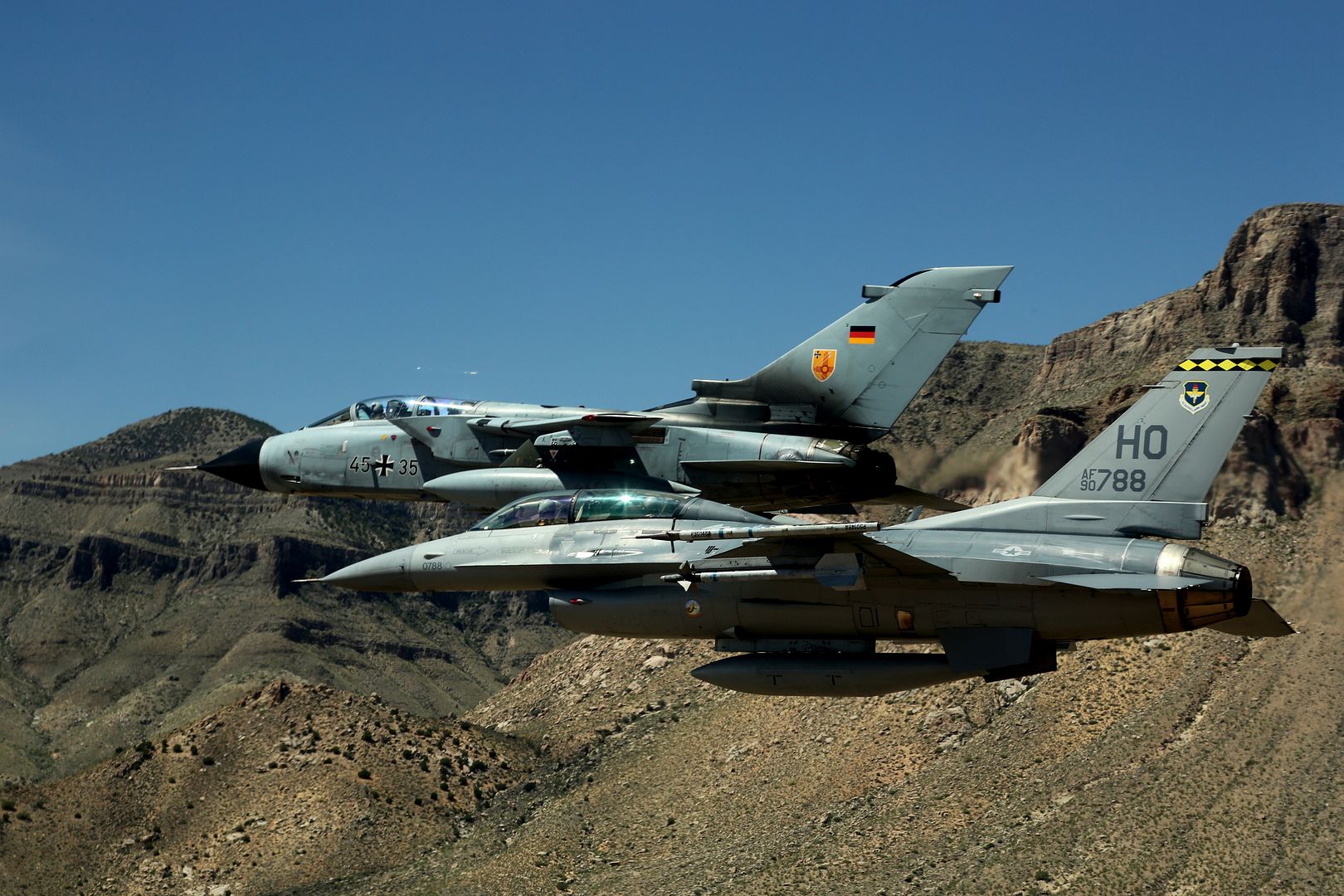
An RC-135V/W Rivet Joint flies above Southwest Asia in support of Operation Inherent Resolve Aug. 14, 2017. The RC-135V/W reconnaissance aircraft supports theater and national level consumers with near real time on-scene intelligence collection, analysis and dissemination capabilities. (U.S. Air Force photo's by Staff Sgt. Michael Battles)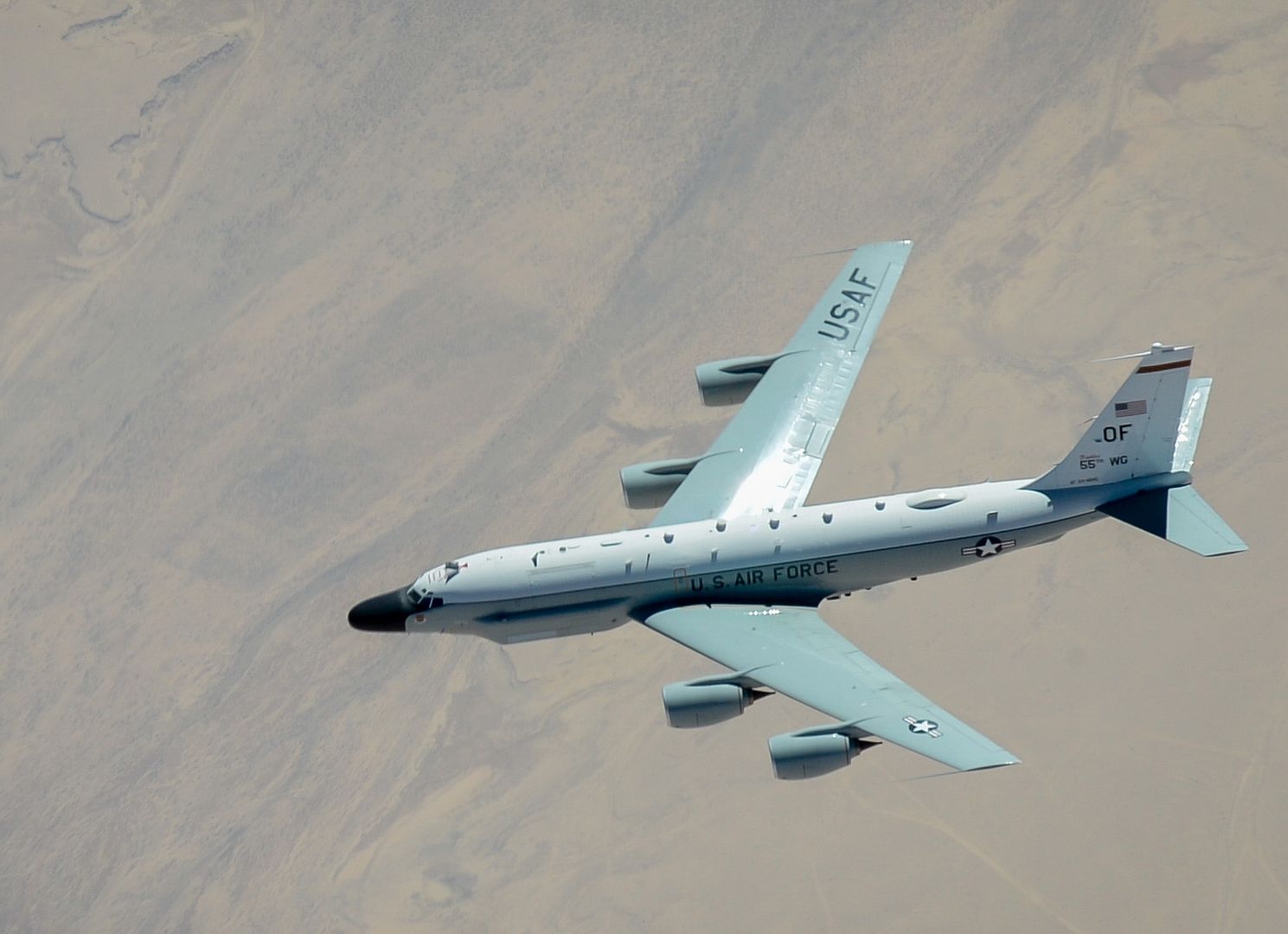
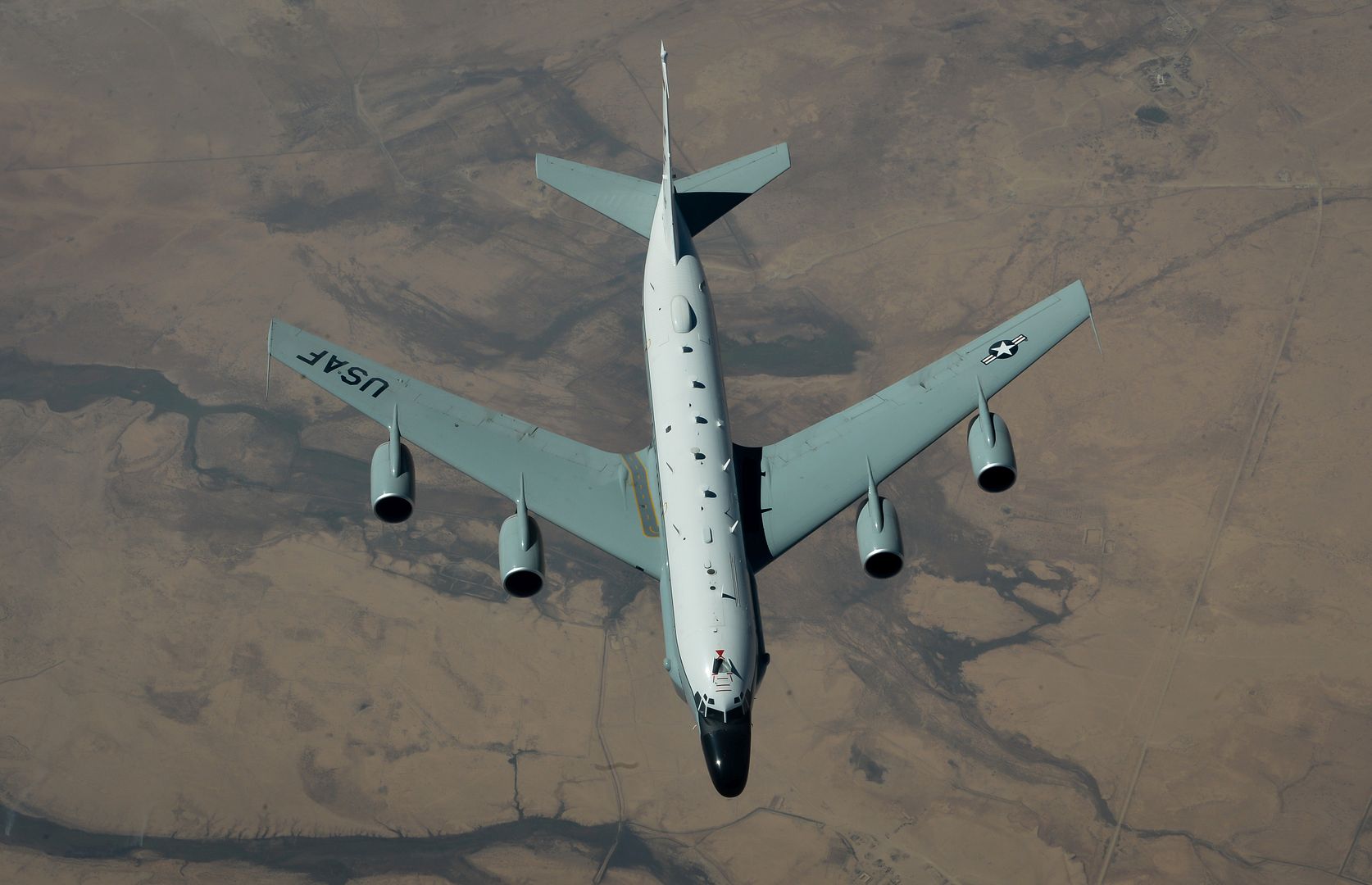
Two Royal Air Force FGR4 Typhoon arrive to receive fuel from a KC-10 Extender during a mission in support of Operation Inherent Resolve, Aug. 7, 2017. The Typhoon provides the RAF with a highly capable and extremely agile multi-role combat aircraft, capable of being deployed in the full spectrum of air operations, including air policing, peace support, and high intensity conflict. (U.S. Air Force photo by Staff Sgt. Trevor T. McBride)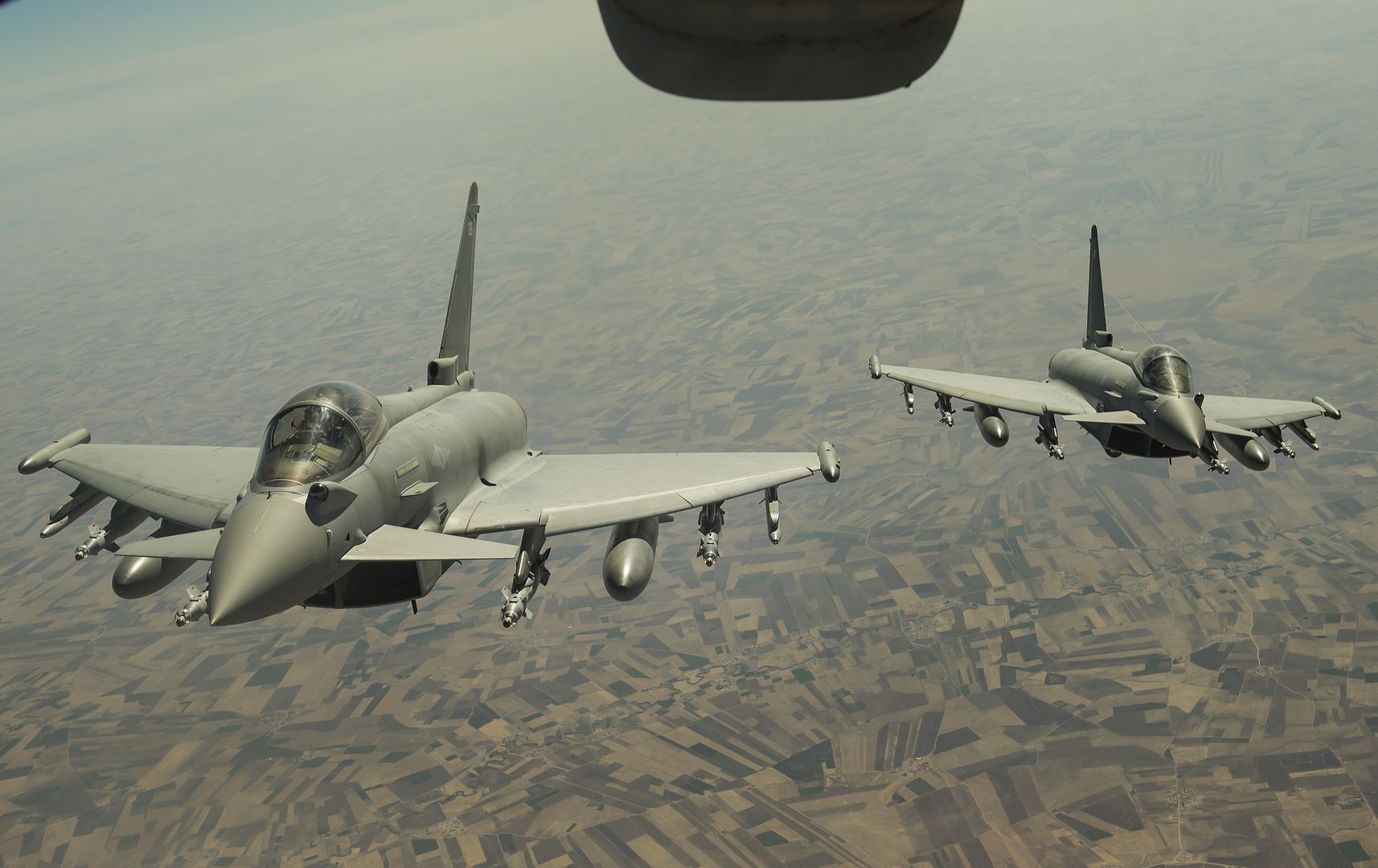
A U.S. Marine F/A-18 Hornet departs after receiving fuel from a KC-135 Stratotanker assigned to the 340th Expeditionary Air Refueling Squadron during a mission in support of Operation Inherent Resolve Aug. 15, 2017. The F-18 is capable across the full mission spectrum: air superiority, fighter escort, reconnaissance, aerial refueling, close air support, air defense suppression as well as day and night precision strikes. (U.S. Air Force photo's by Staff Sgt. Michael Battles)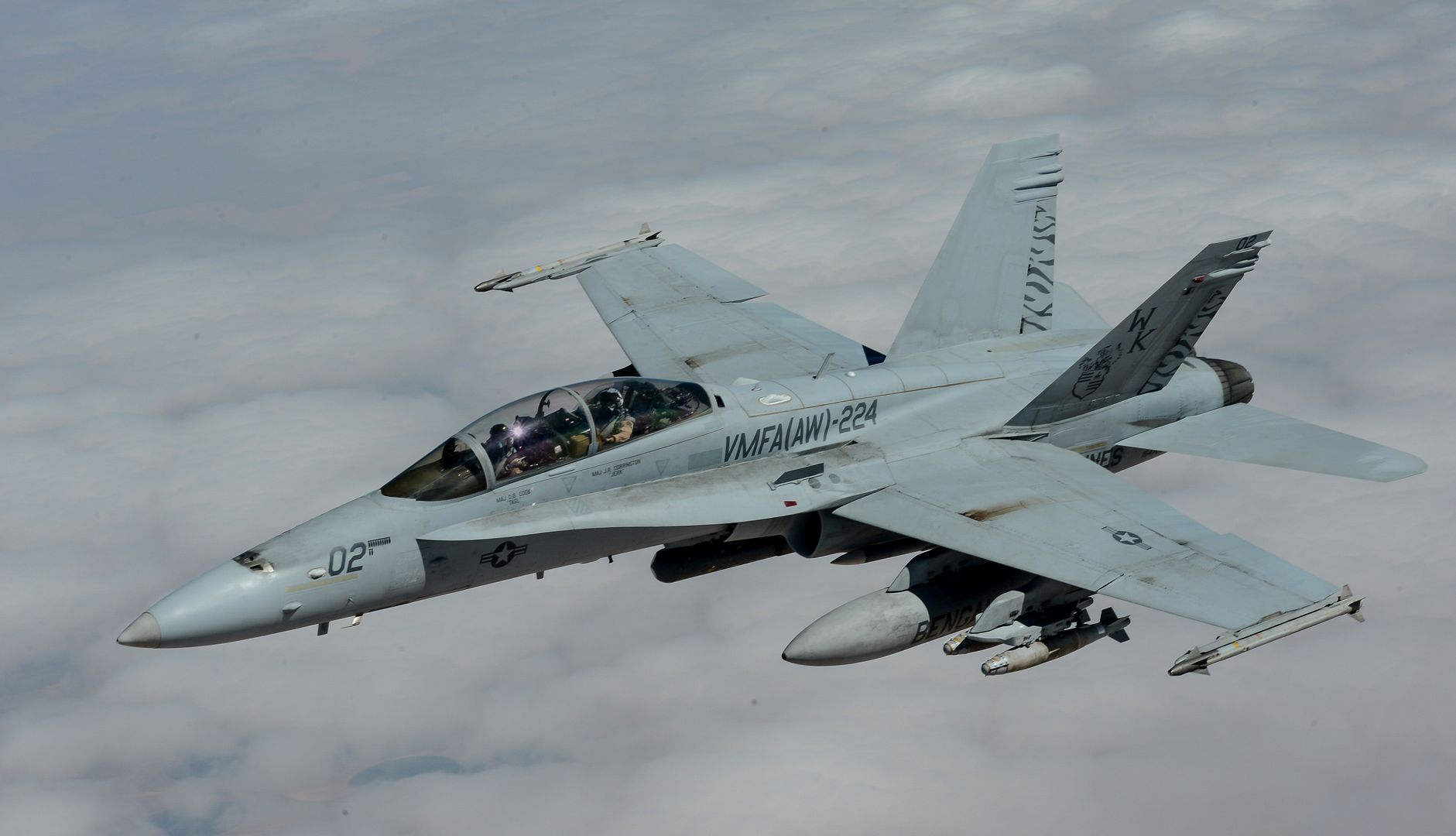
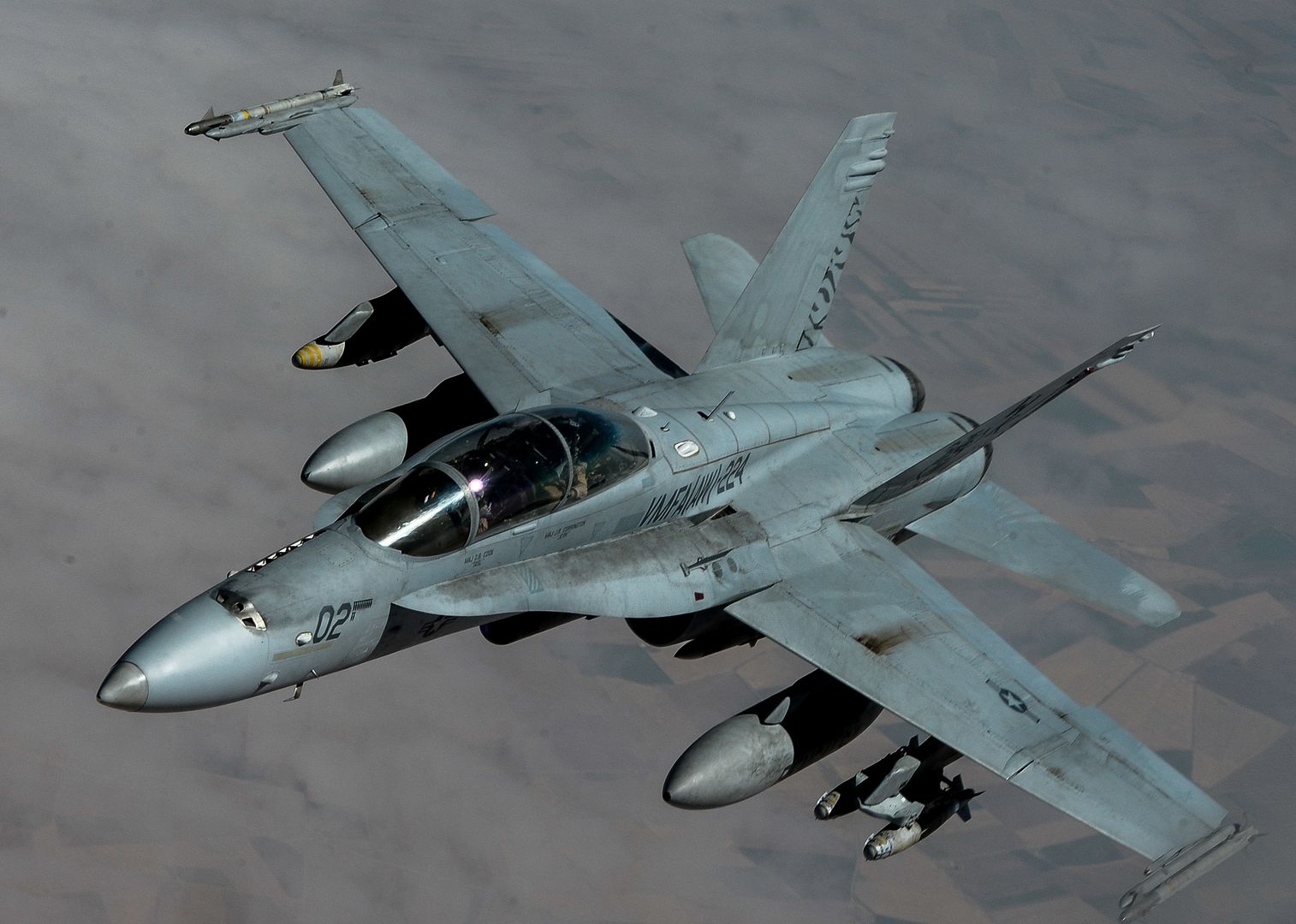
Maxwell AFB, Ala. - Col. William L. Sparrow, Vice Commander of the Alabama Air National Guard 187th Fighter Wing discusses the cockpit of their "Red Tail" with Lt. Col. (Ret) Harold Brown of the famed Tuskegee Airmen and Col. (Ret) Roosevelt J. Lewis Jr. during a tour of the hangar housing some of their F-16s.(U.S. Air Force photo by Trey Ward/Released)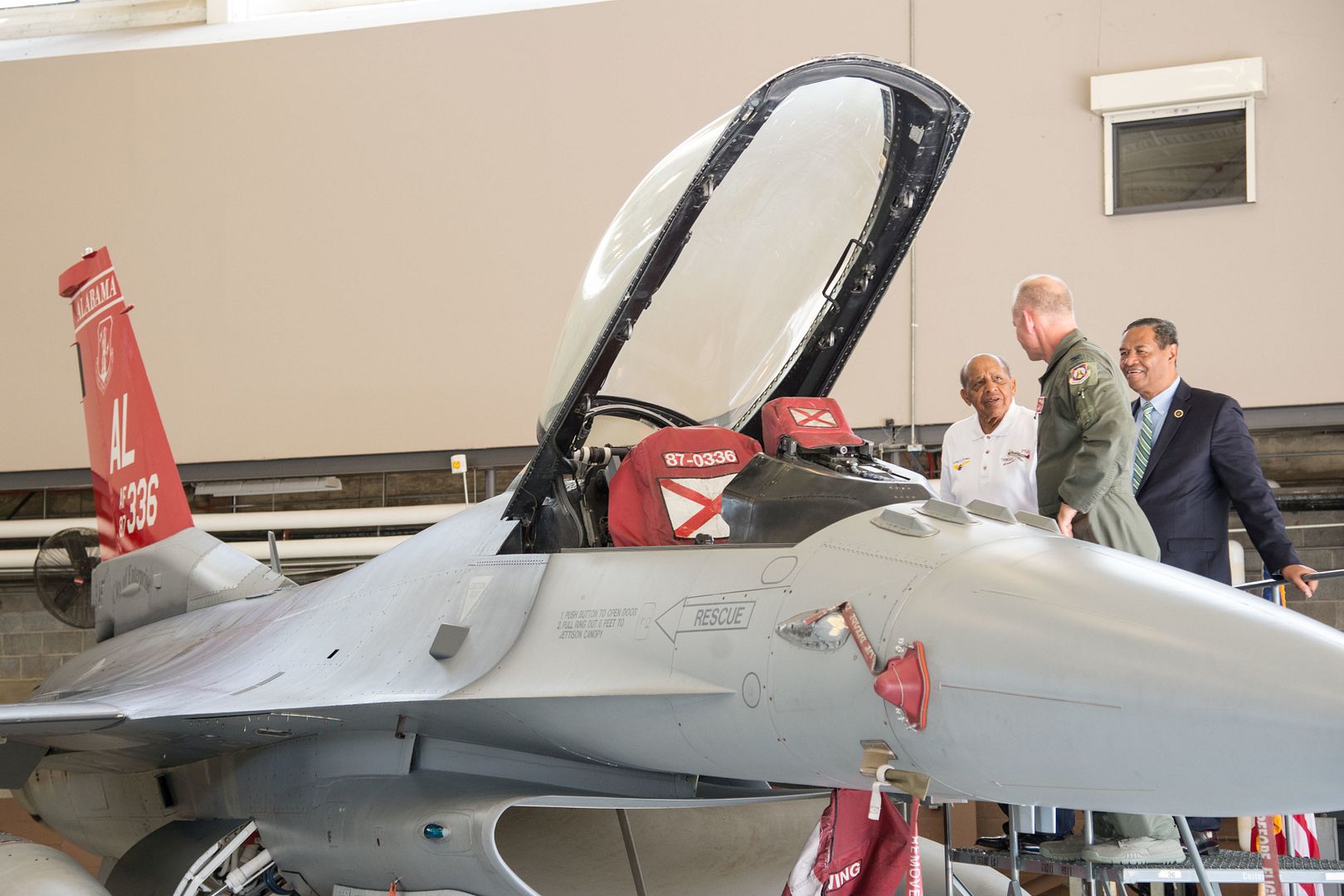
An Air National Guard F-16 Fighting Falcon from Kelly Field, Texas, flies in air space above Hill Air Force Base, Utah, Aug. 17, 2017. The F-16 flew during Combat Archer, an evaluation exercise which tests and validates the performance of crews, pilots, and their technology while deploying precision-guided munitions. (Photo courtesy Scott Wolff)
A 142nd Fighter Wing F-15 Eagle departs from Portland Air National Guard Base, Ore., August 18, 2017. The F-15s flew out in a six ship formation to complete standard readiness training as part of Portland ANG's mission to provide alert sovereignty of the Pacific Northwest. (U.S. Air Force photo by Tech. Sgt. Steph Sawyer)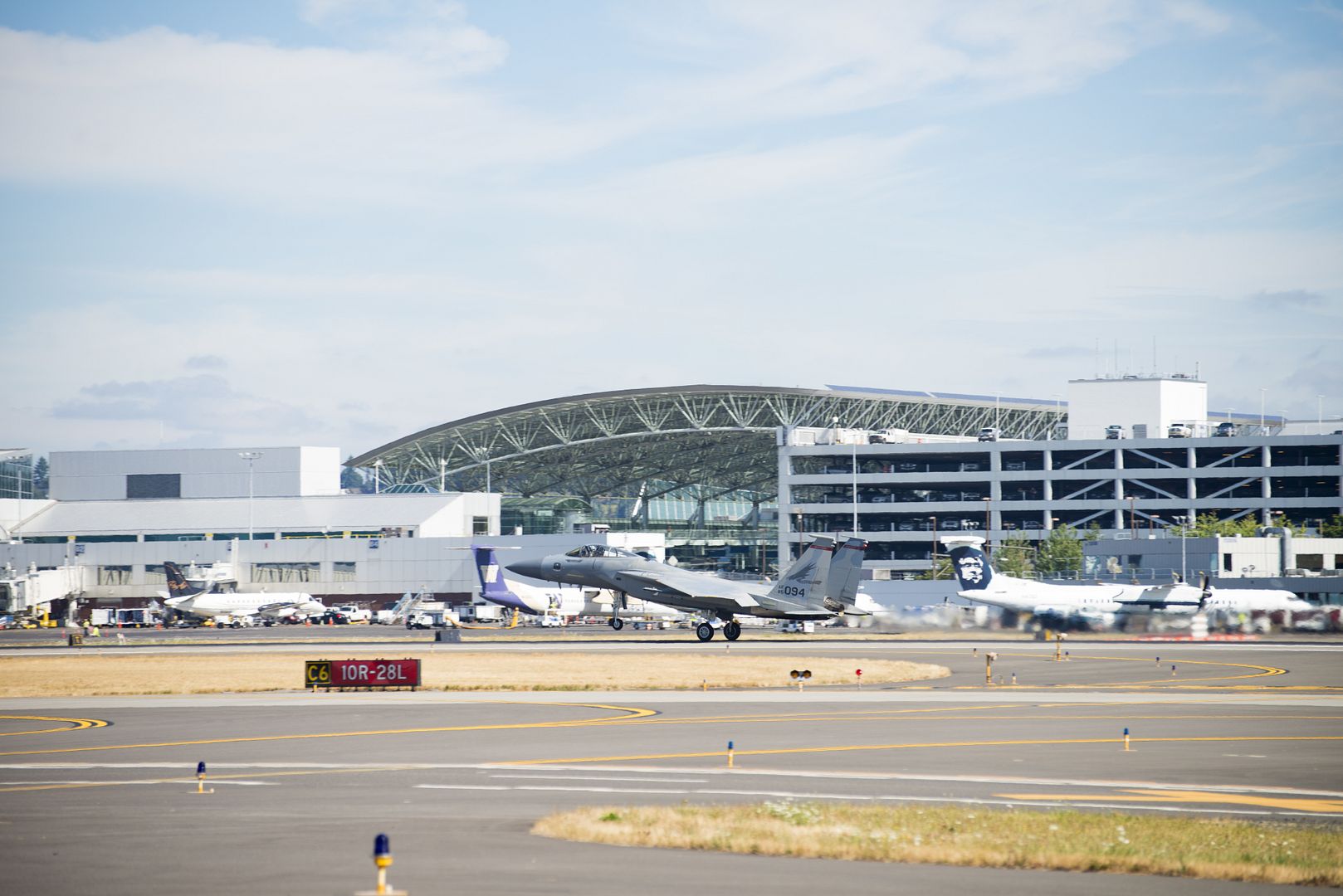
PACIFIC OCEAN (Aug. 16, 2017) An MV-22 Osprey tilt rotor aircraft approaches the flight deck of the Wasp-class amphibious assault ship USS Essex (LHD 2). Essex is underway conducting sea trials and flight deck certifications off the coast of Southern California. (U.S. Navy photo by Mass Communication Specialist 2nd Class Donavan K. Patubo)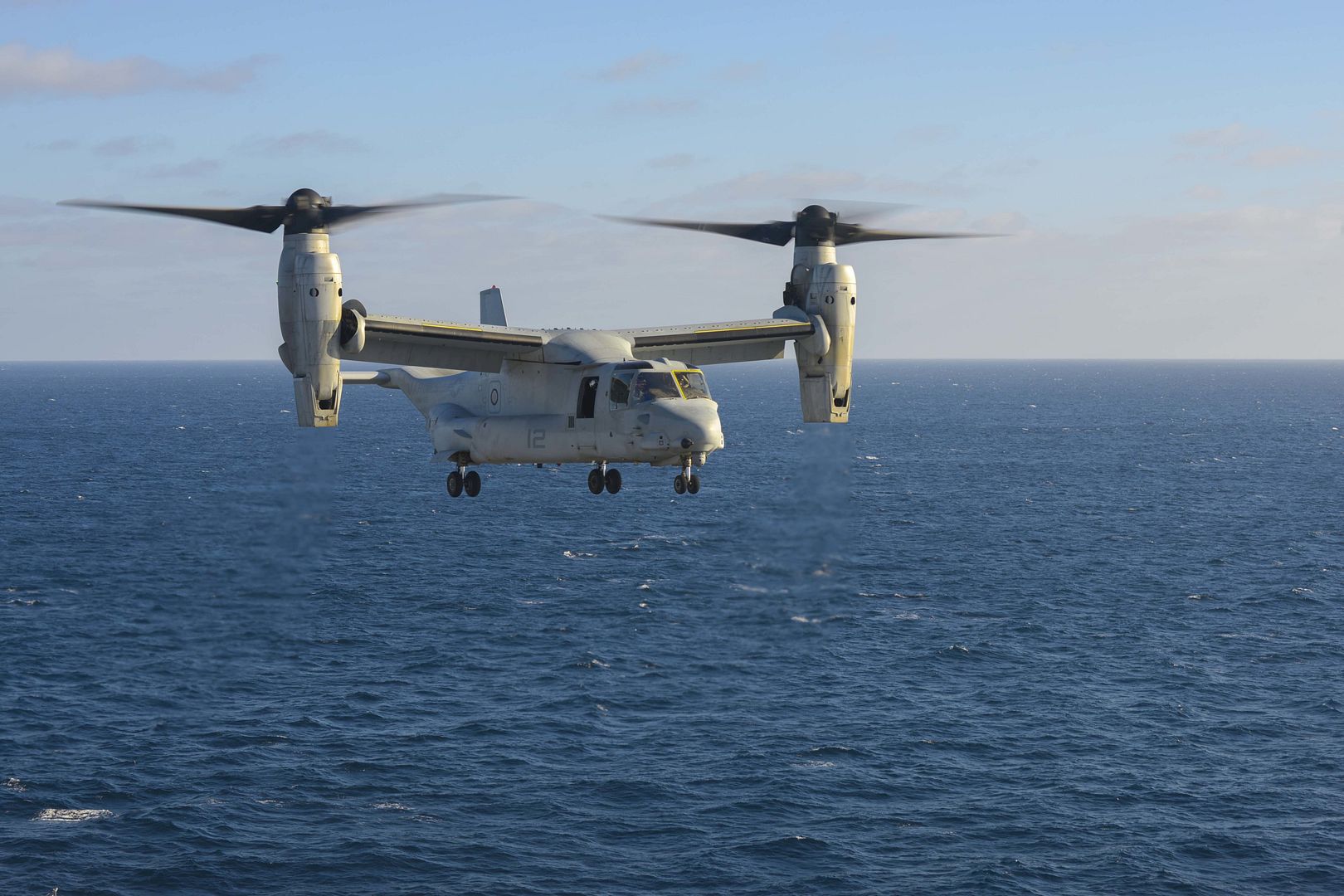
PACIFIC OCEAN (Aug. 16, 2017) An MV-22 Osprey tilt rotor aircraft departs the flight deck of the Wasp-class amphibious assault ship USS Essex (LHD 2). Essex is underway conducting sea trials and flight deck certifications off the coast of Southern California. (U.S. Navy photo by Mass Communication Specialist 2nd Class Donavan K. Patubo)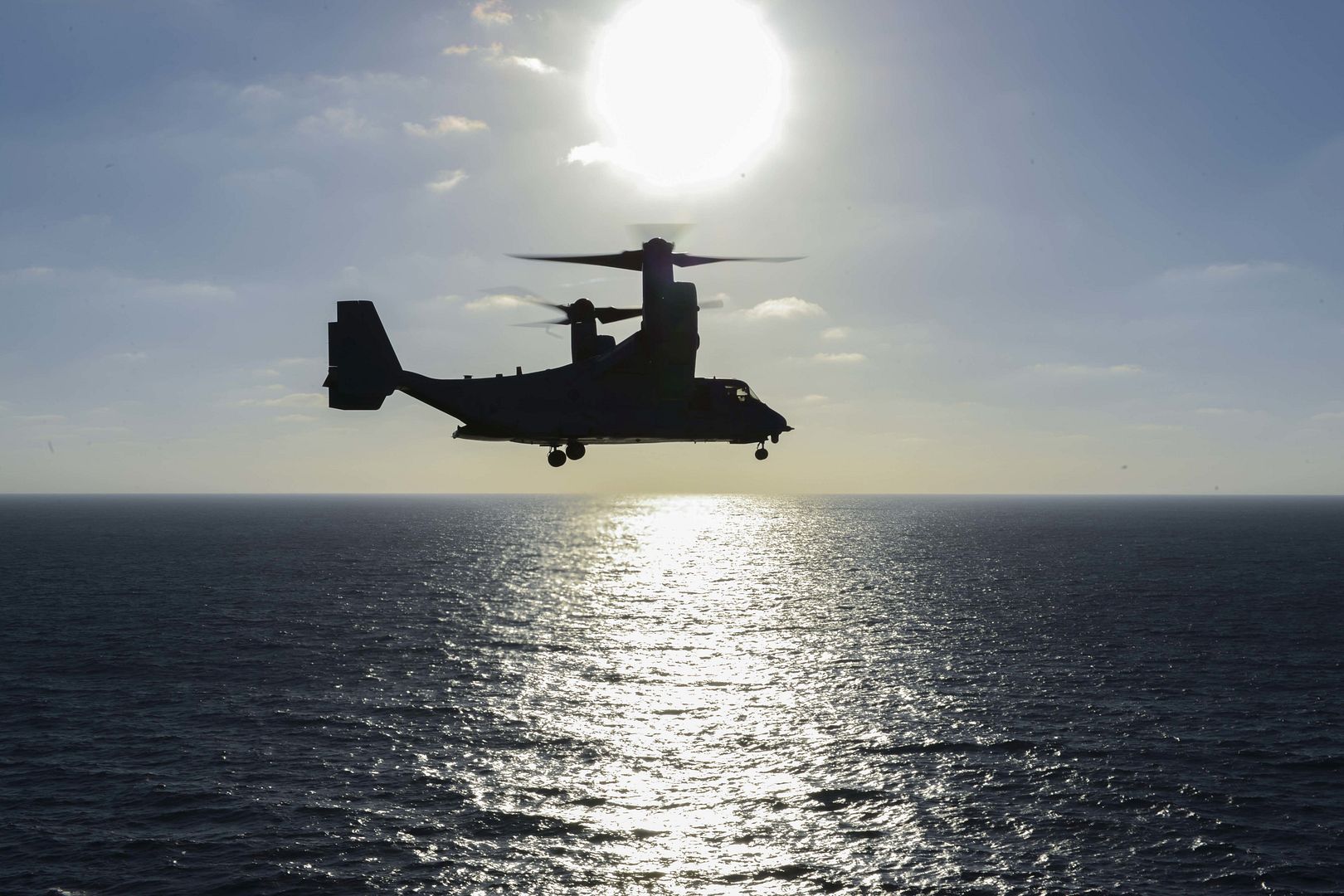
A U.S. Marine Corps KC-130J Hercules with Marine Aerial Refueler Transport Squadron (VMGR) 152, sits on a ramp prior to set up for night air delivered ground refueling during unit-level training Evergreen in Salem, Oregon, Aug. 17, 2017. Aircrew Marines ran hoses from the squadron?s KC-130J Hercules in a tactical manner, which allowed aircraft to taxi in, receive fuel and continue on their way with no delay. Air delivered ground refueling offers a mobile deployable gas station to austere locations for units who don?t have readily available resources near them. (U.S. Marine Corps photo by Cpl. Joseph Abrego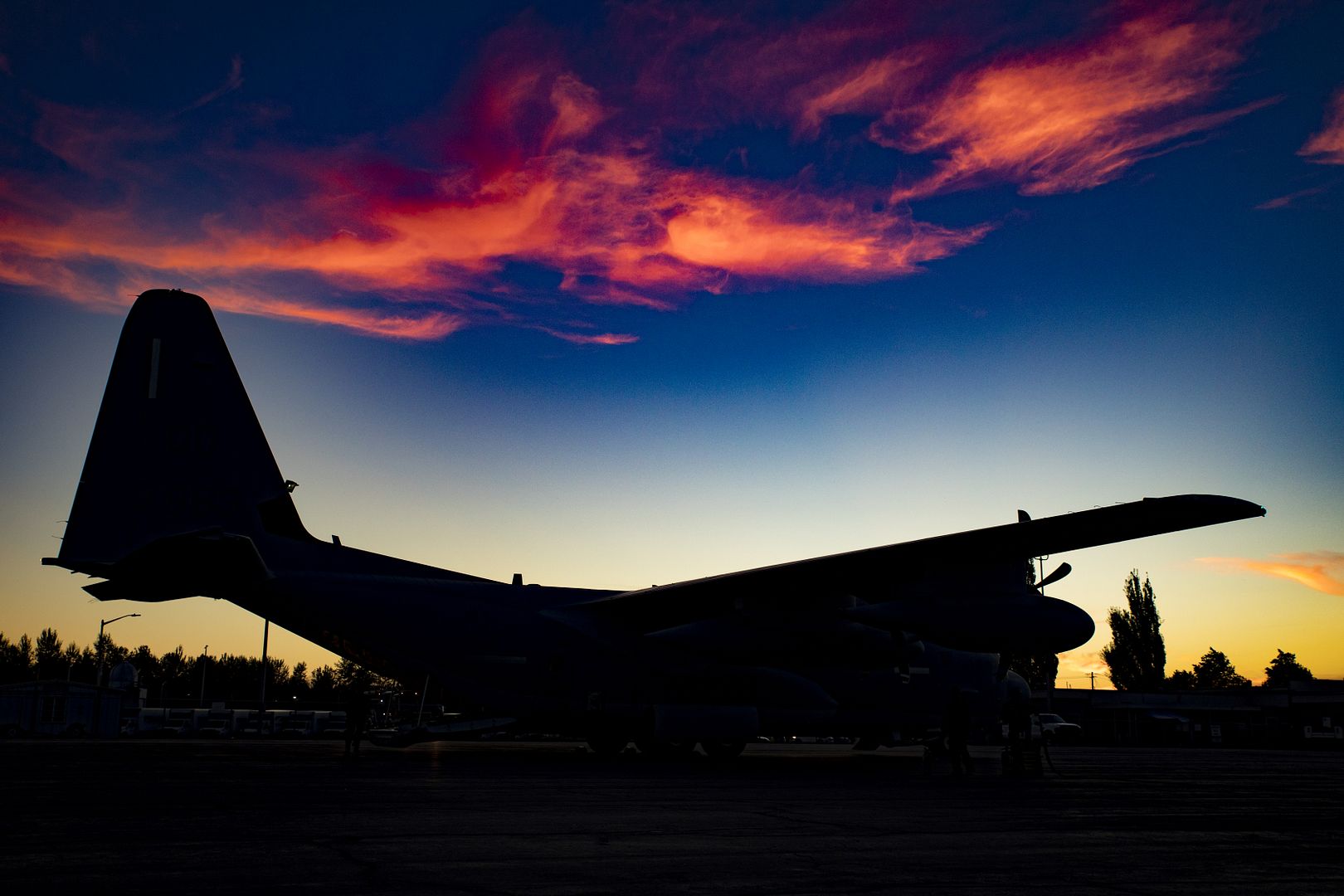
Post a reply
- Go to Previous topic
- Go to Next topic
- Go to Welcome
- Go to Introduce Yourself
- Go to General Discussion
- Go to Screenshots, Images and Videos
- Go to Off topic
- Go to Works in Progress
- Go to Skinning Tips / Tutorials
- Go to Skin Requests
- Go to IJAAF Library
- Go to Luftwaffe Library
- Go to RAF Library
- Go to USAAF / USN Library
- Go to Misc Library
- Go to The Ops Room
- Go to Made in Germany
- Go to Campaigns and Missions
- Go to Works in Progress
- Go to Juri's Air-Raid Shelter
- Go to Campaigns and Missions
- Go to Works in Progress
- Go to Skinpacks
- Go to External Projects Discussion
- Go to Books & Resources
